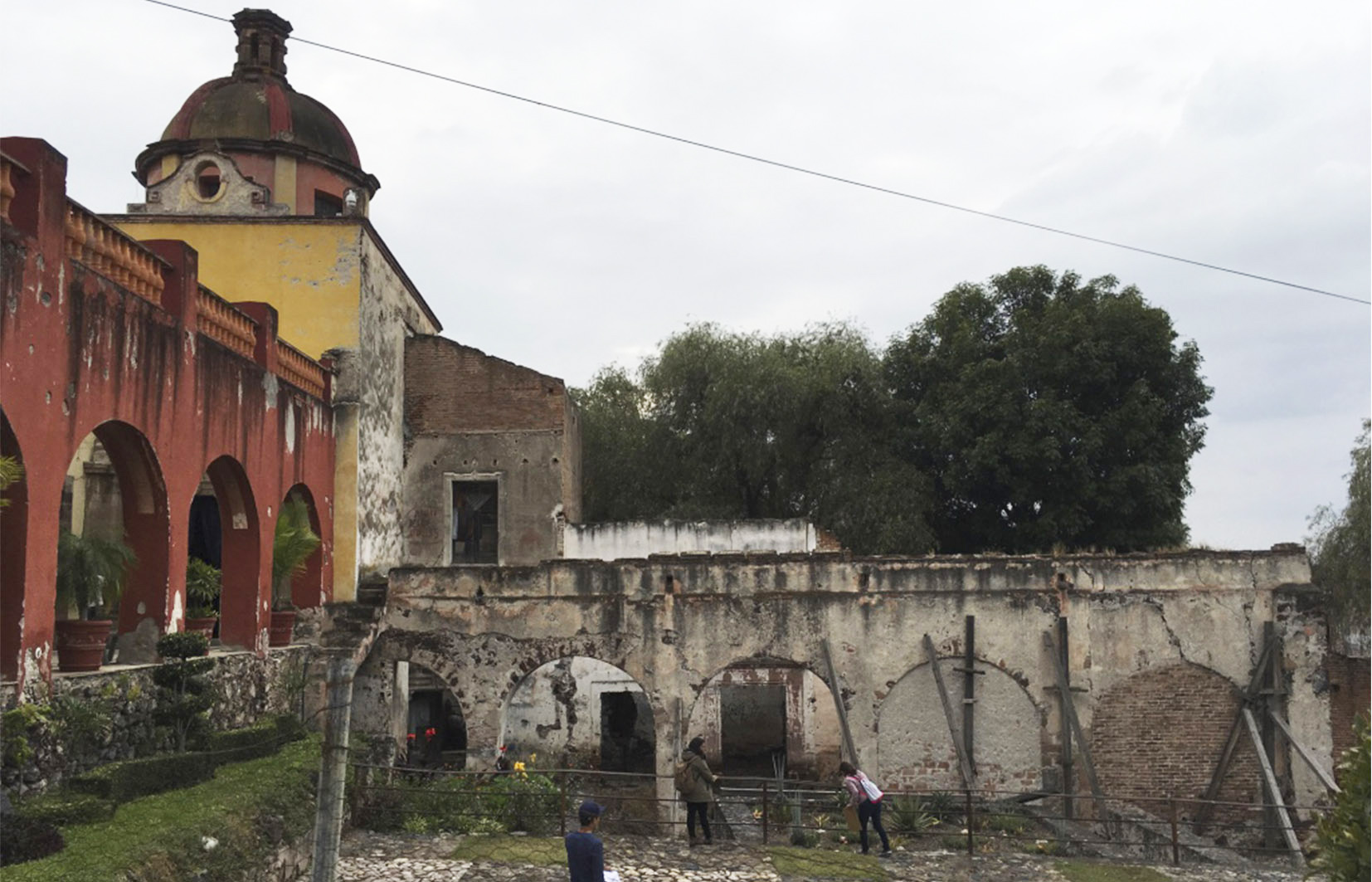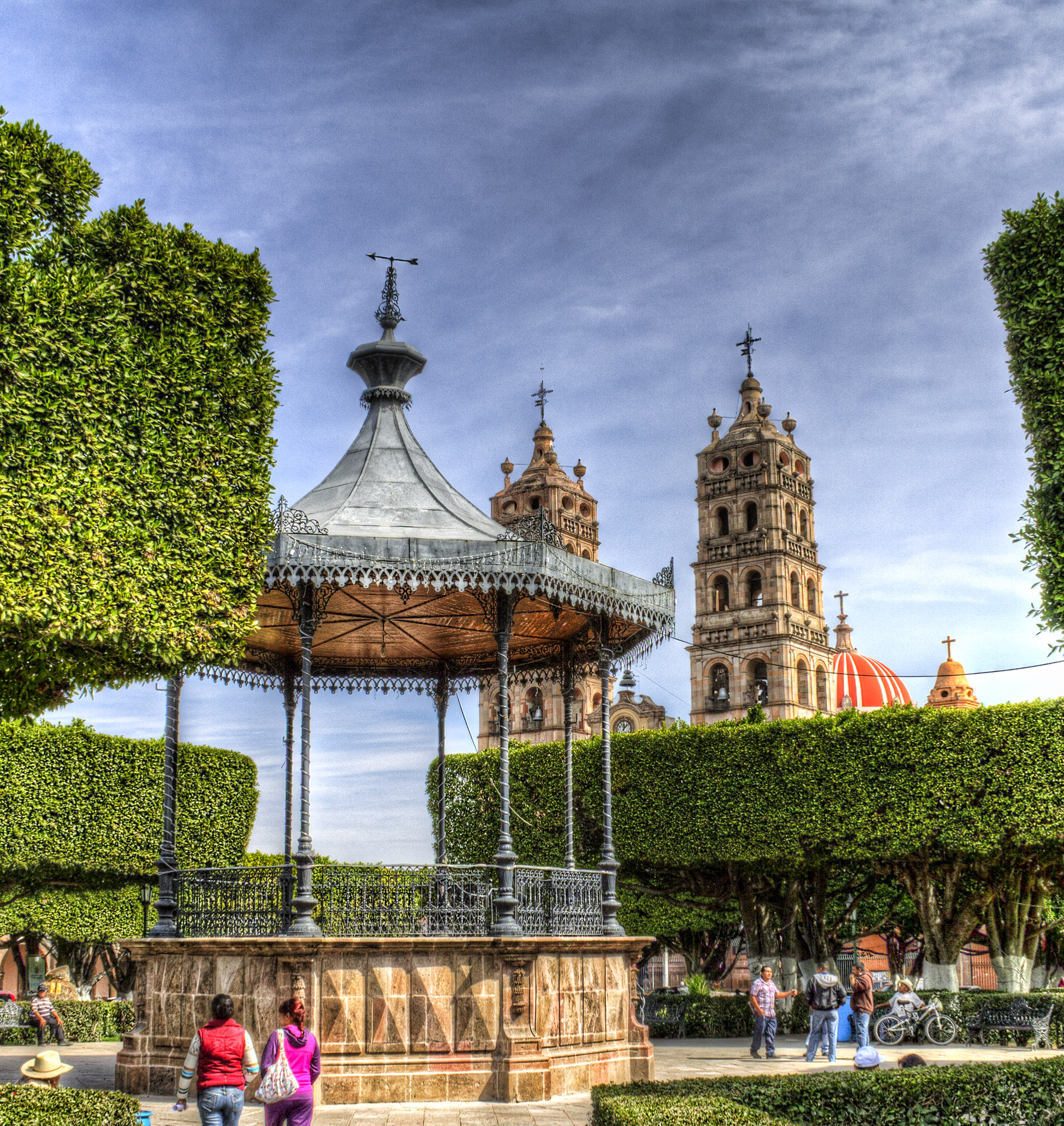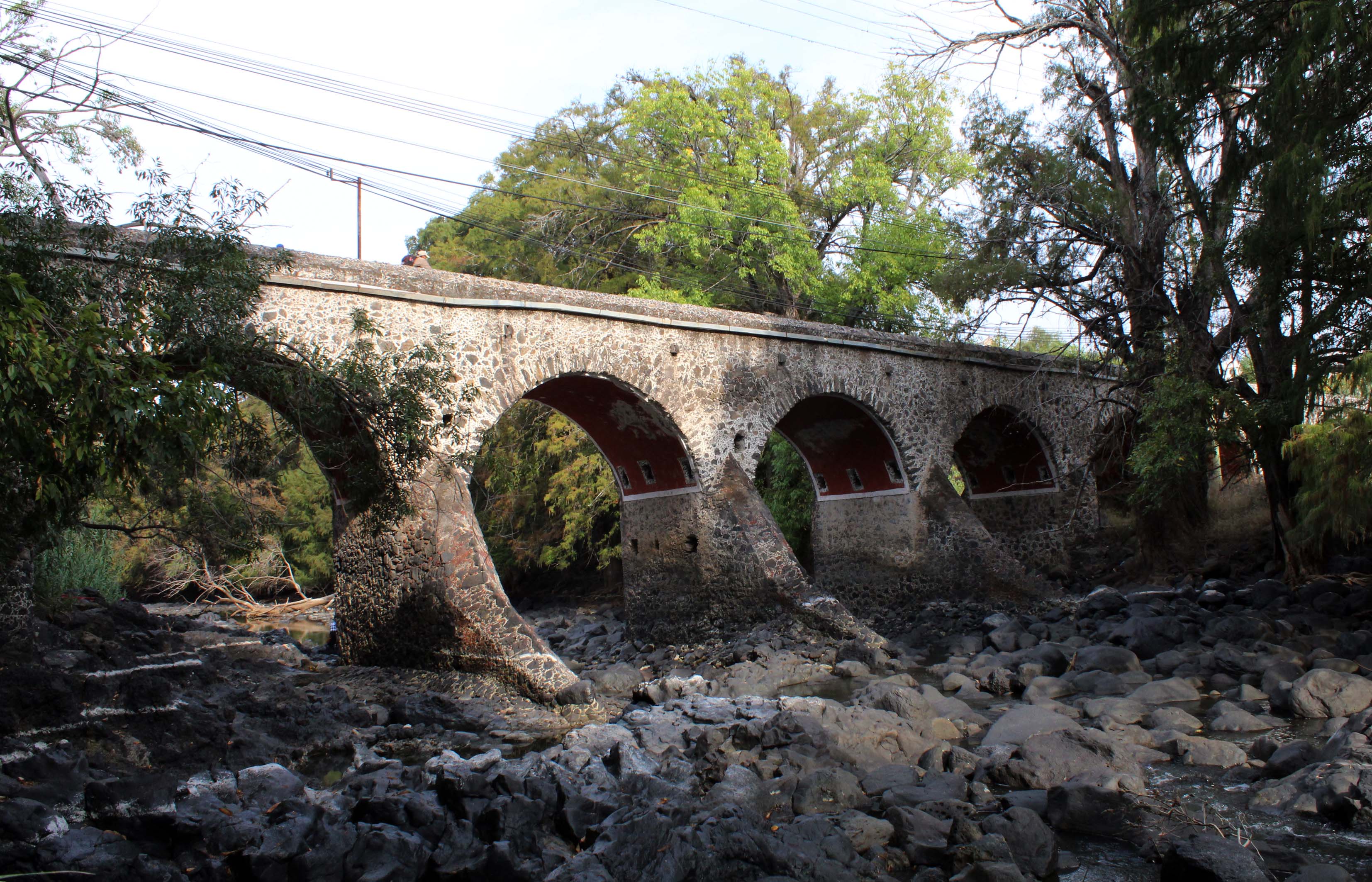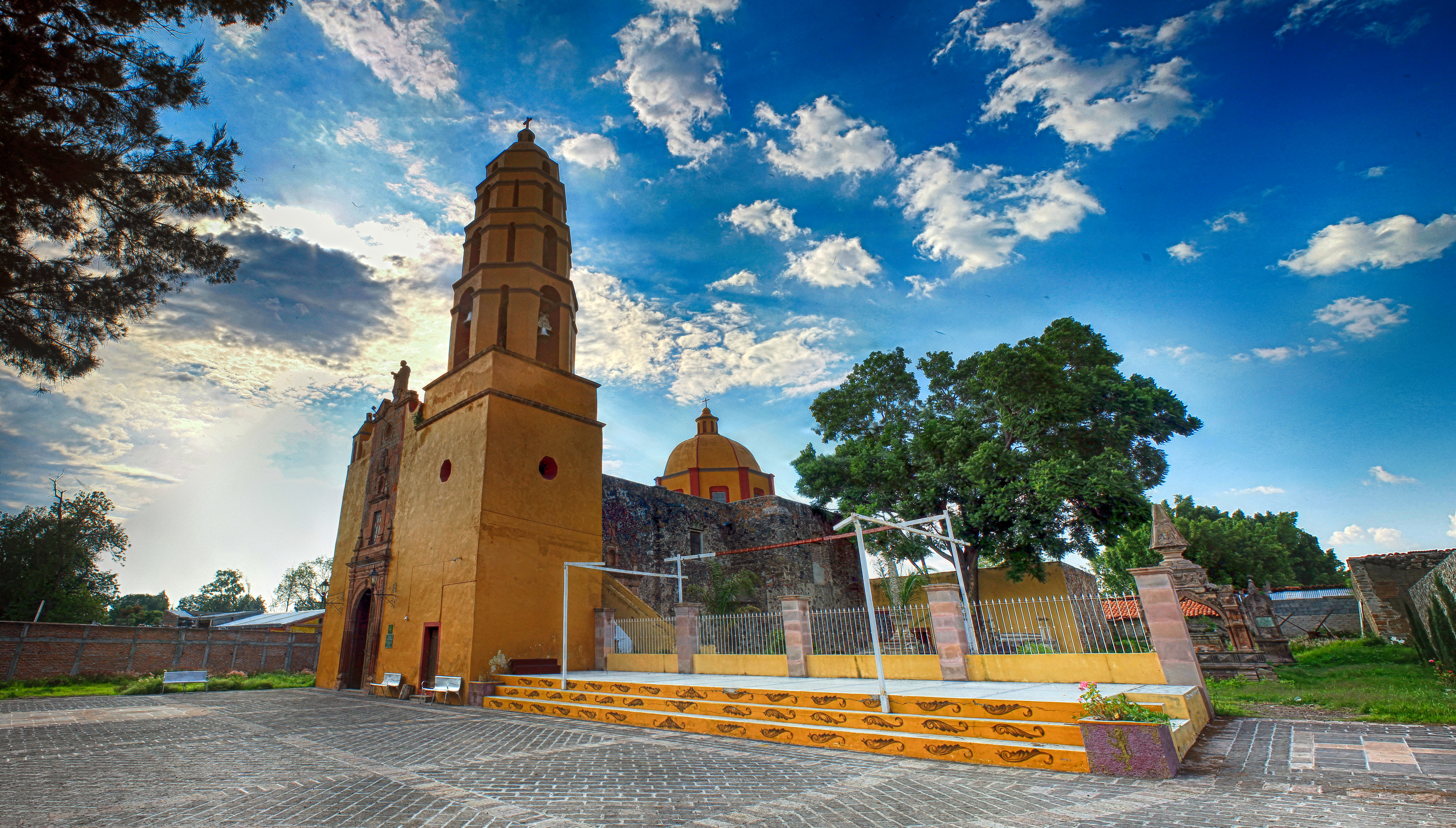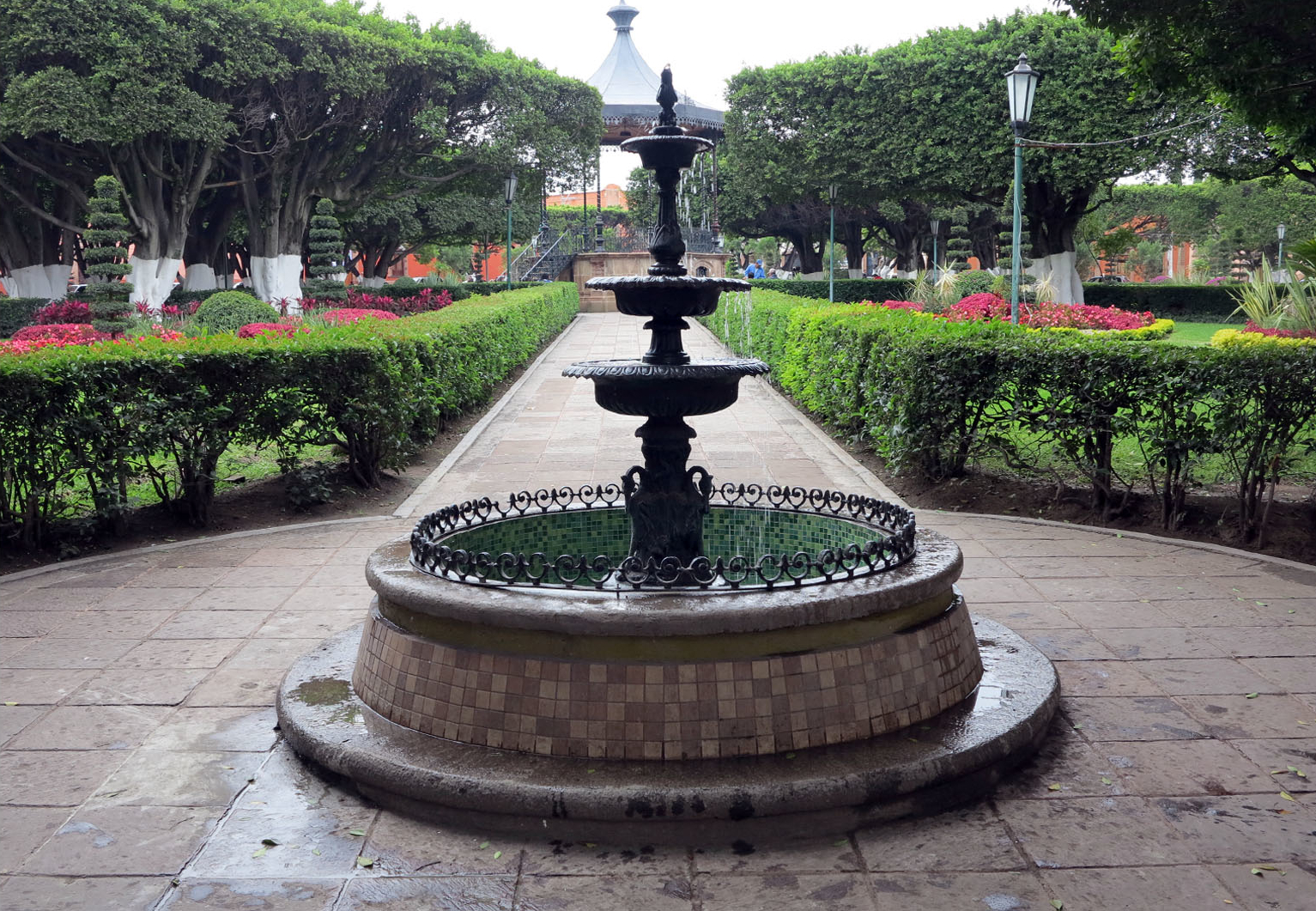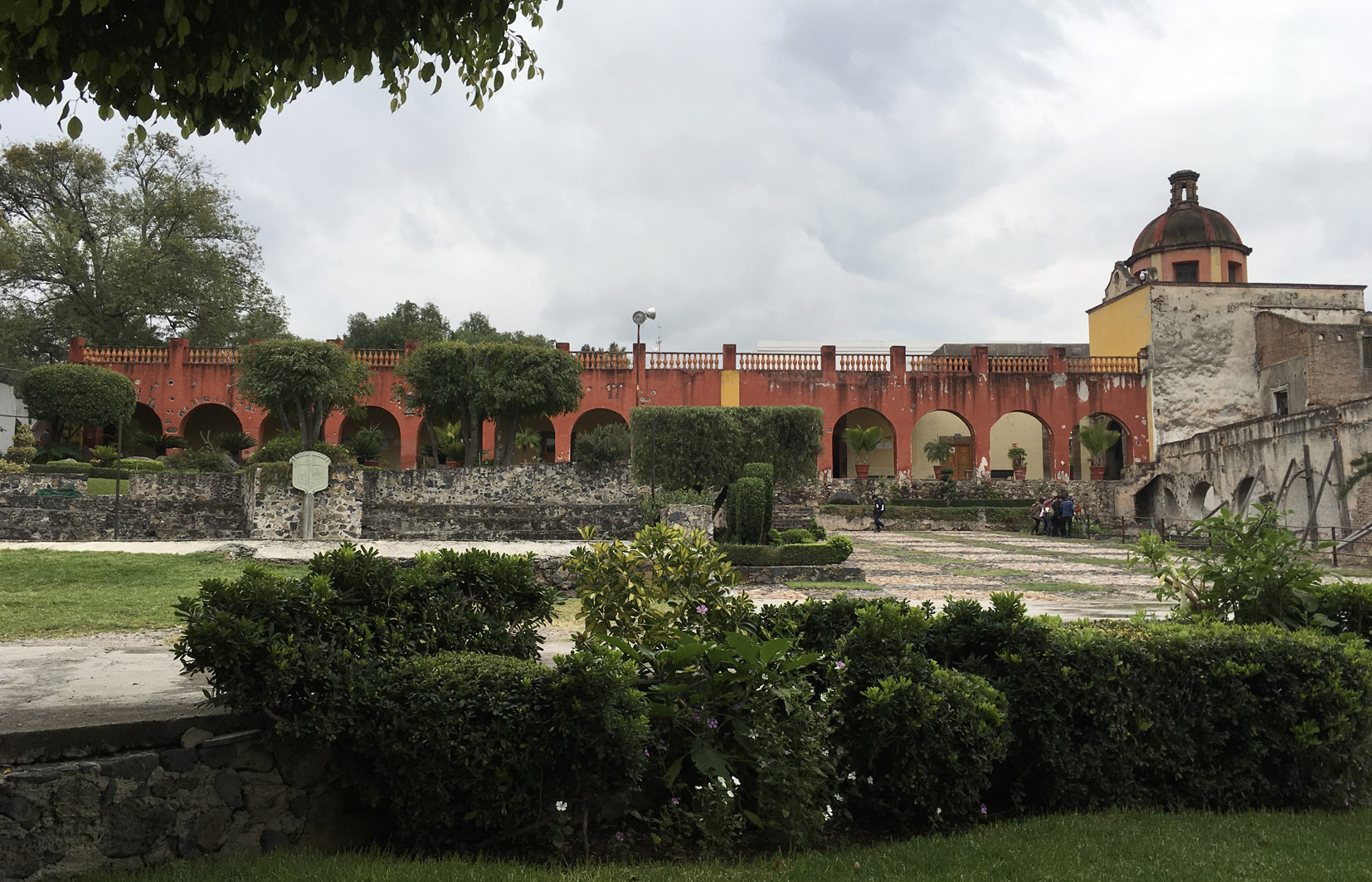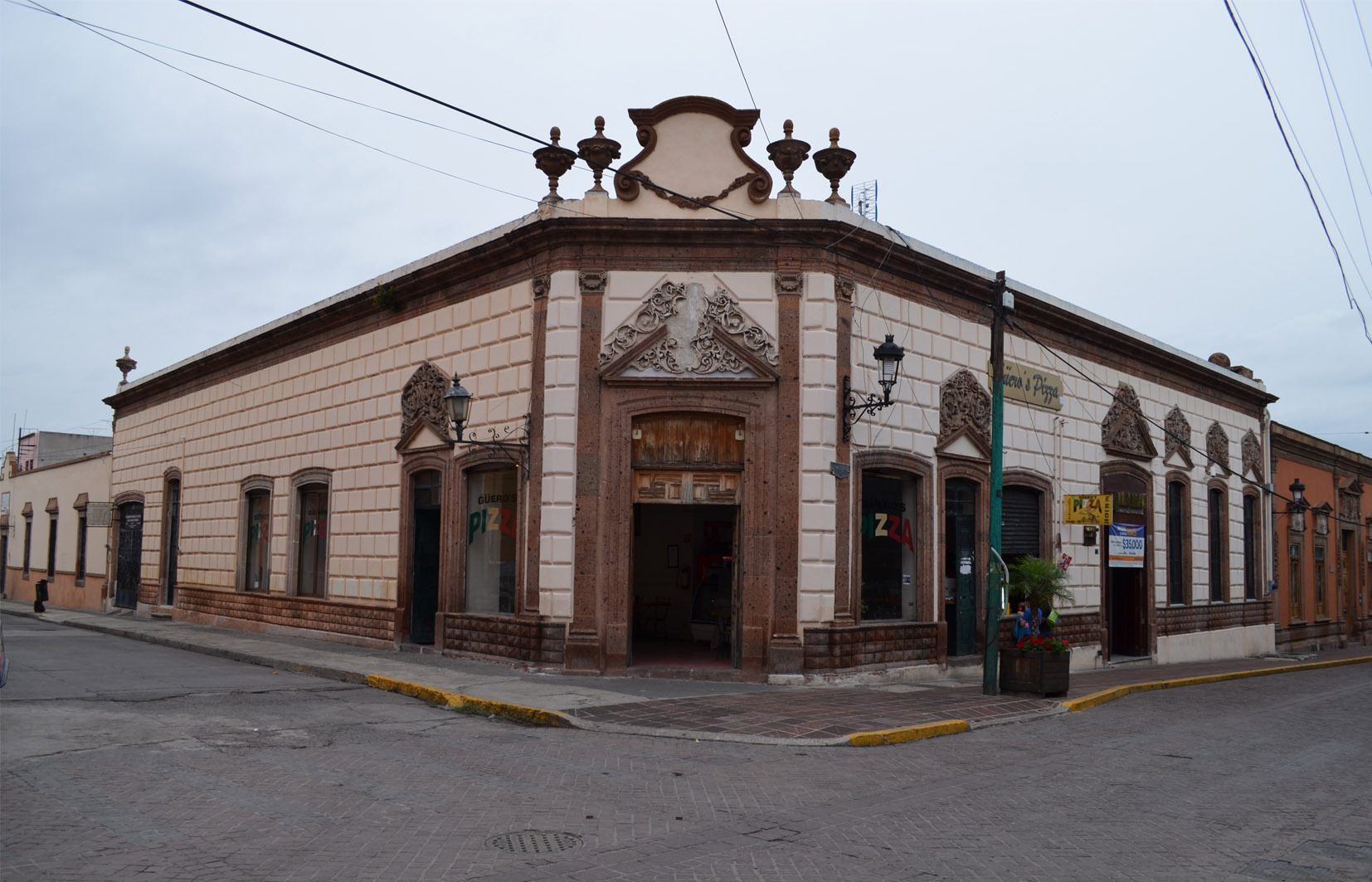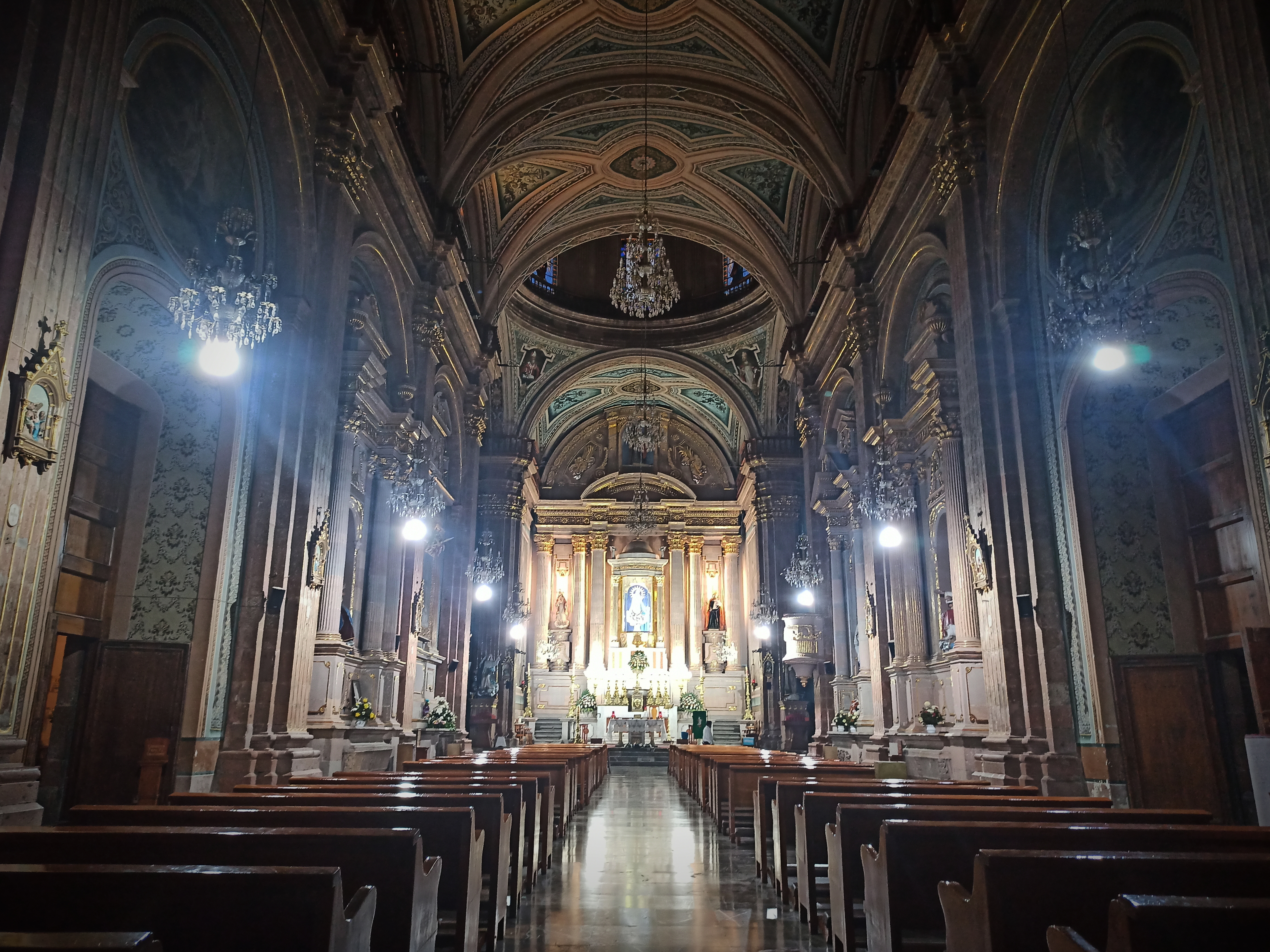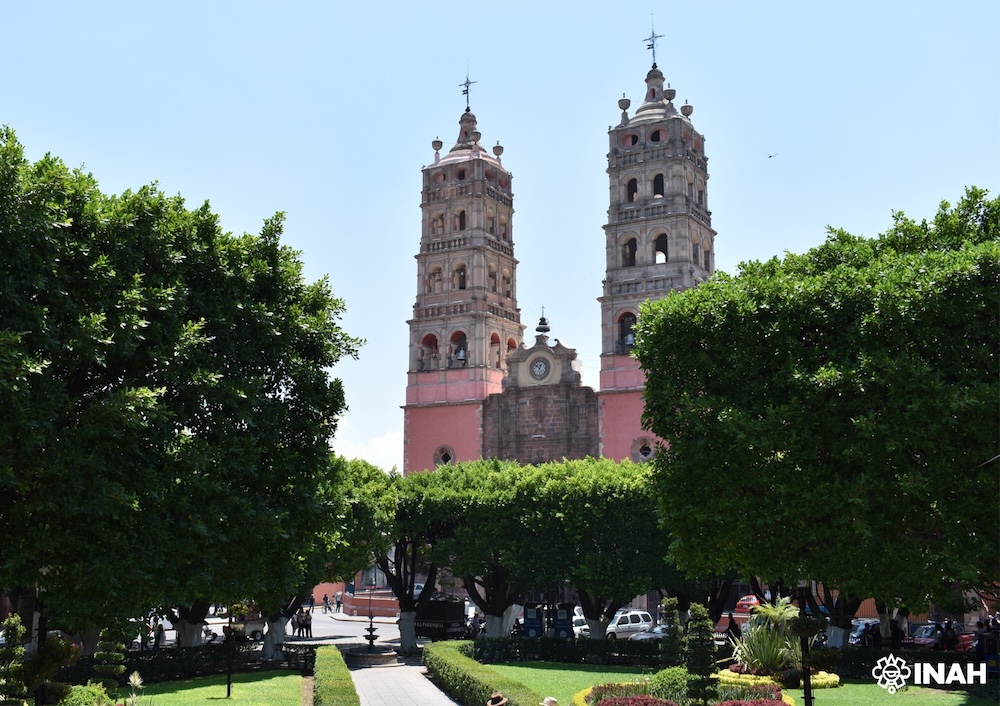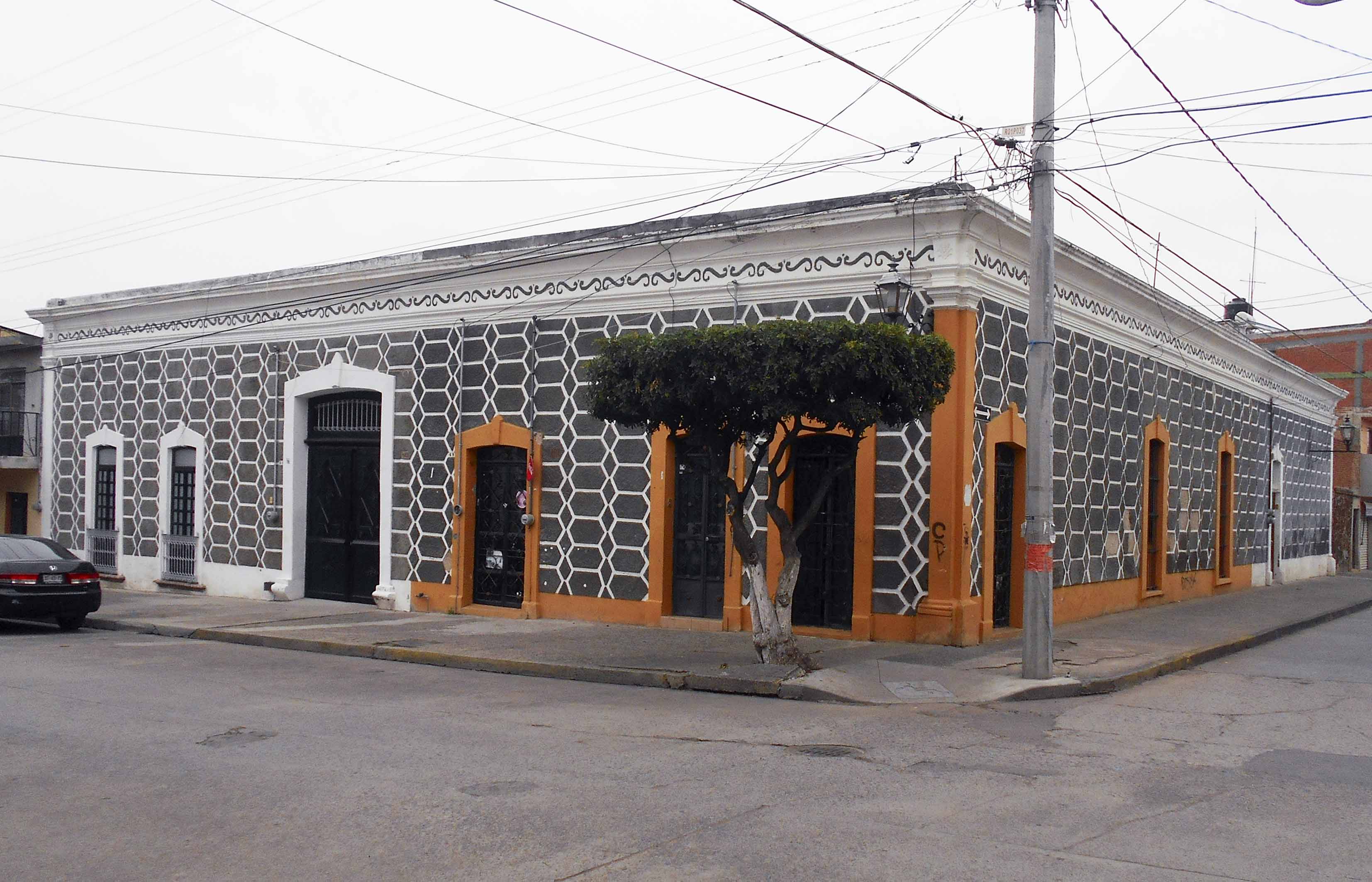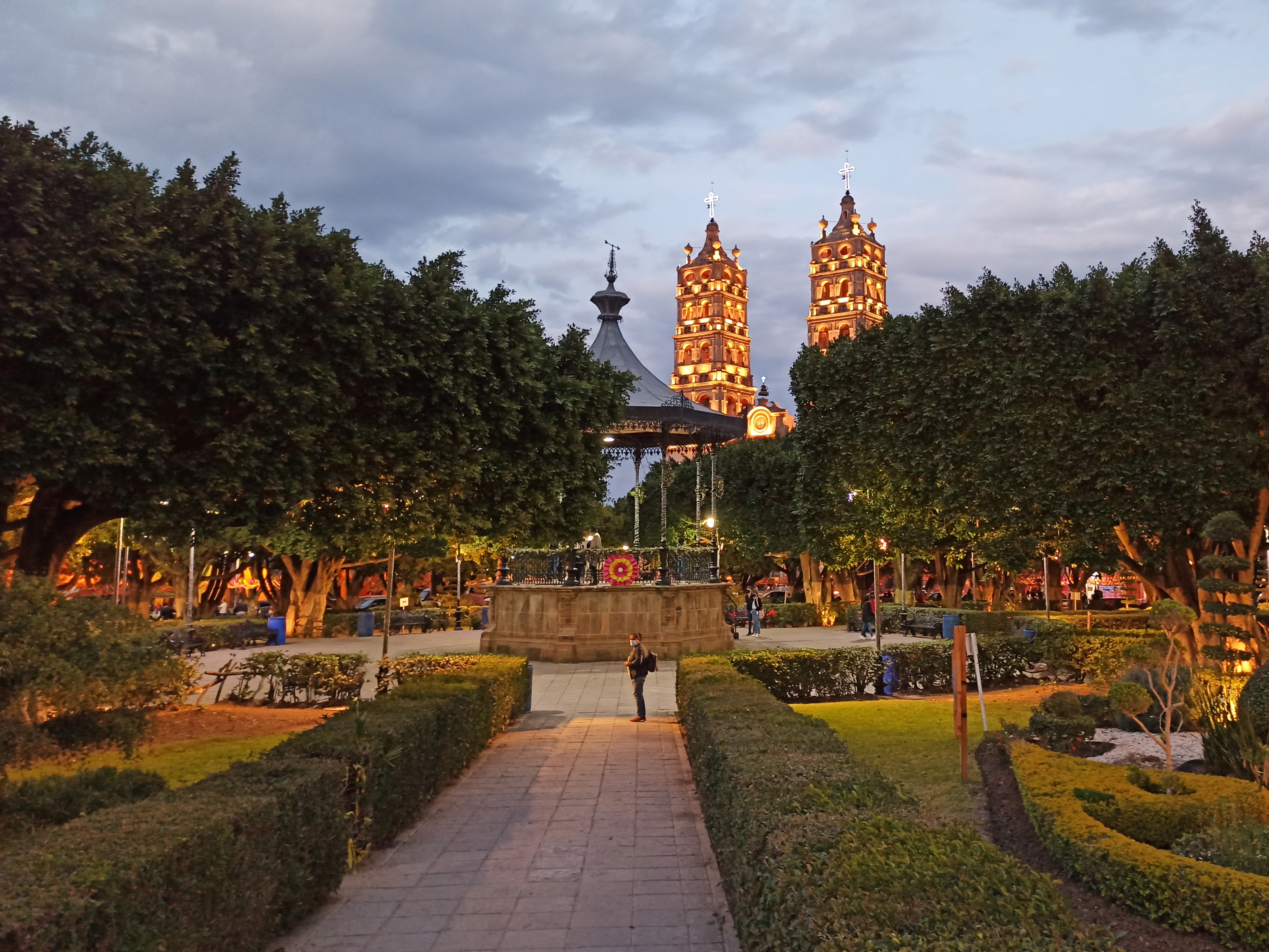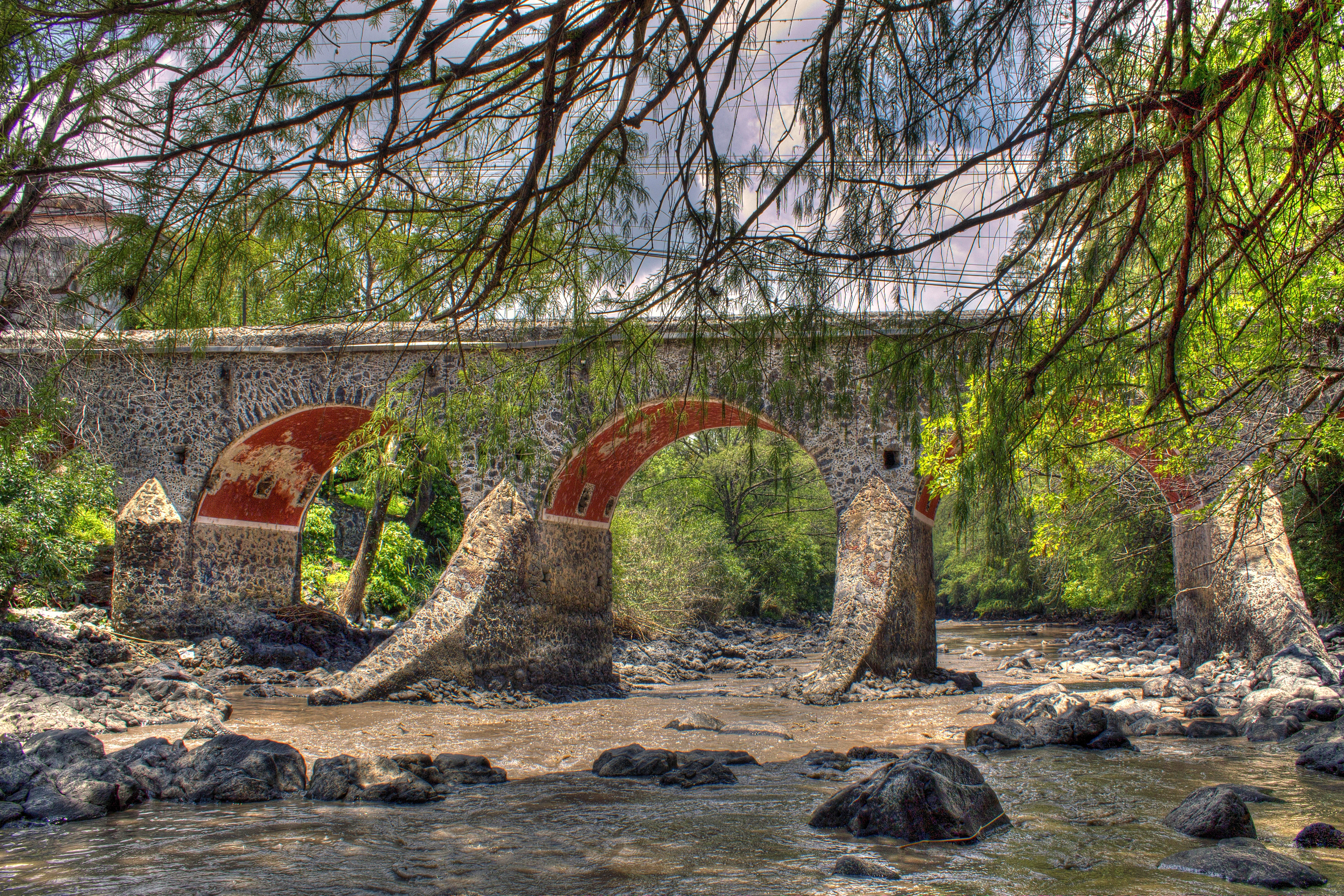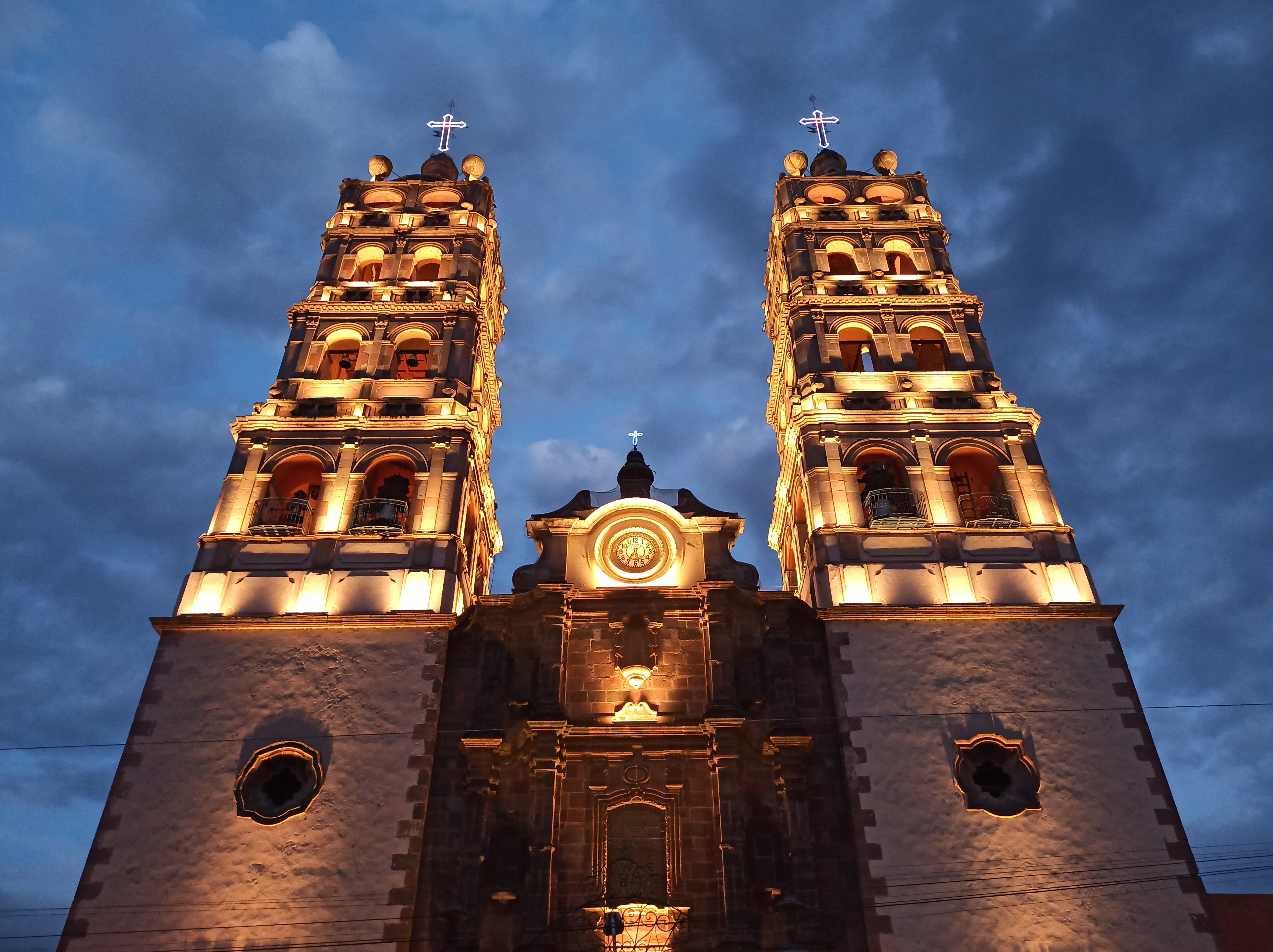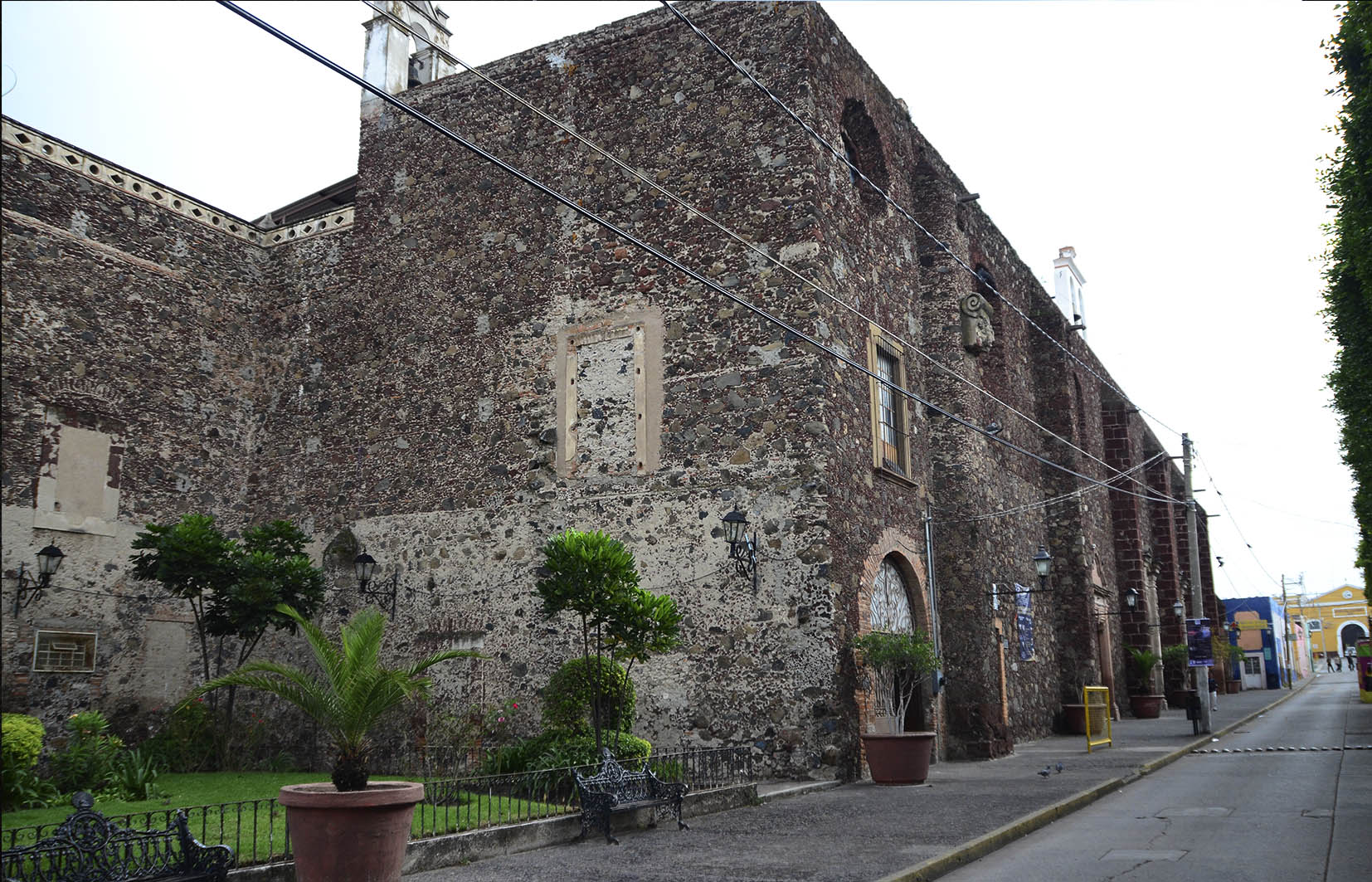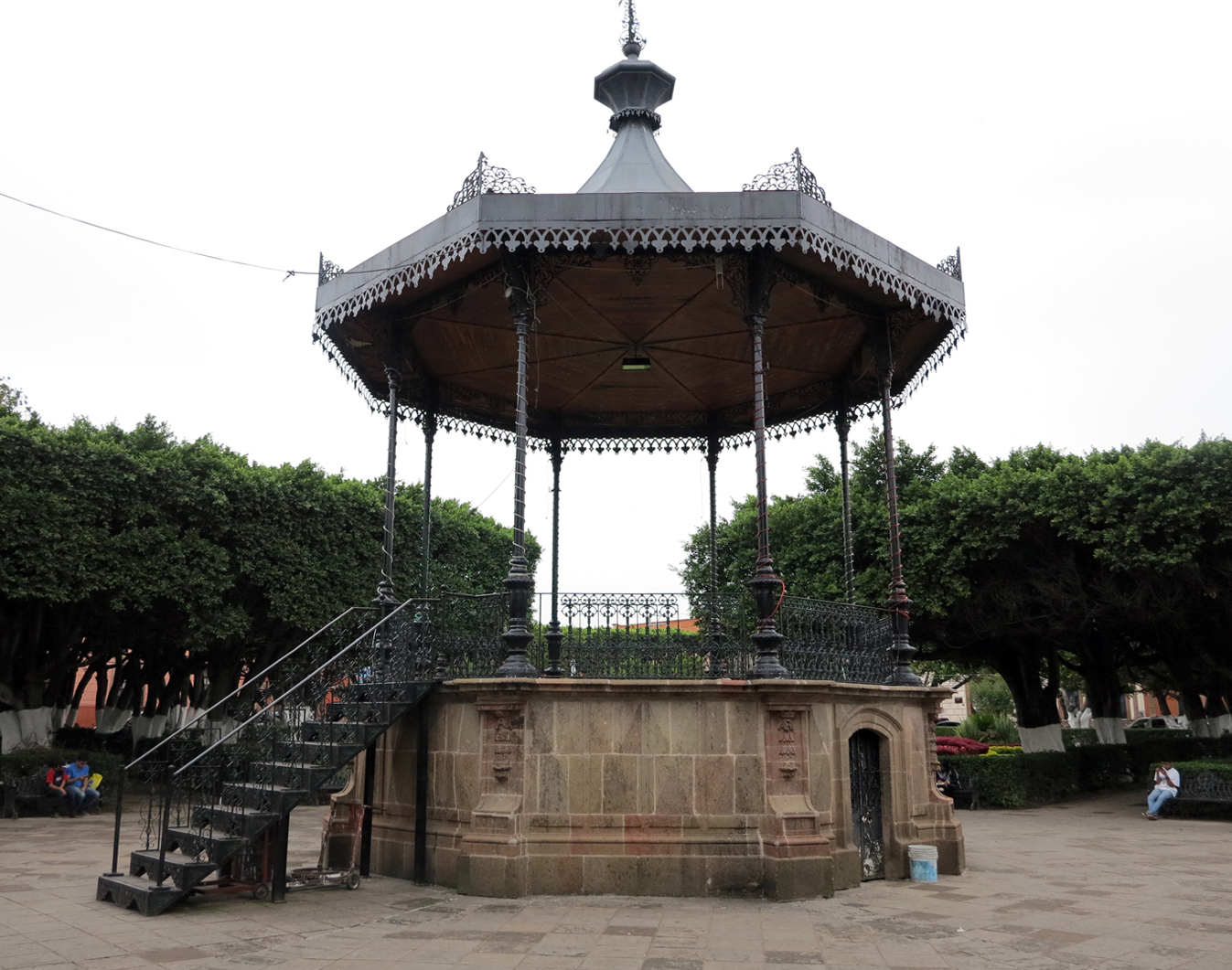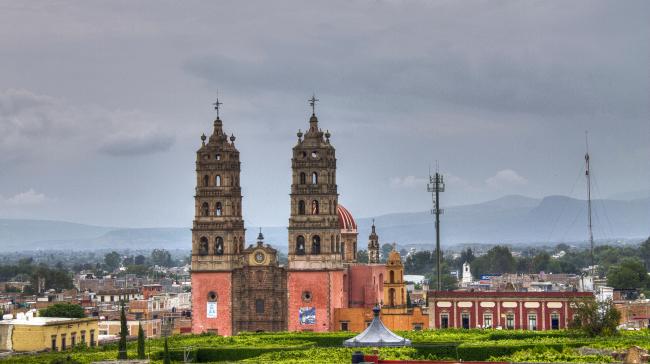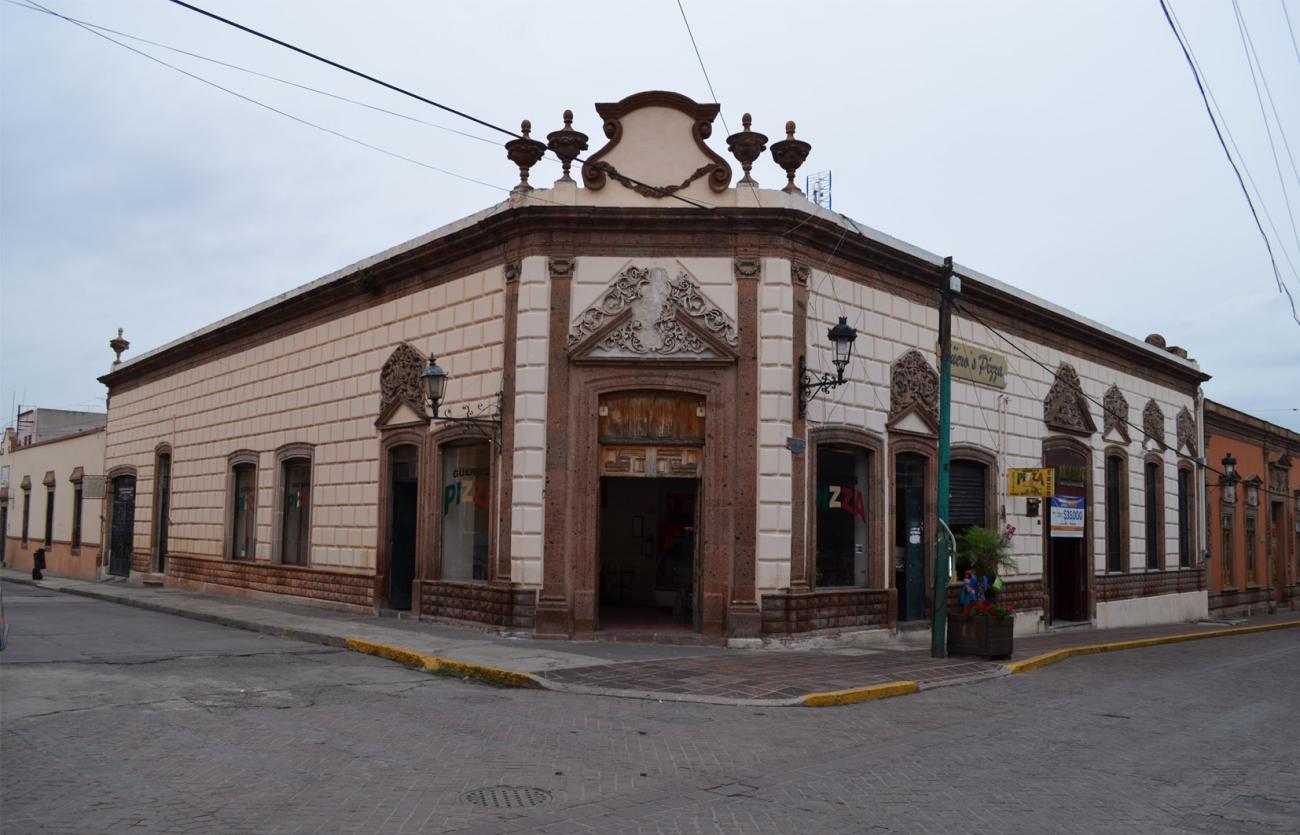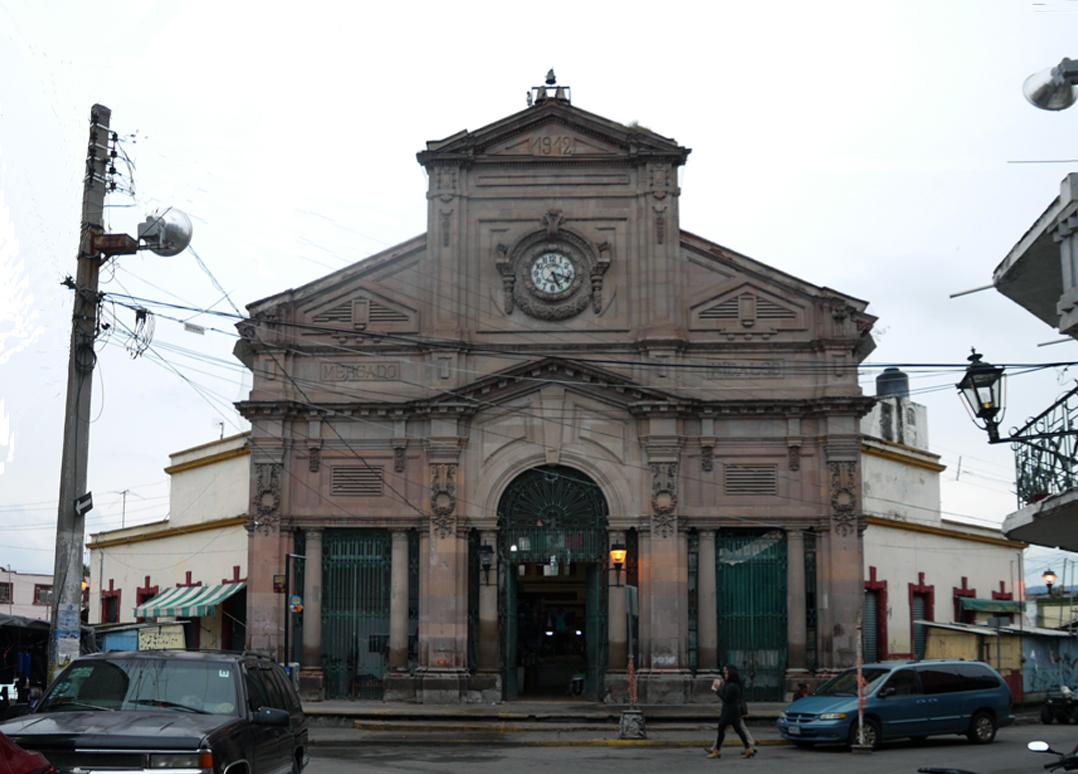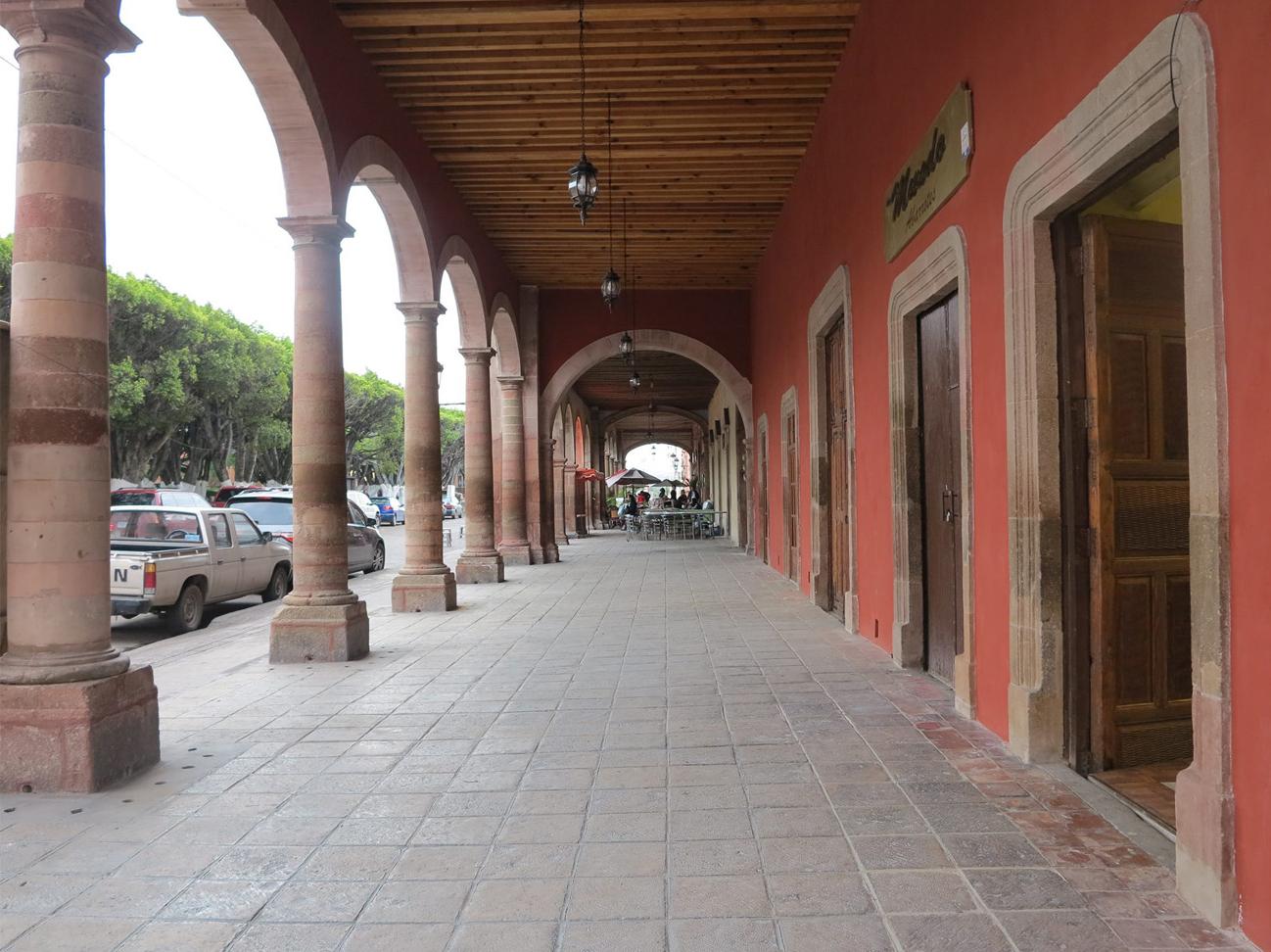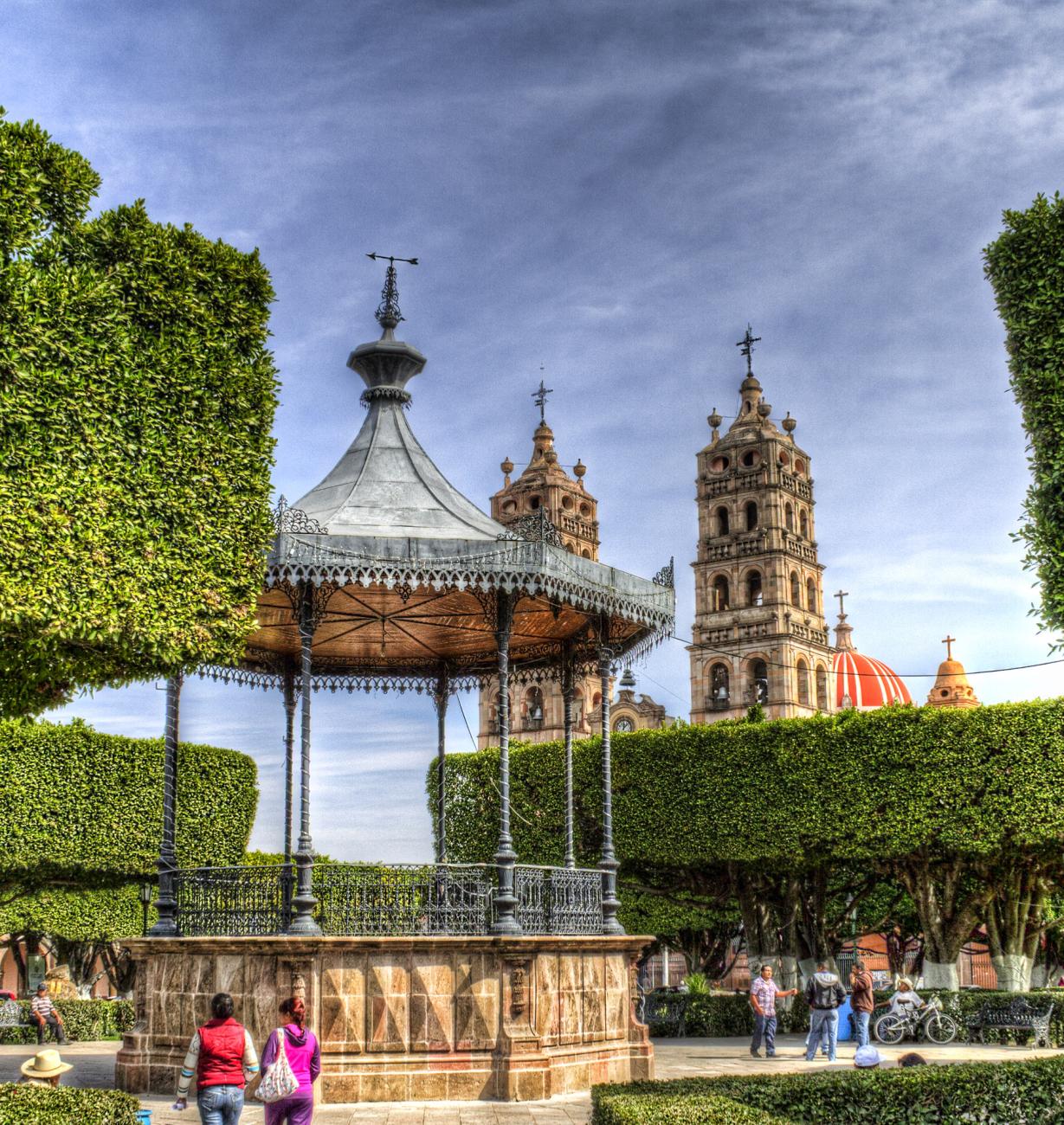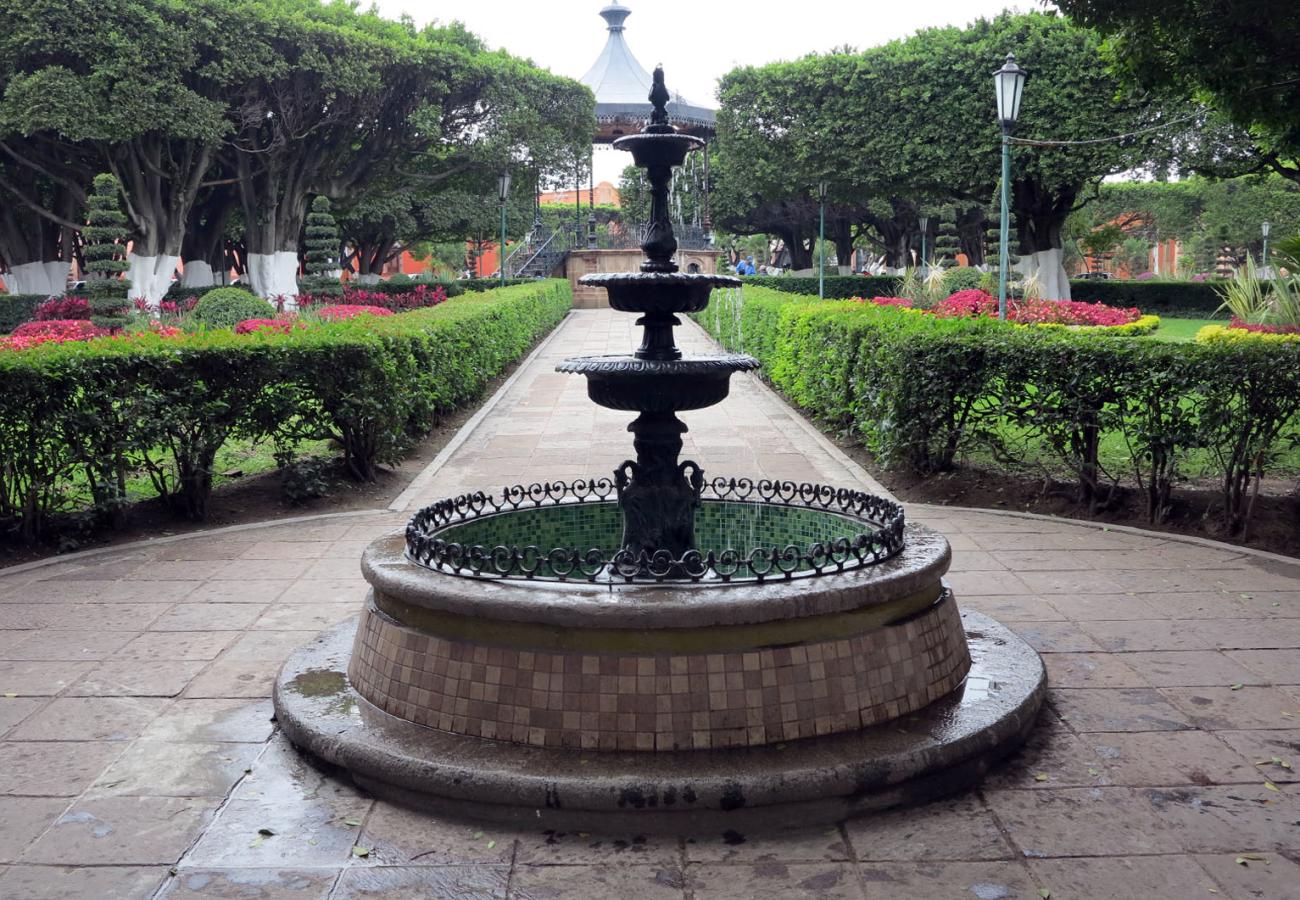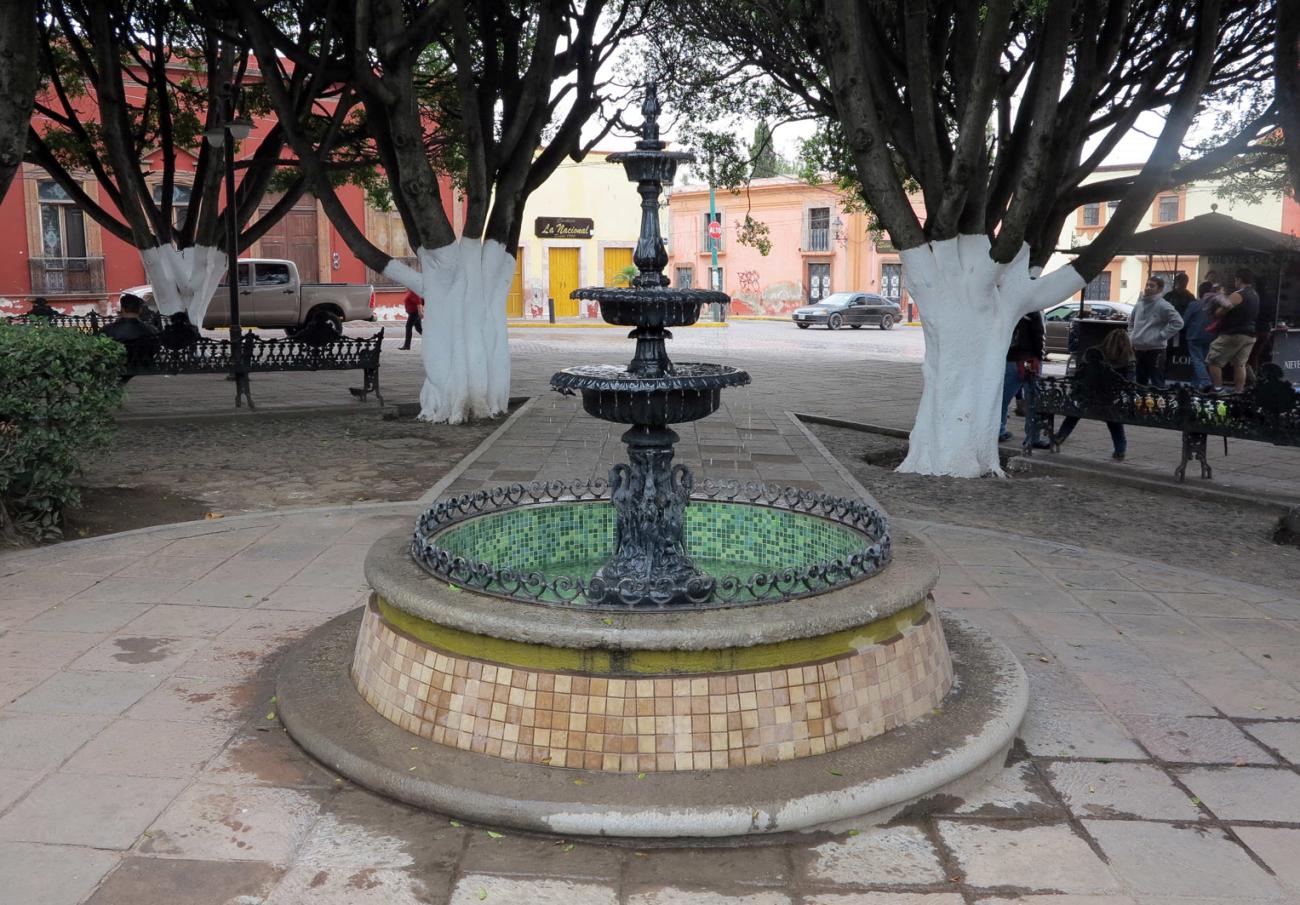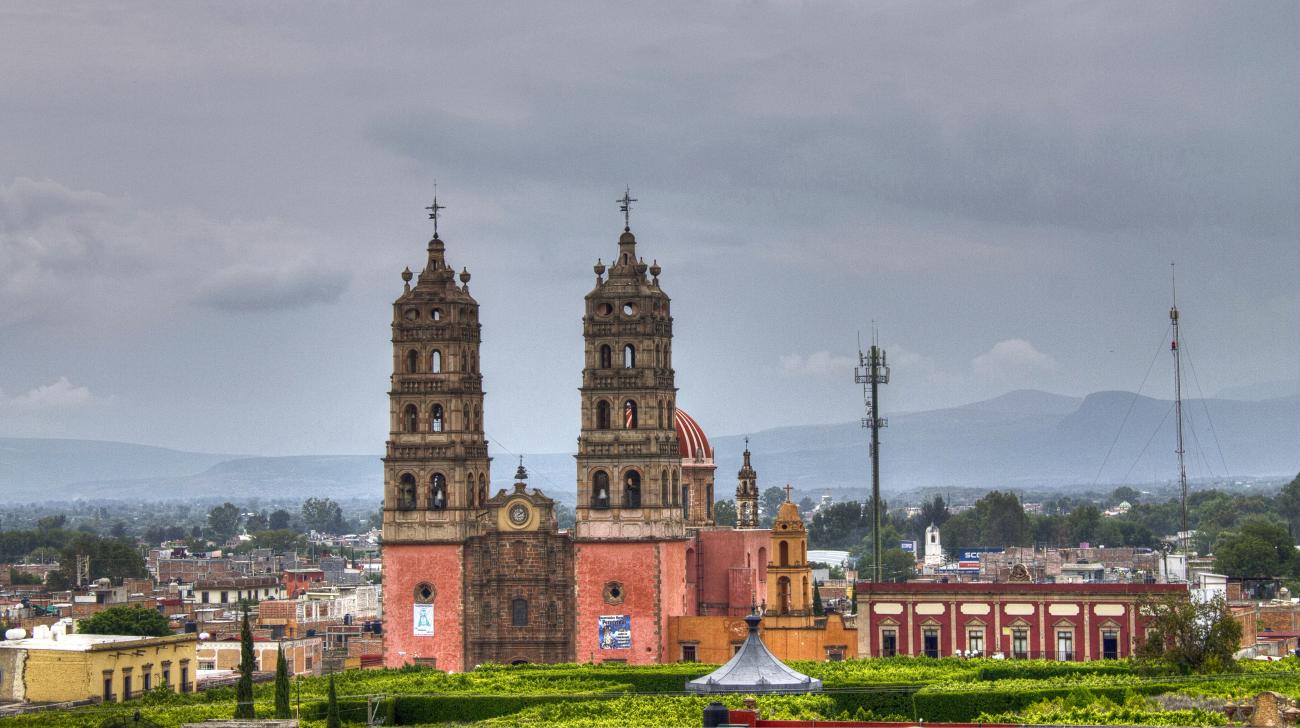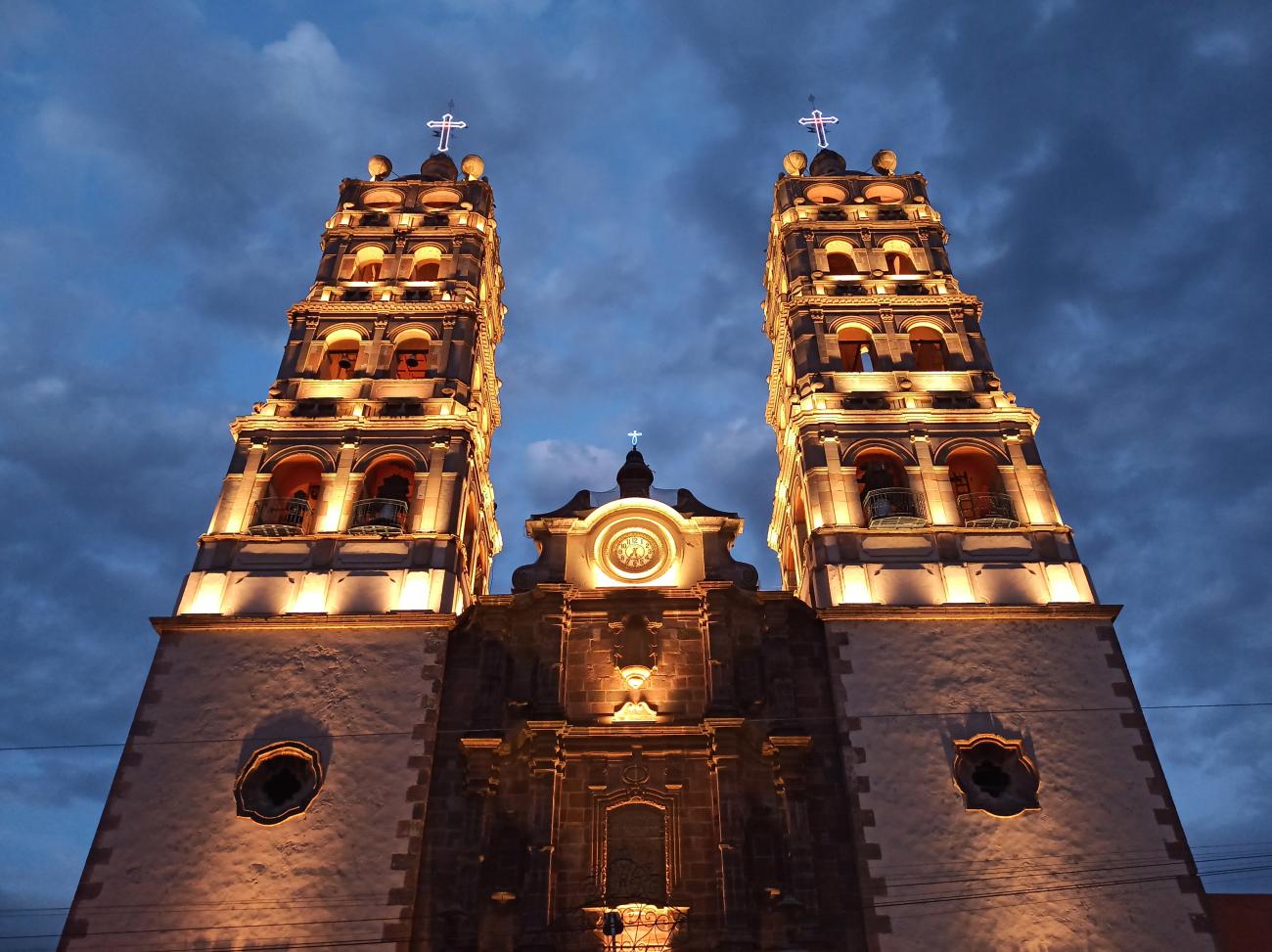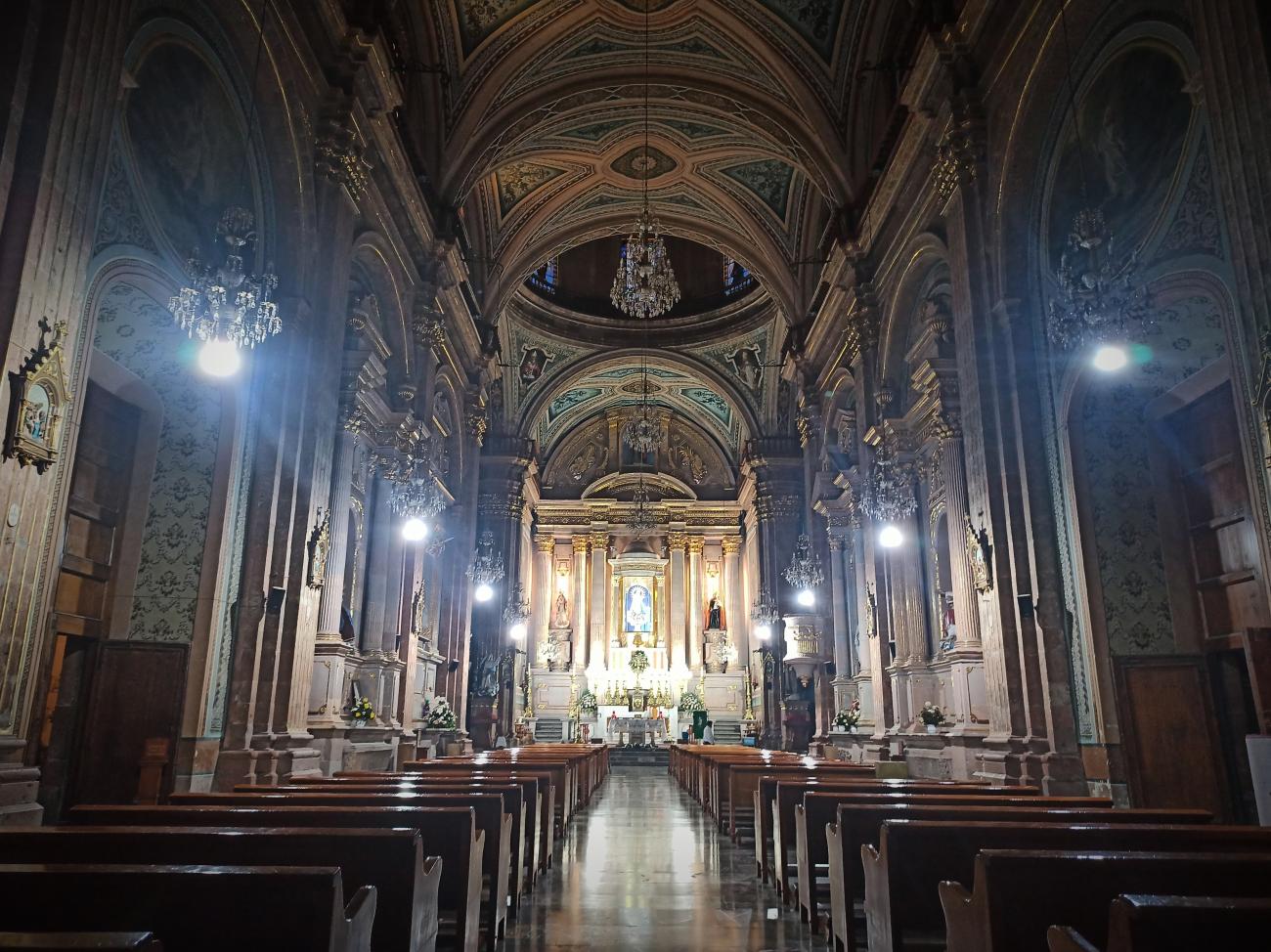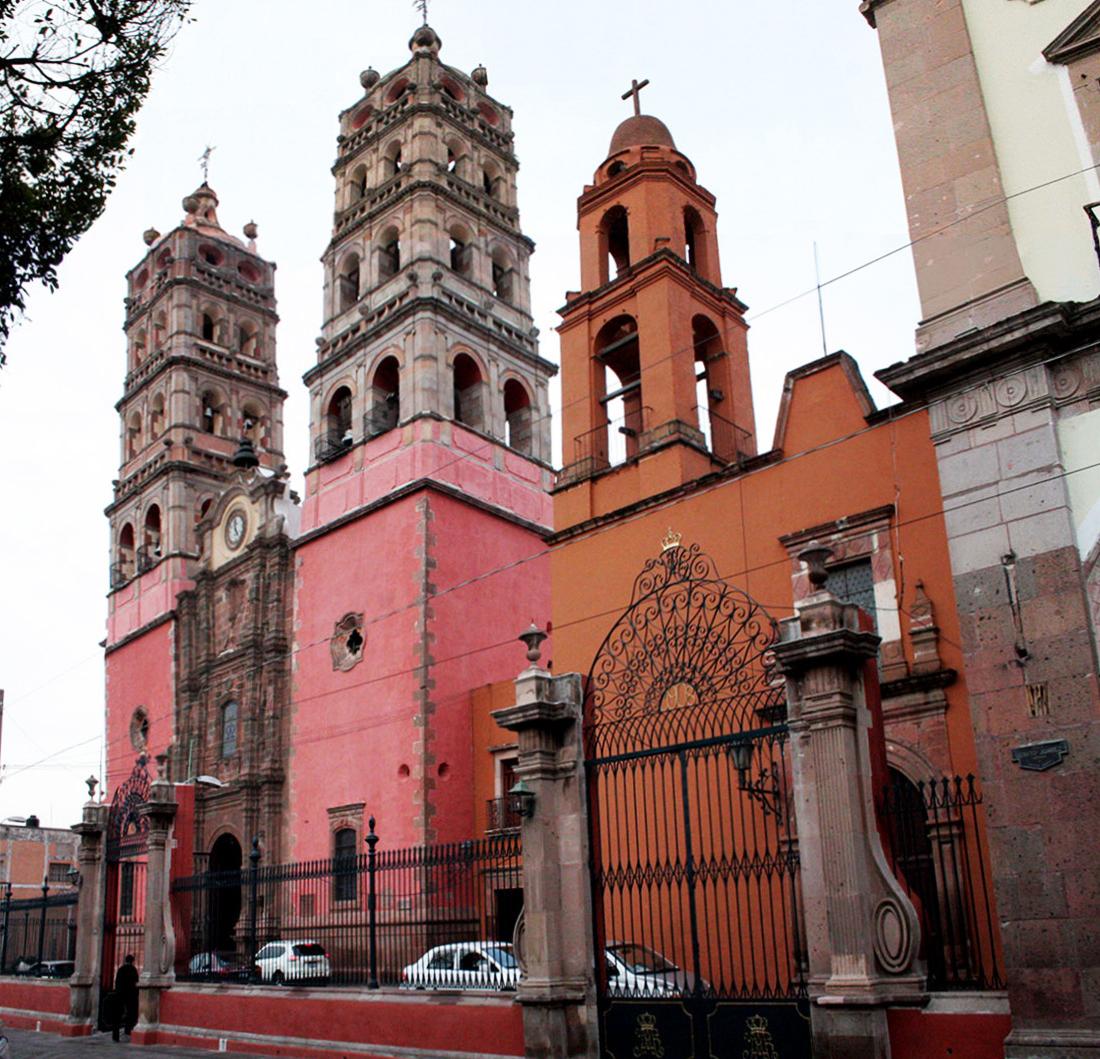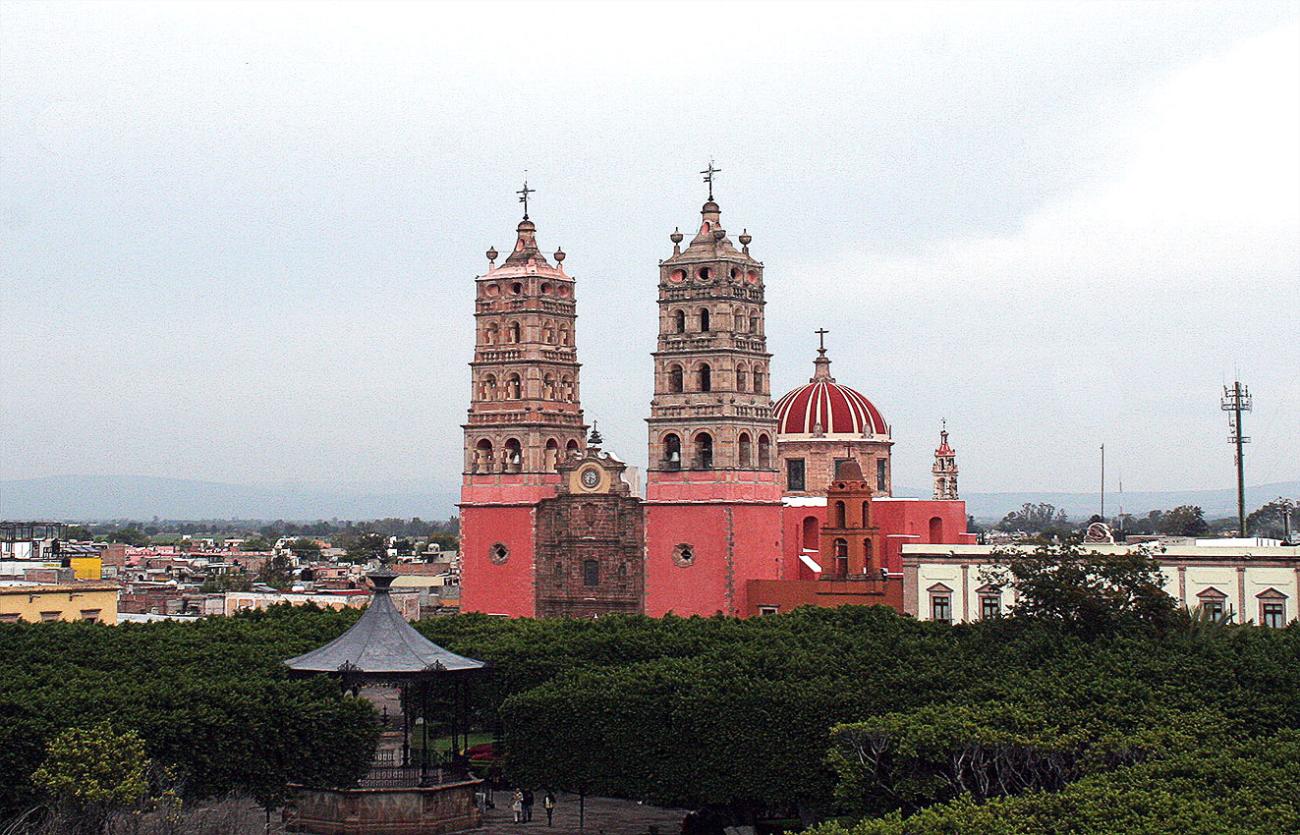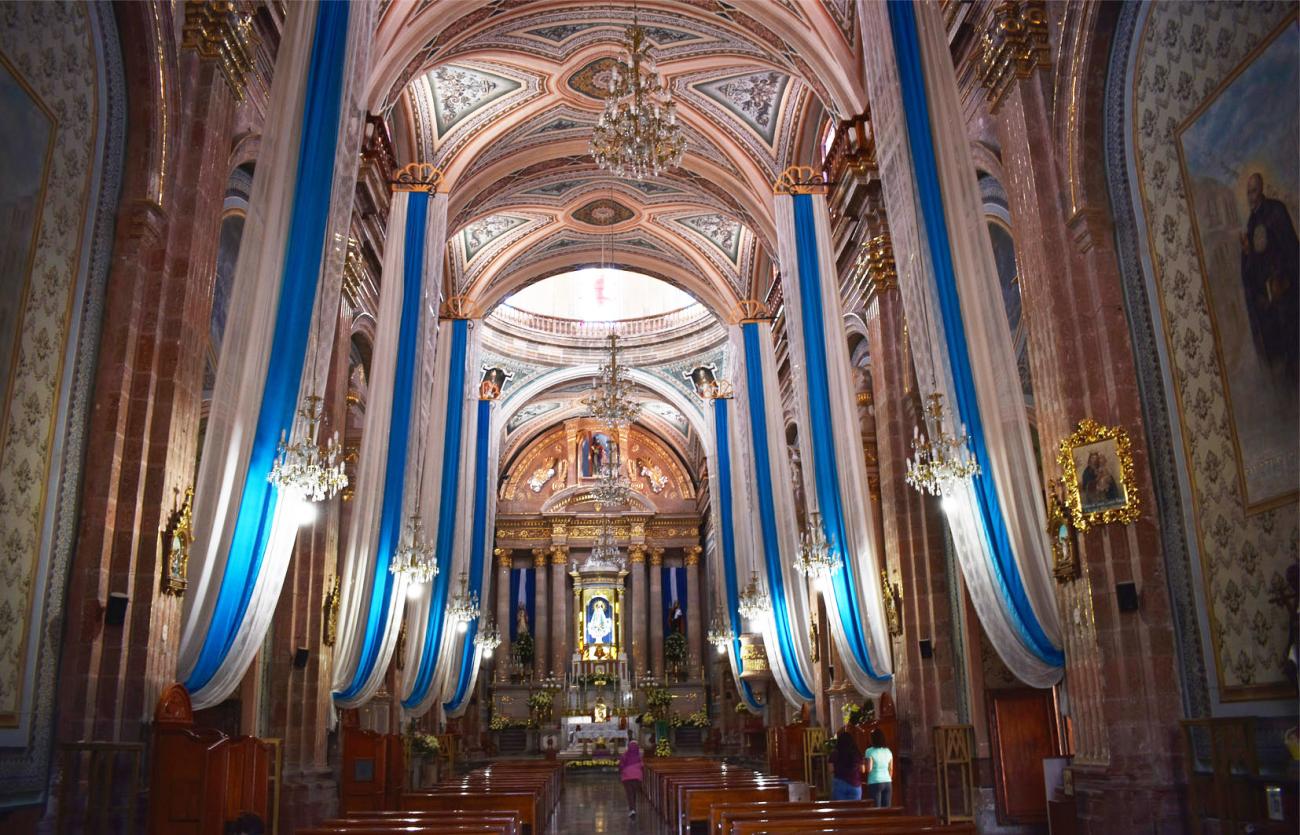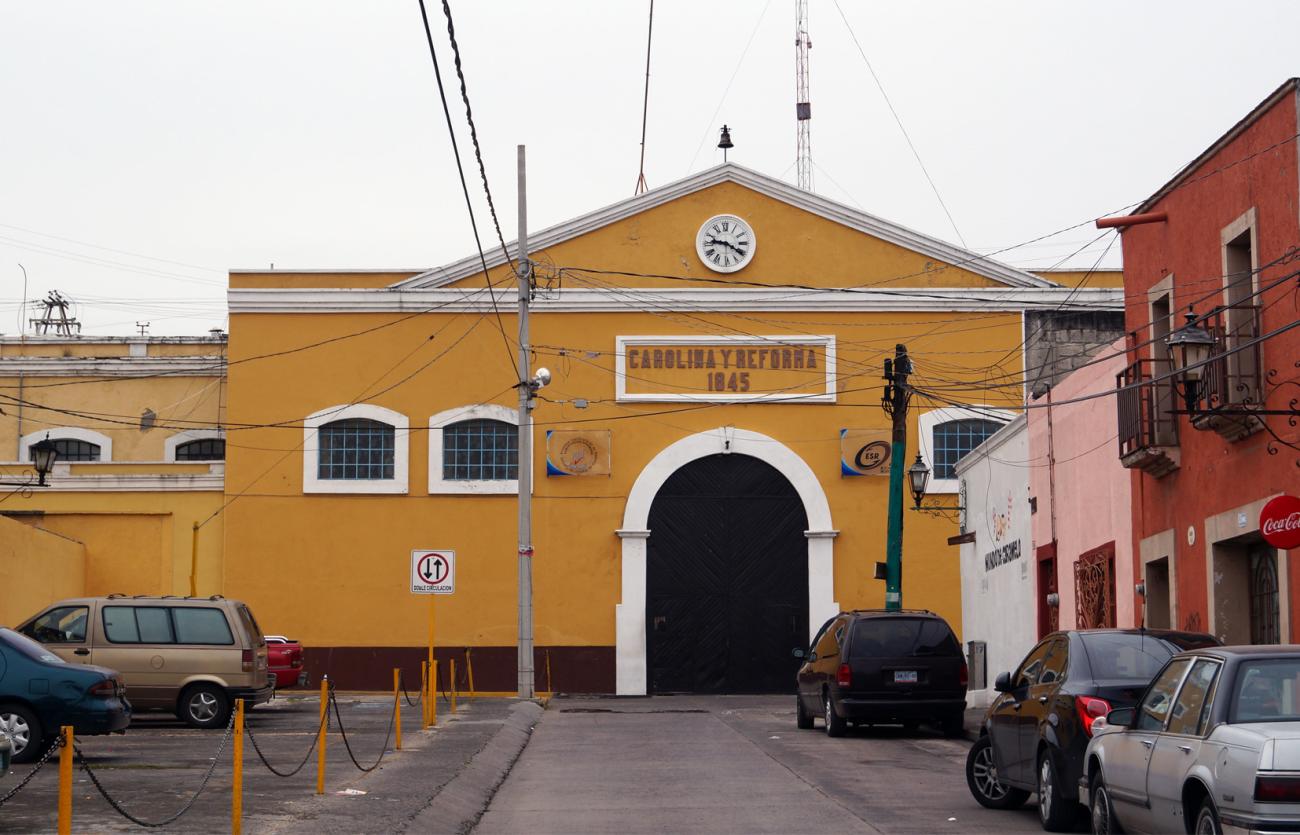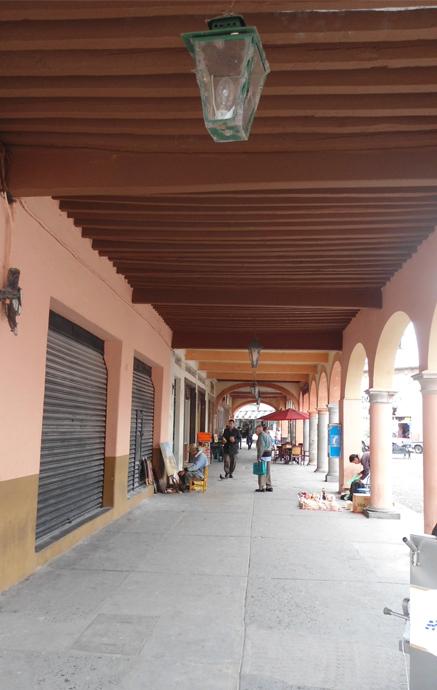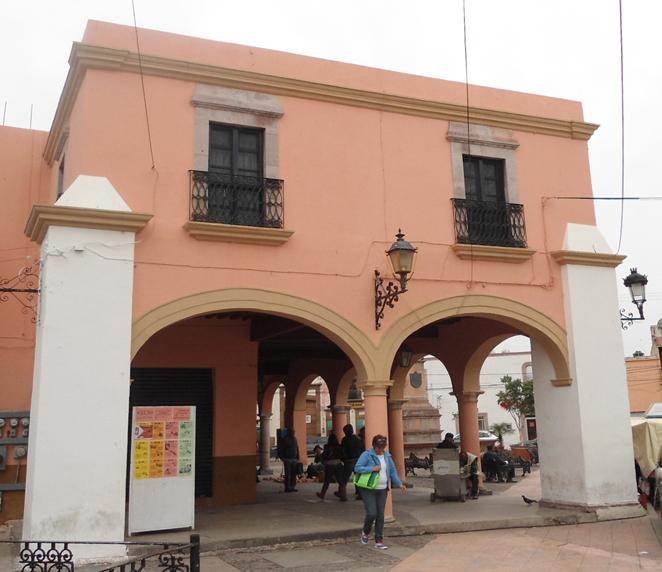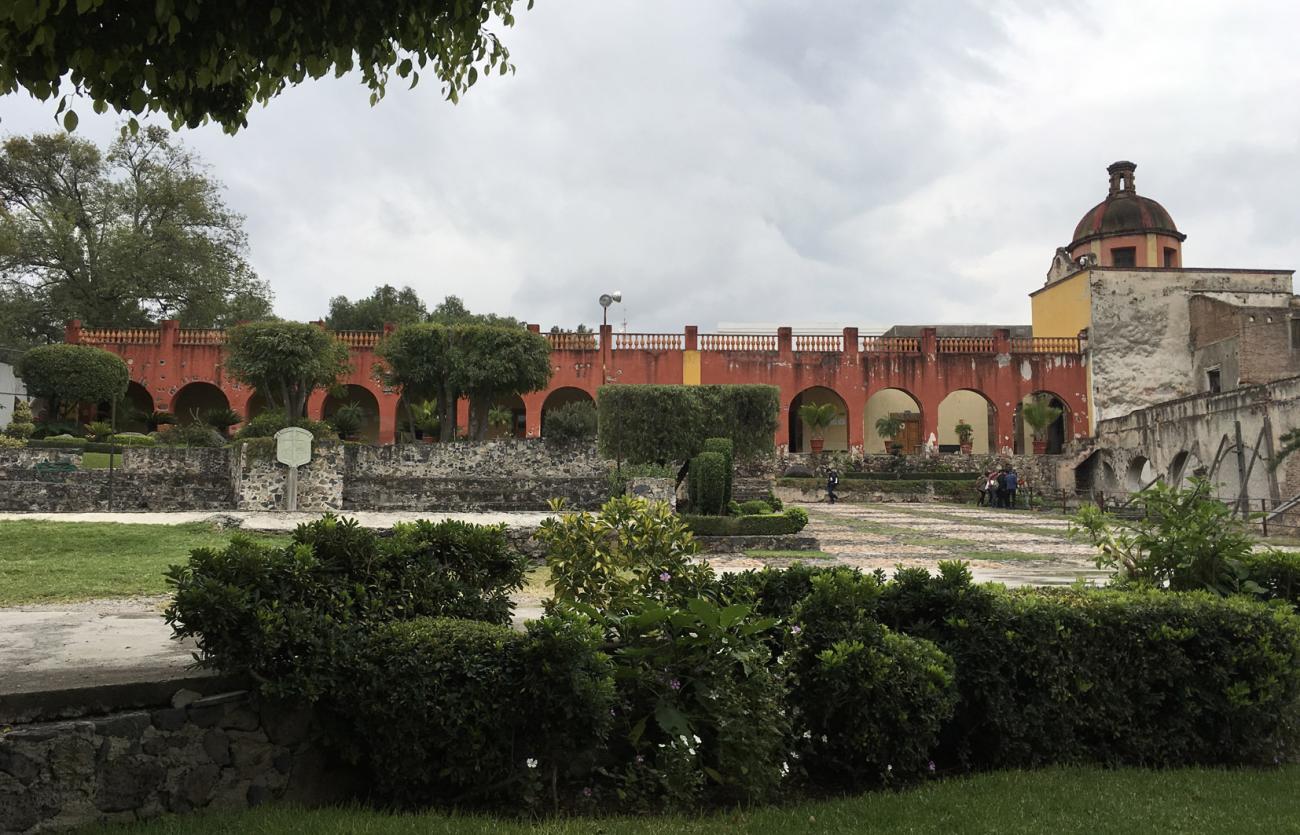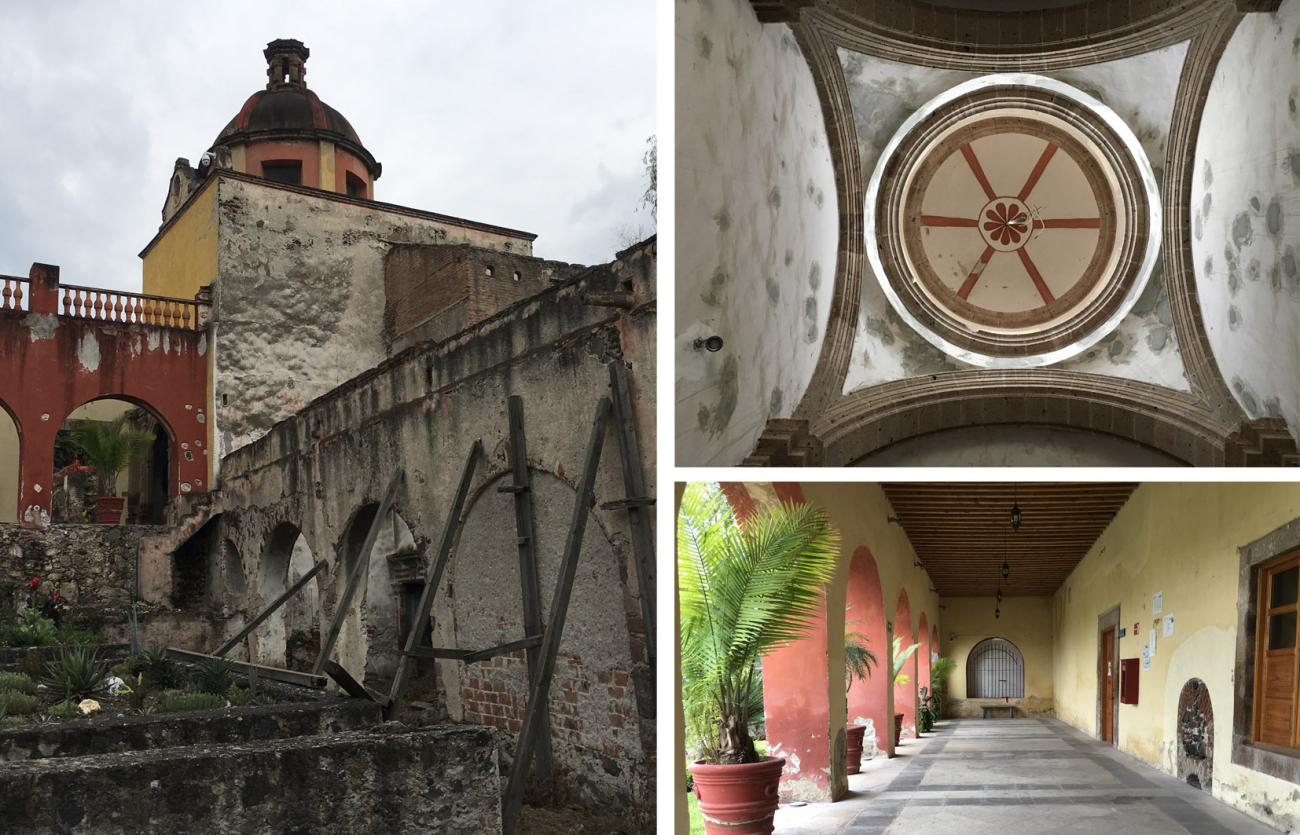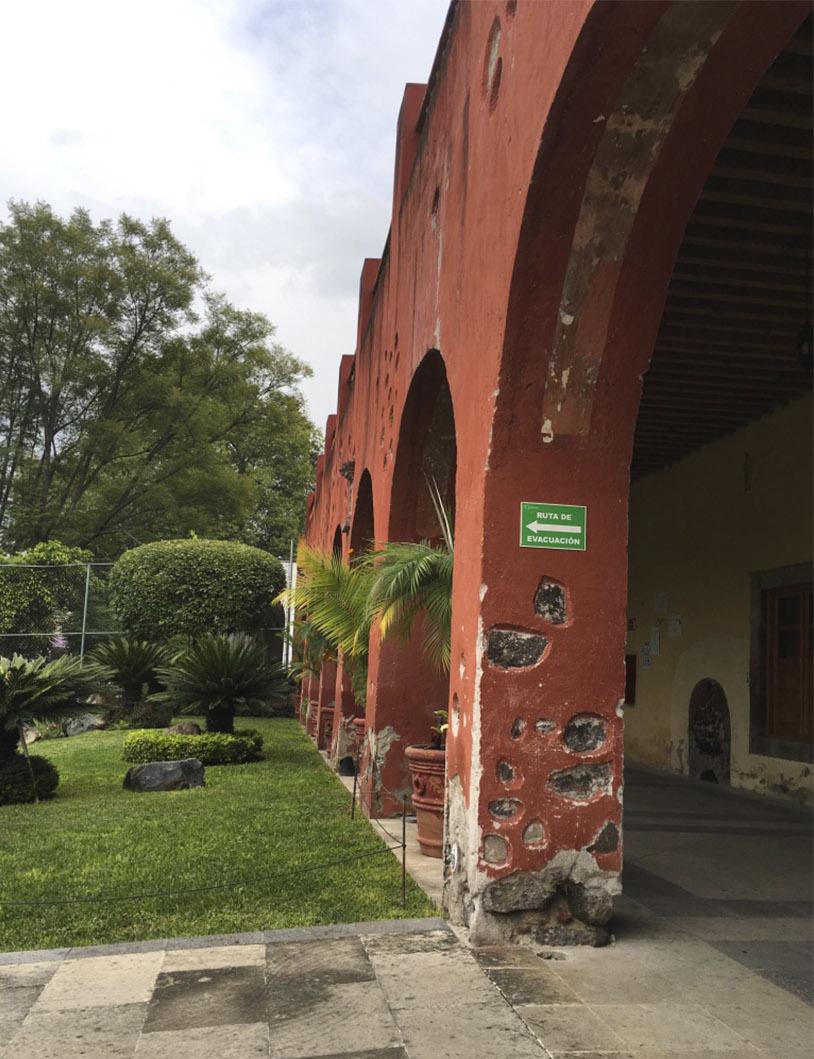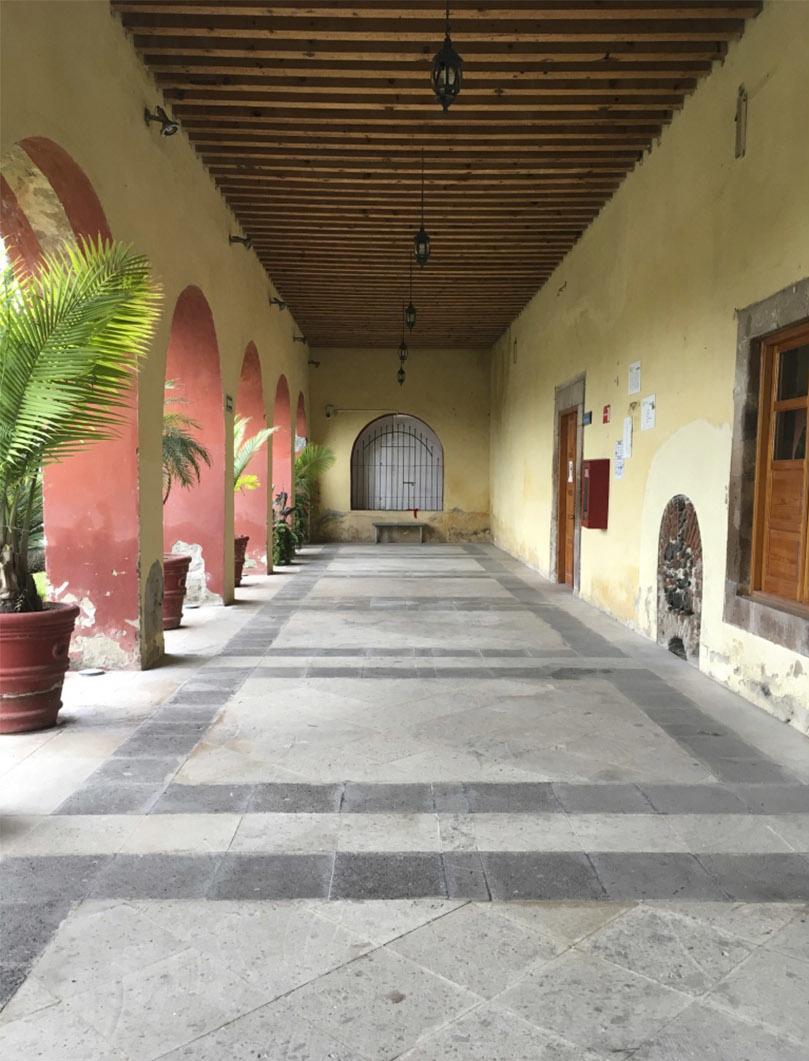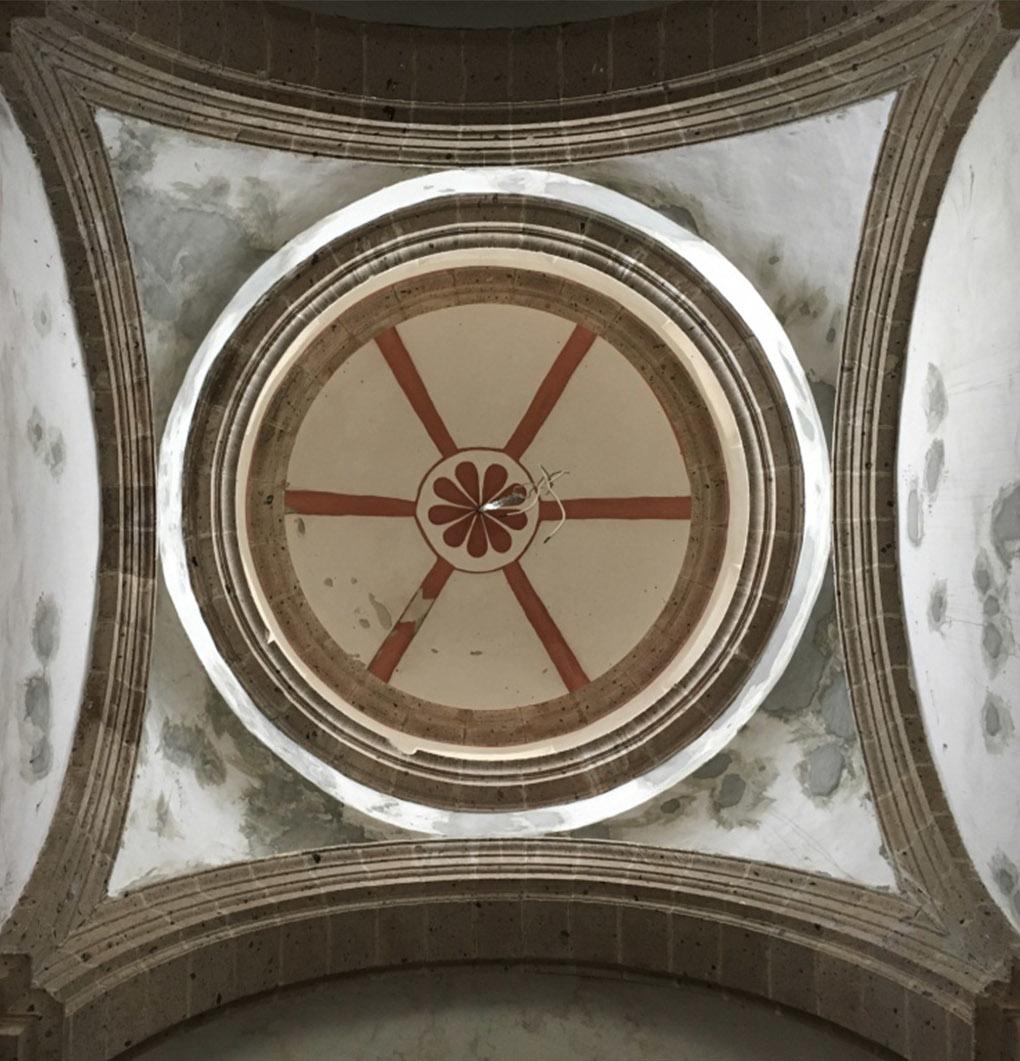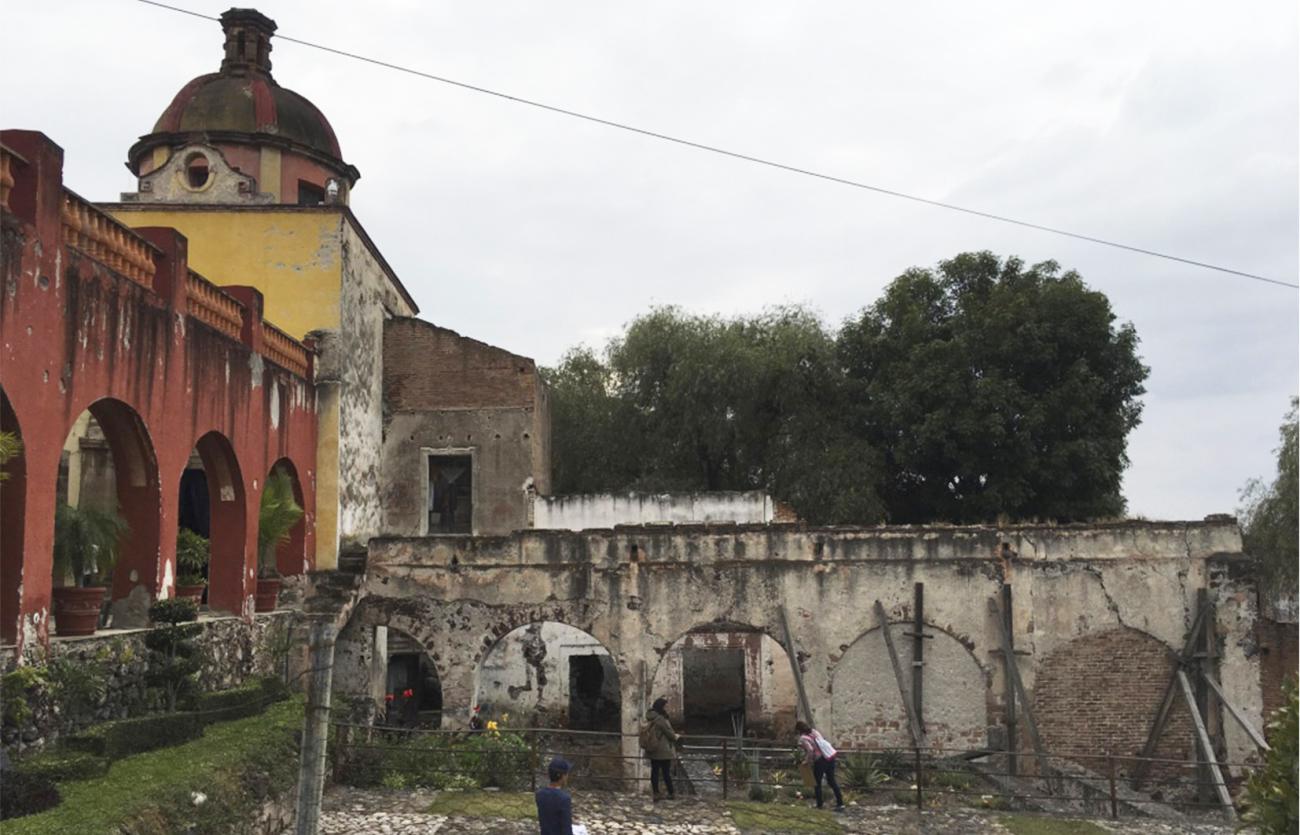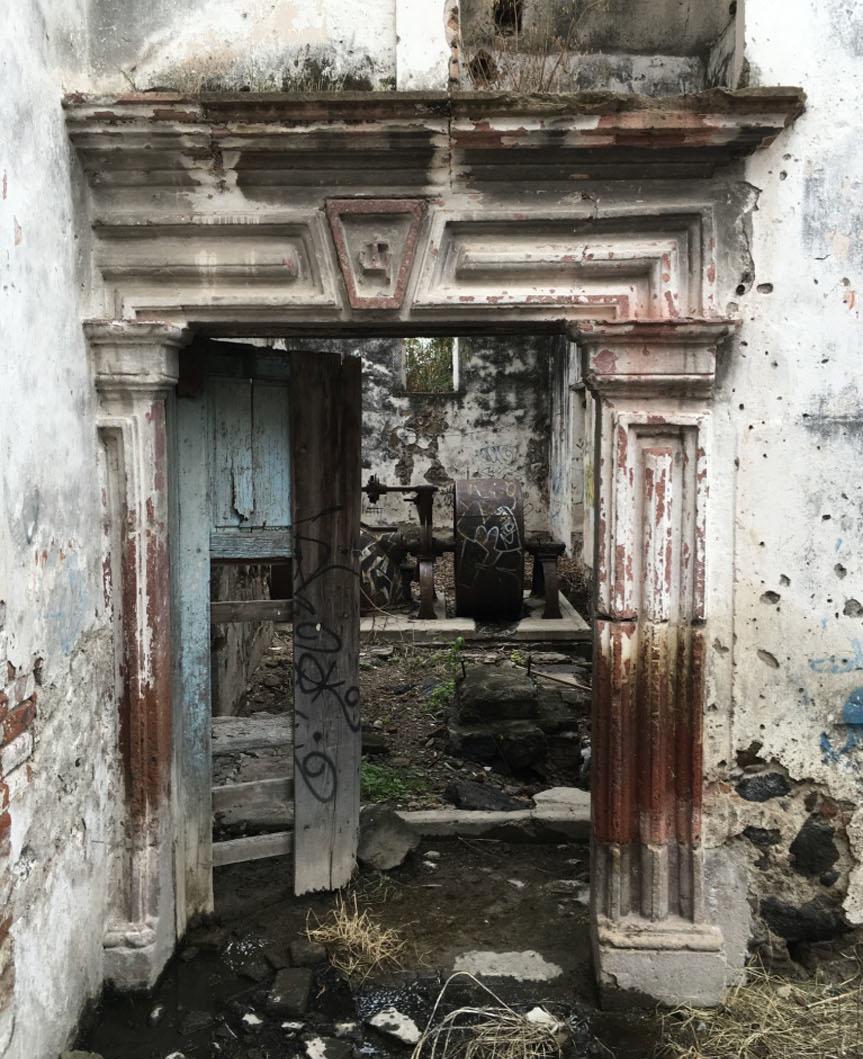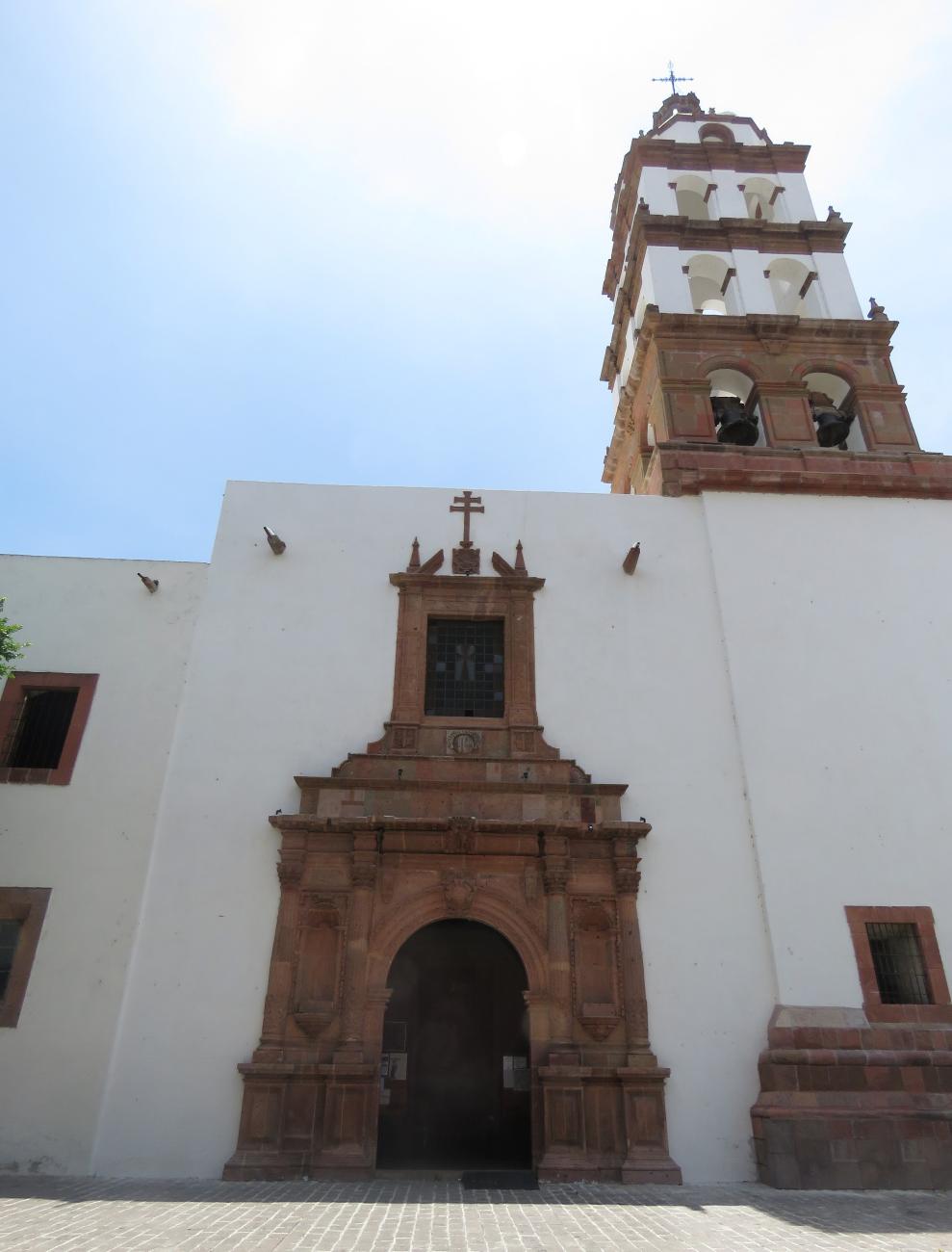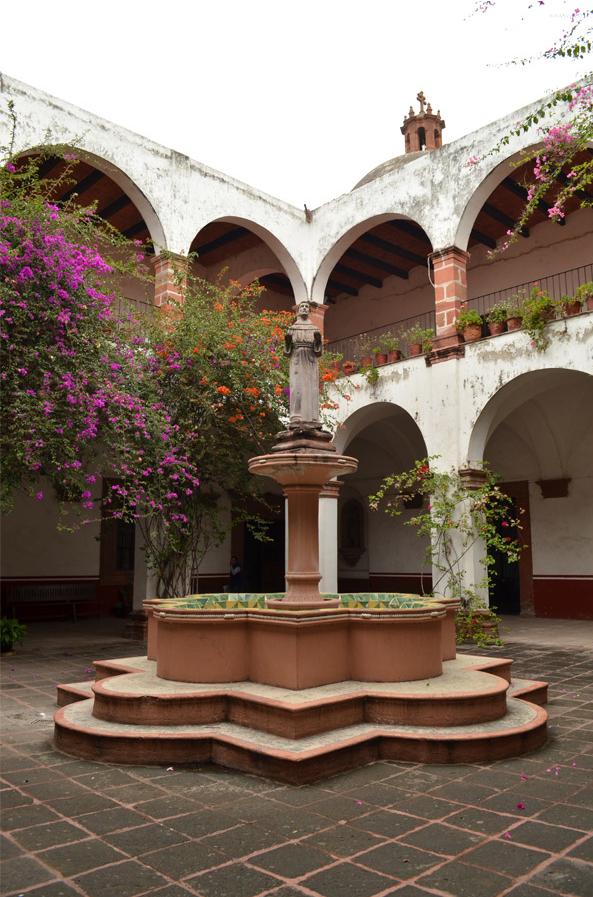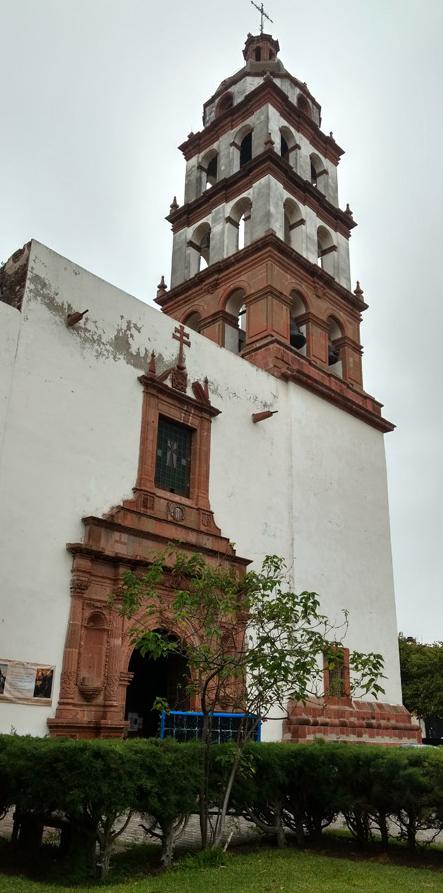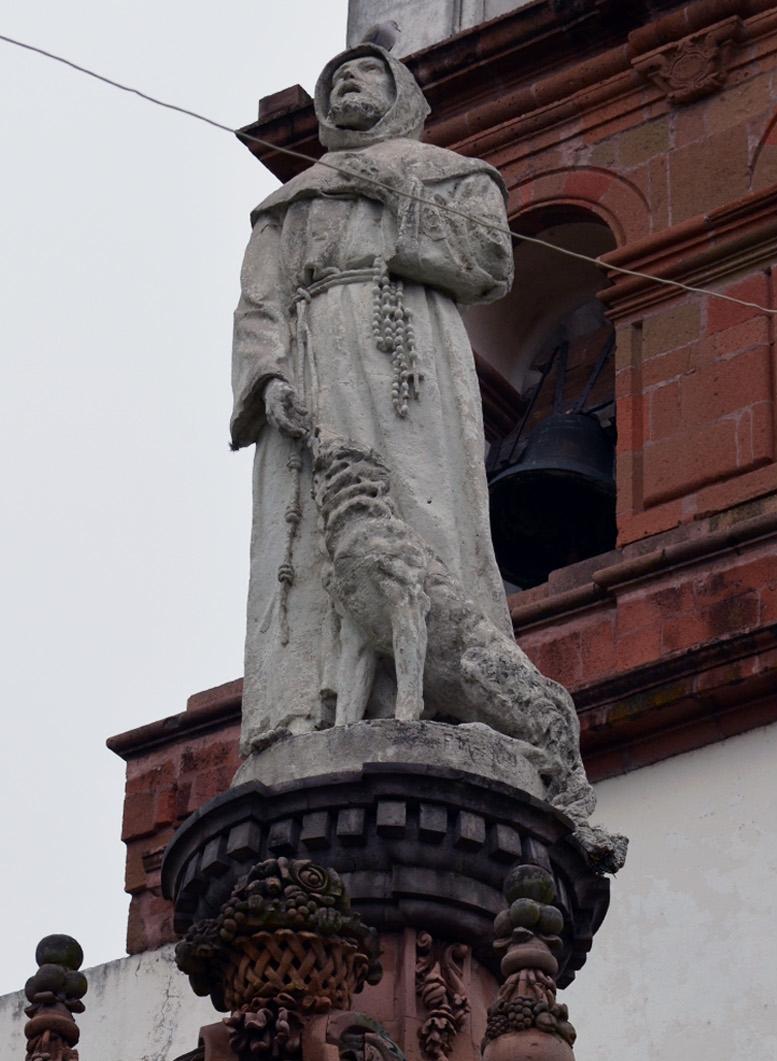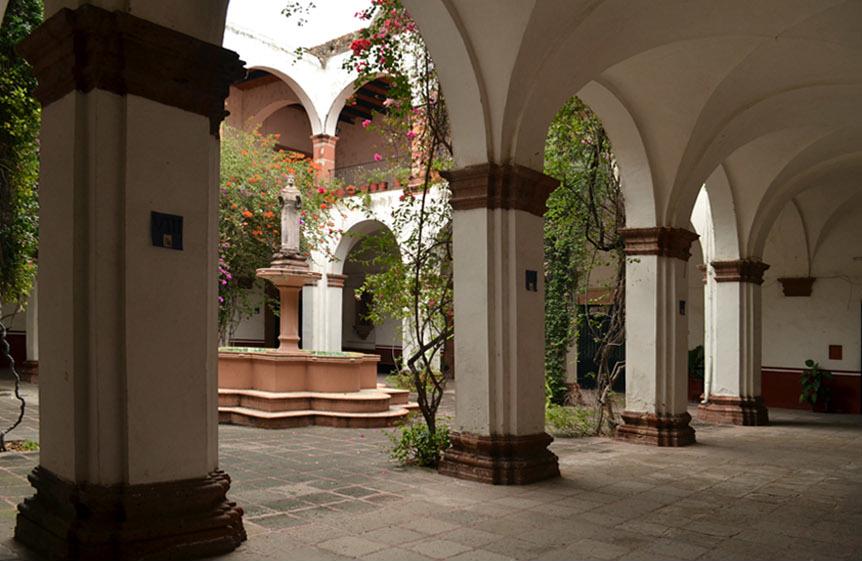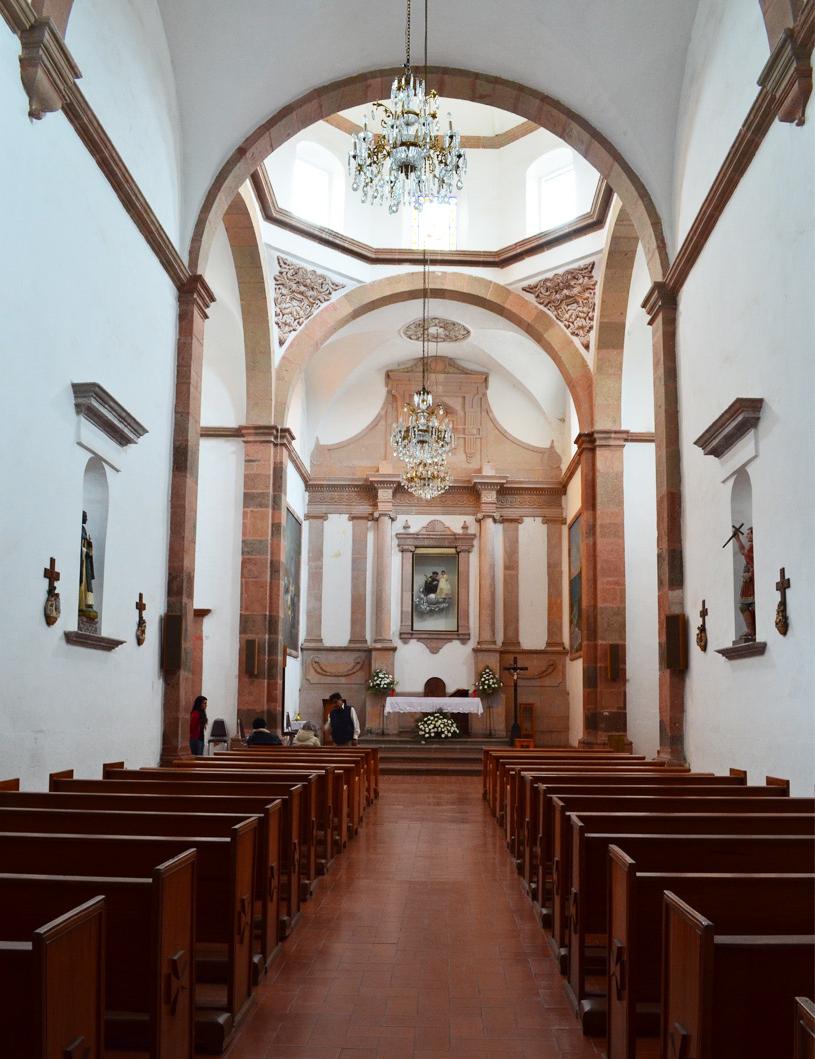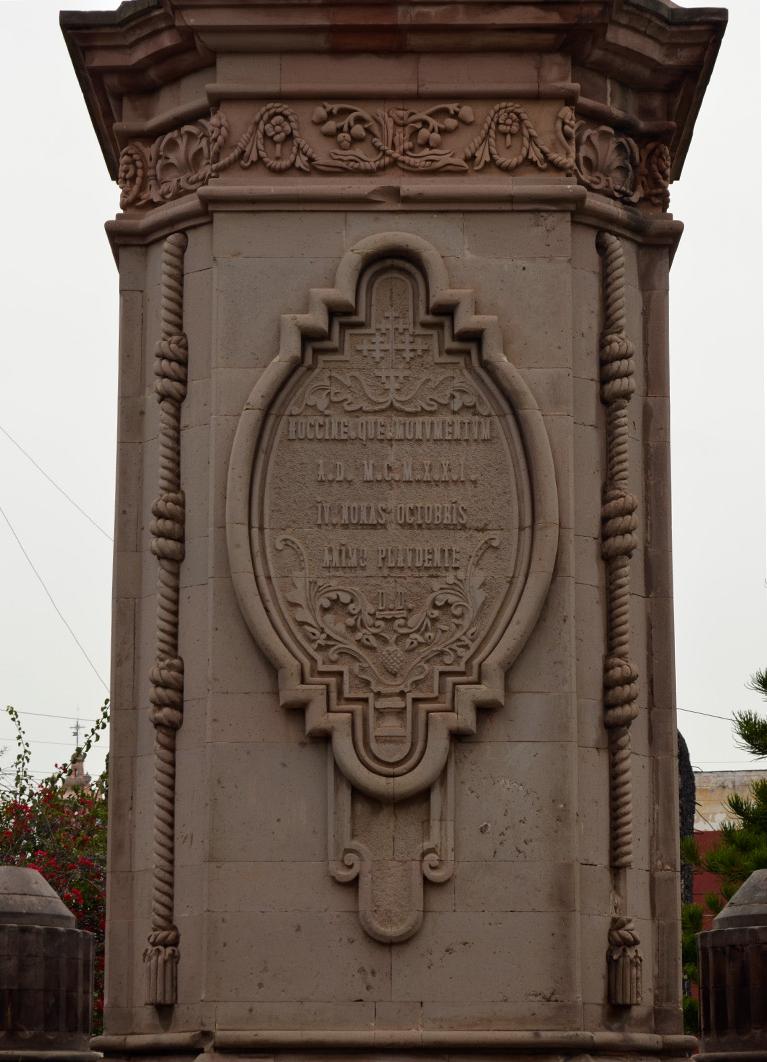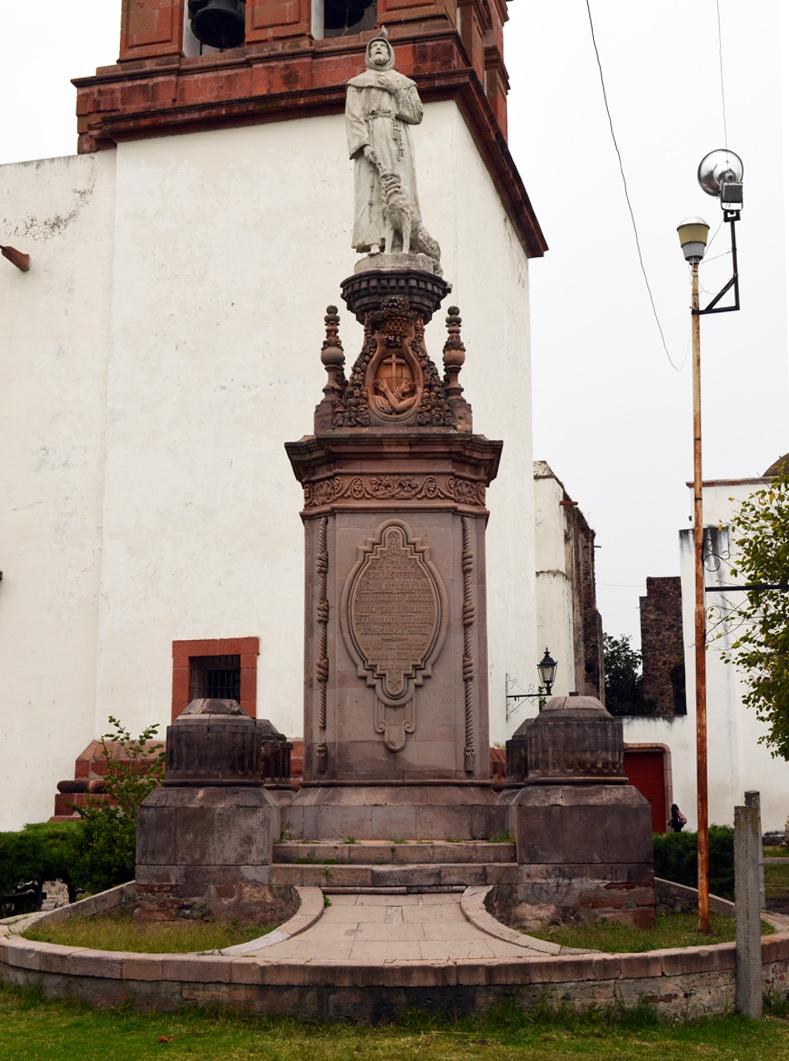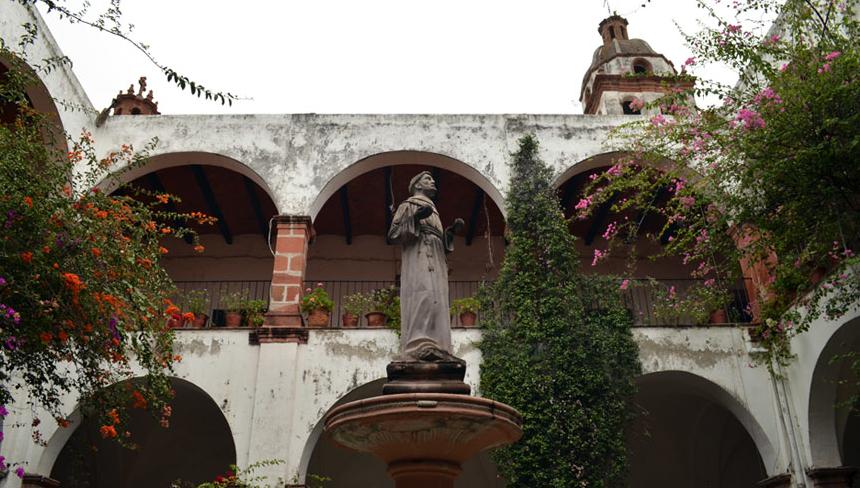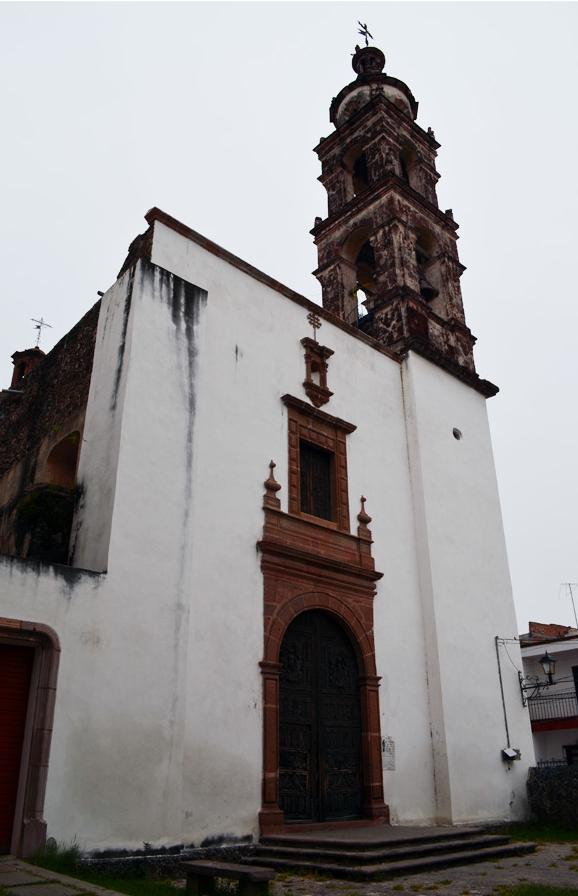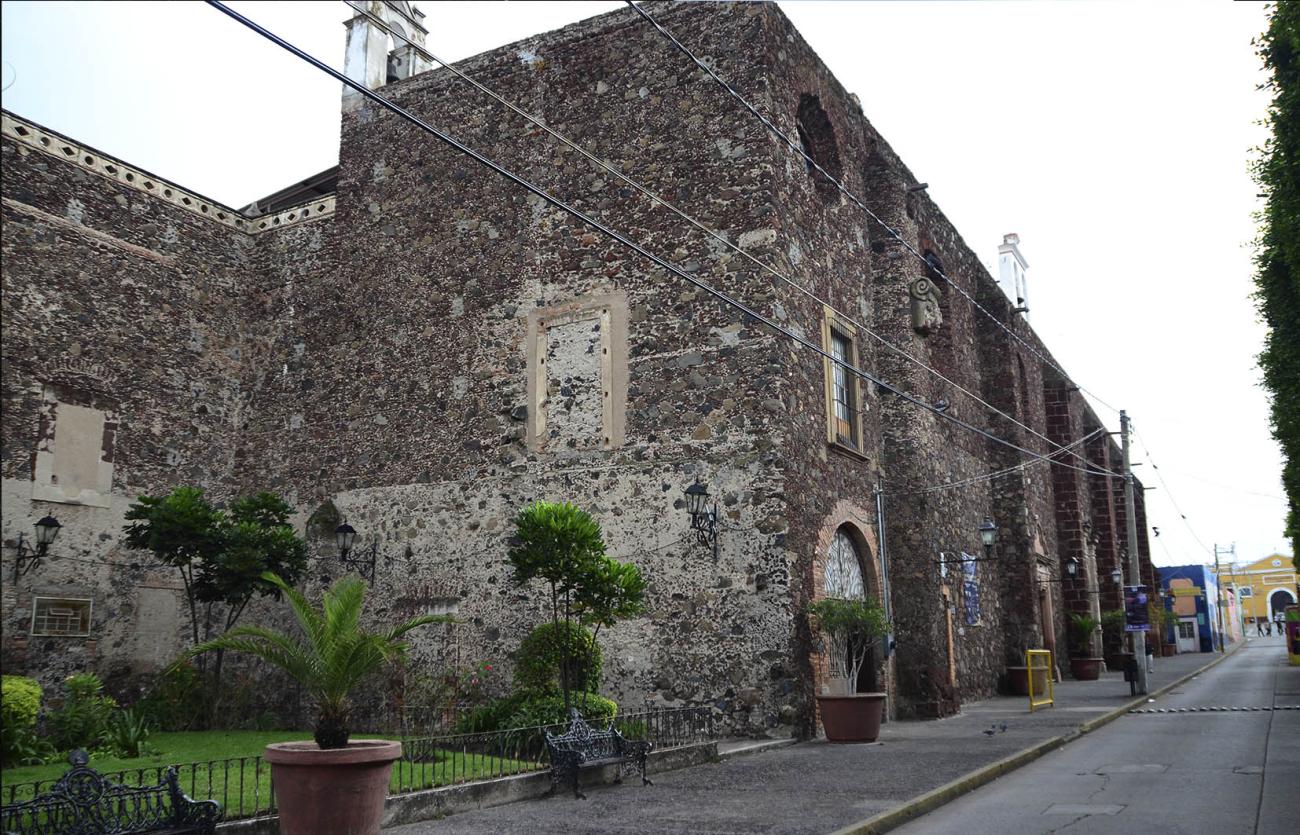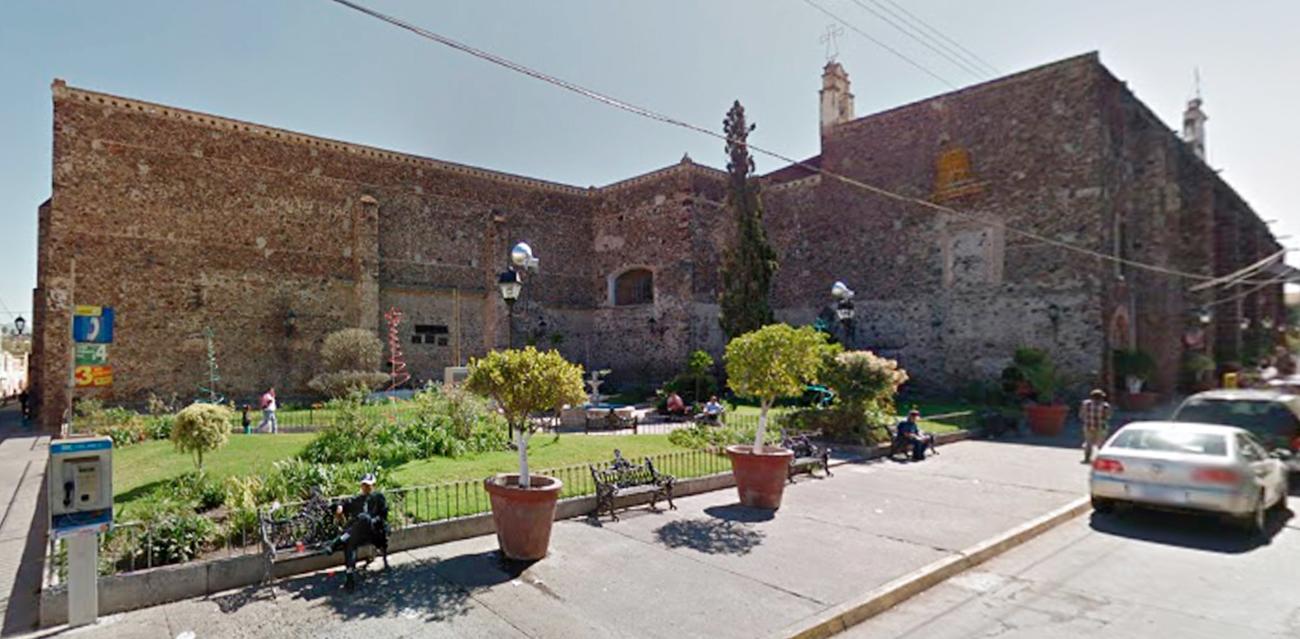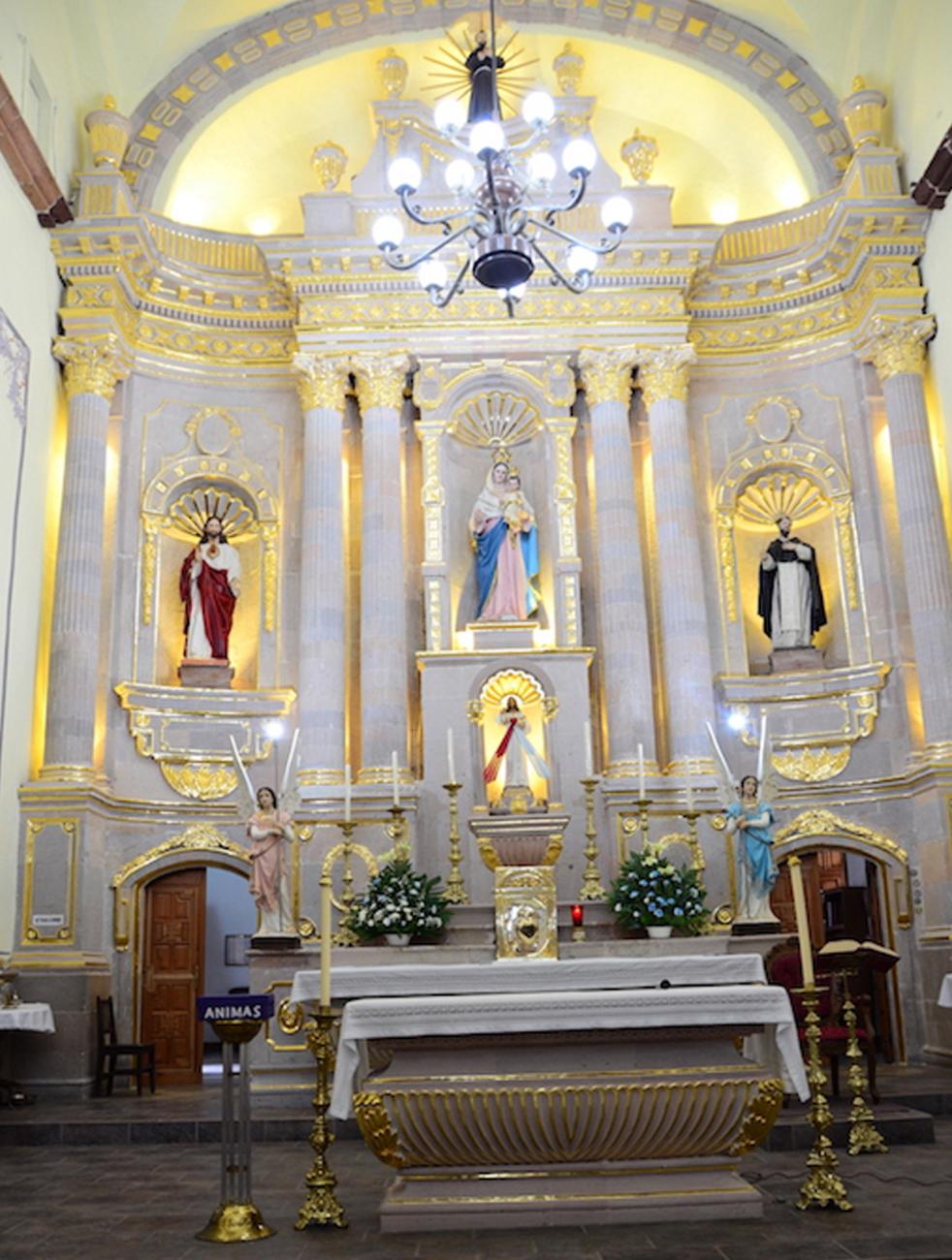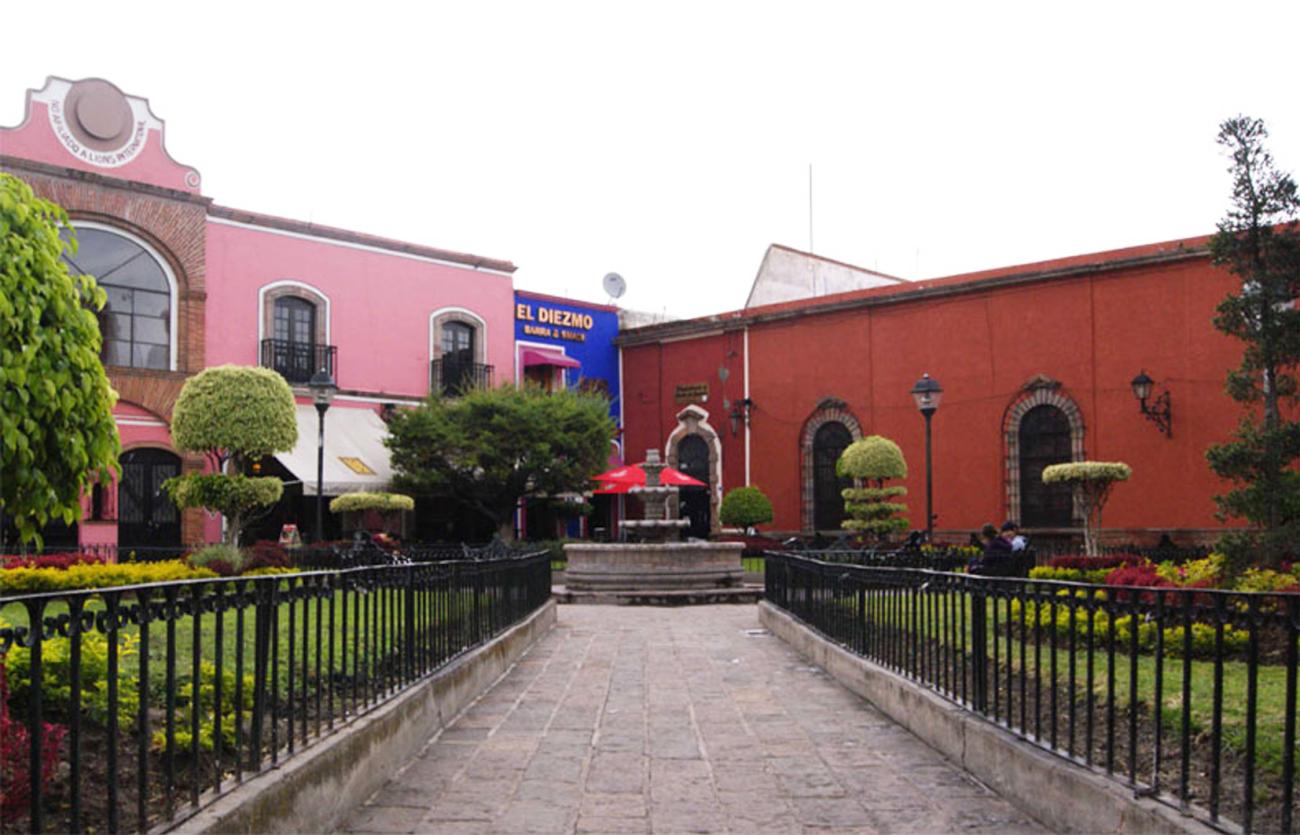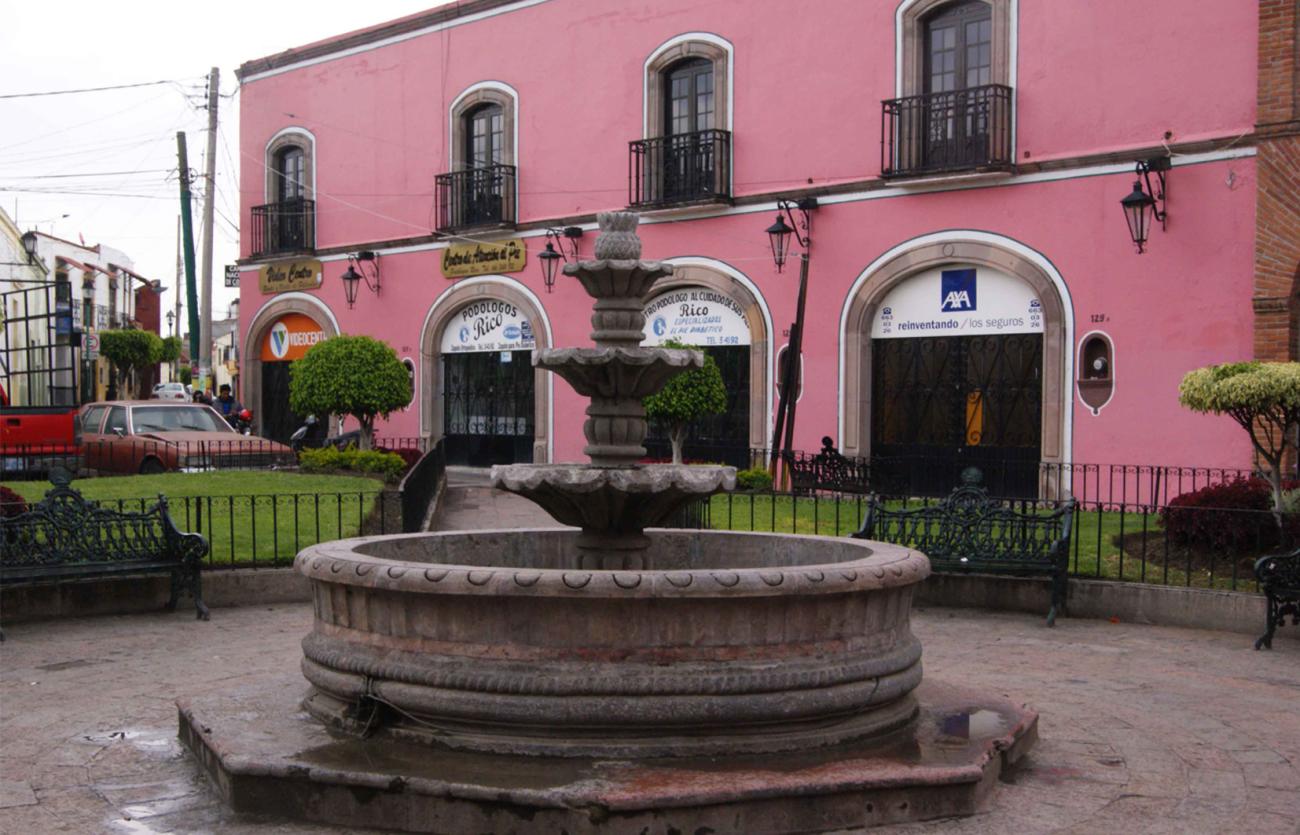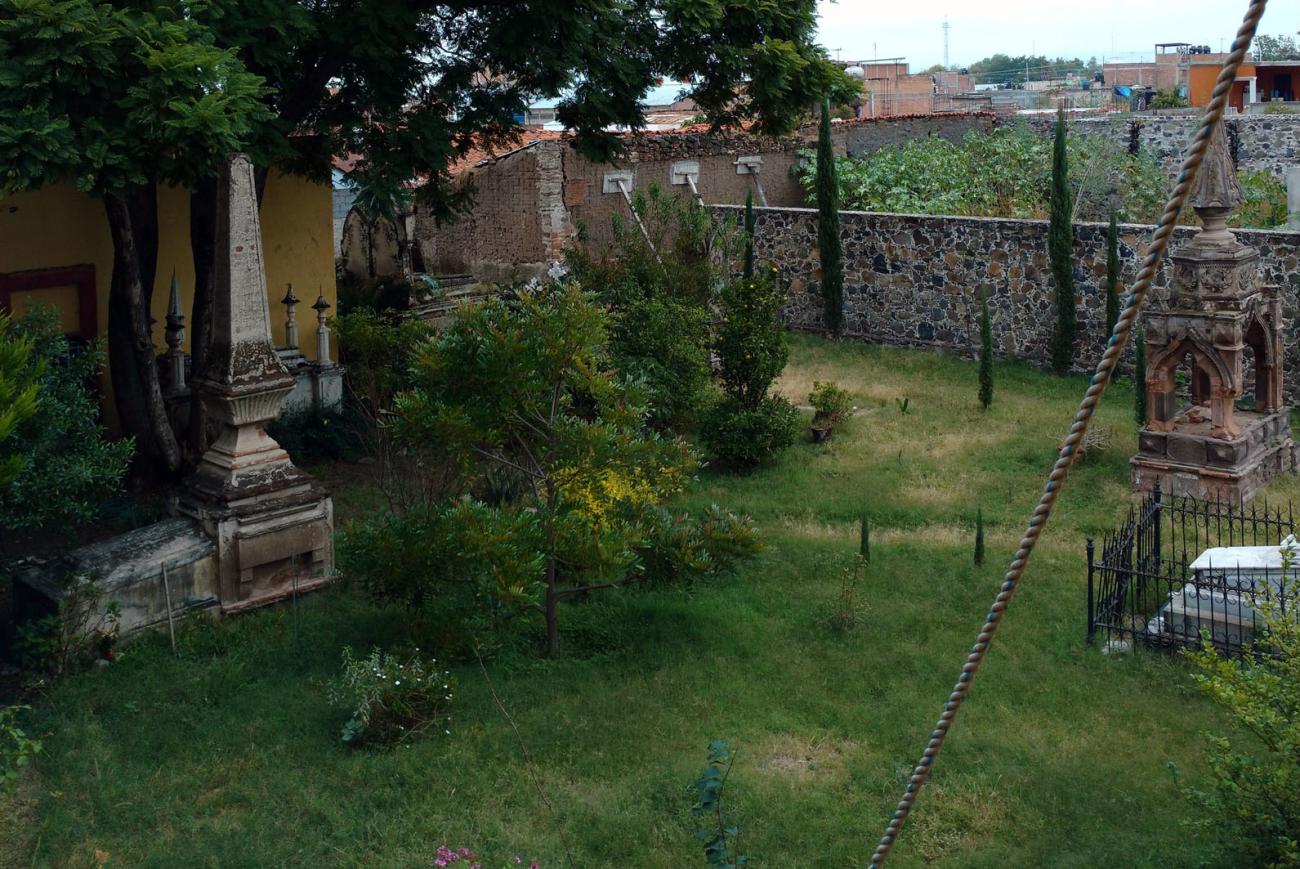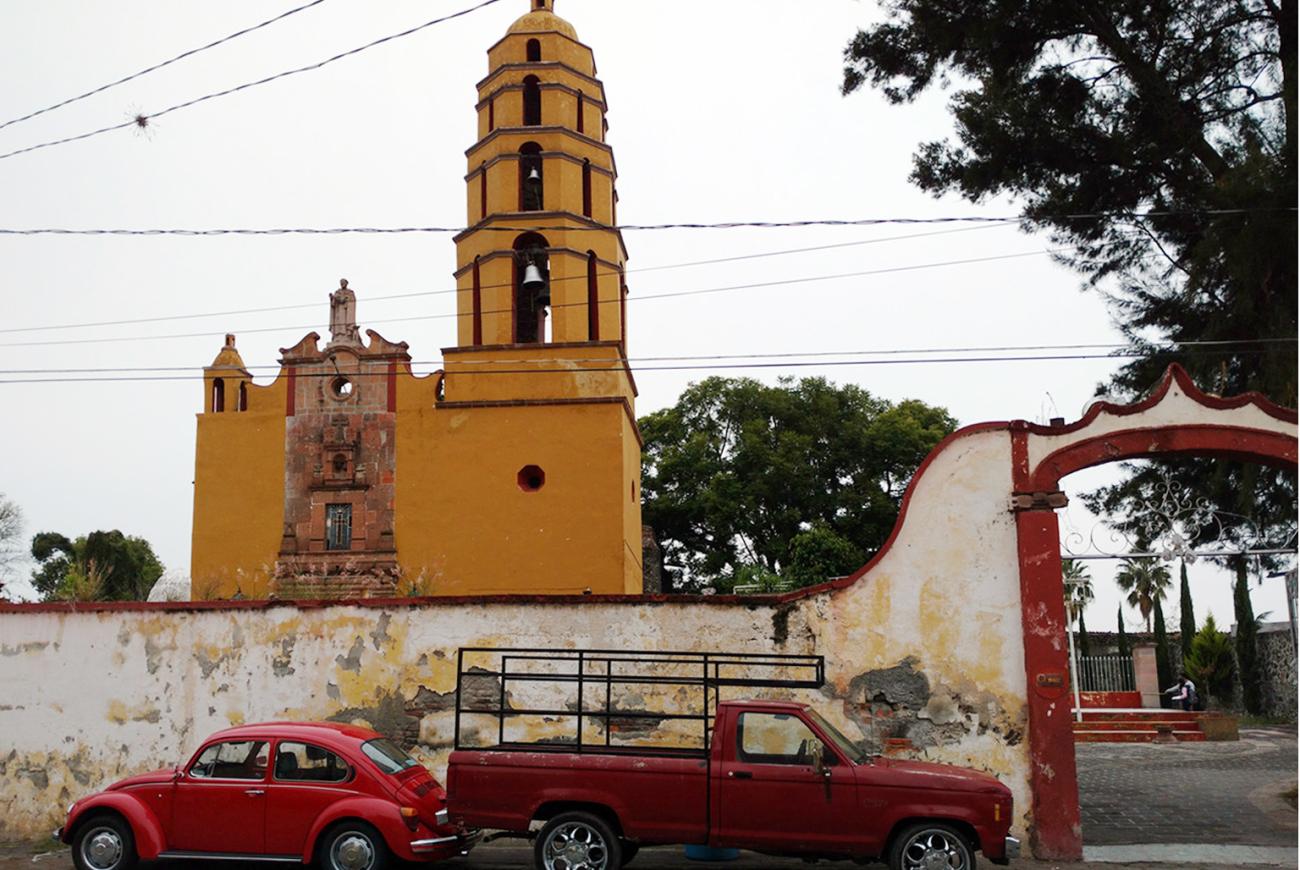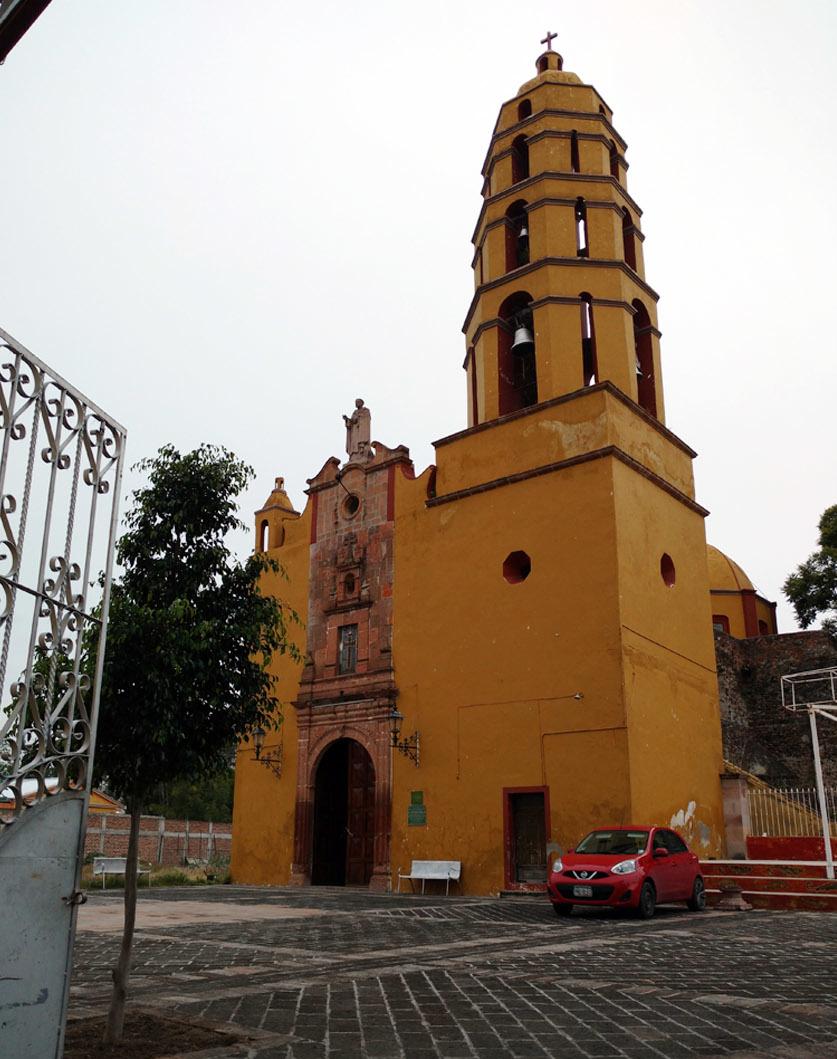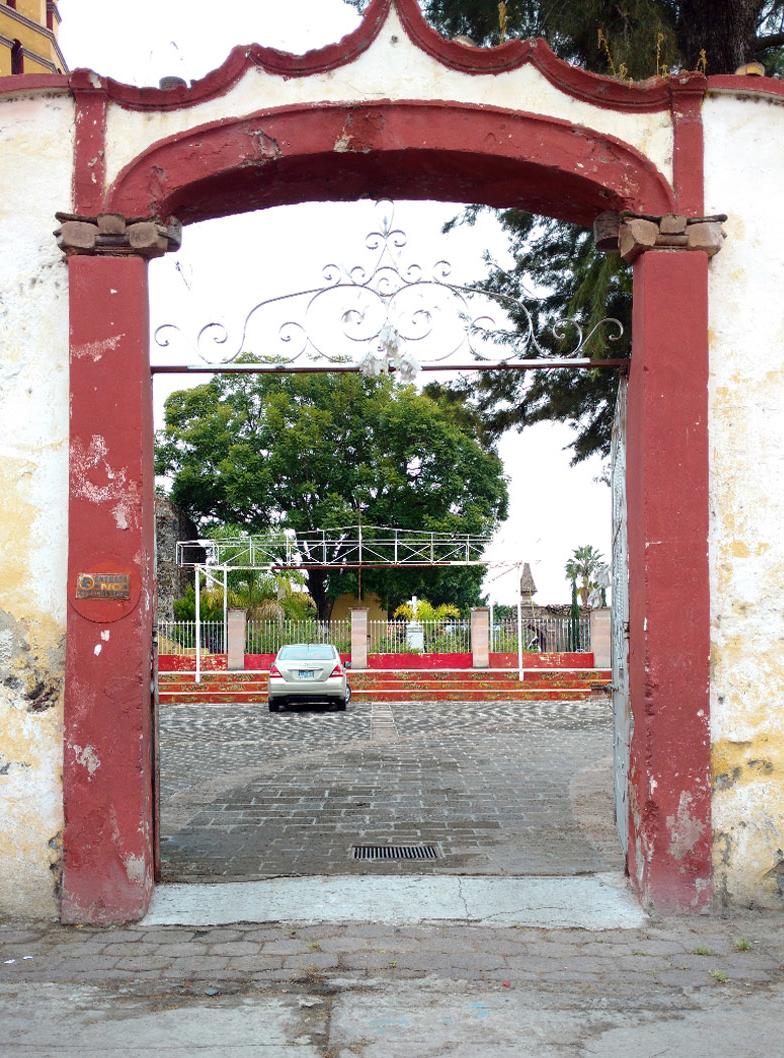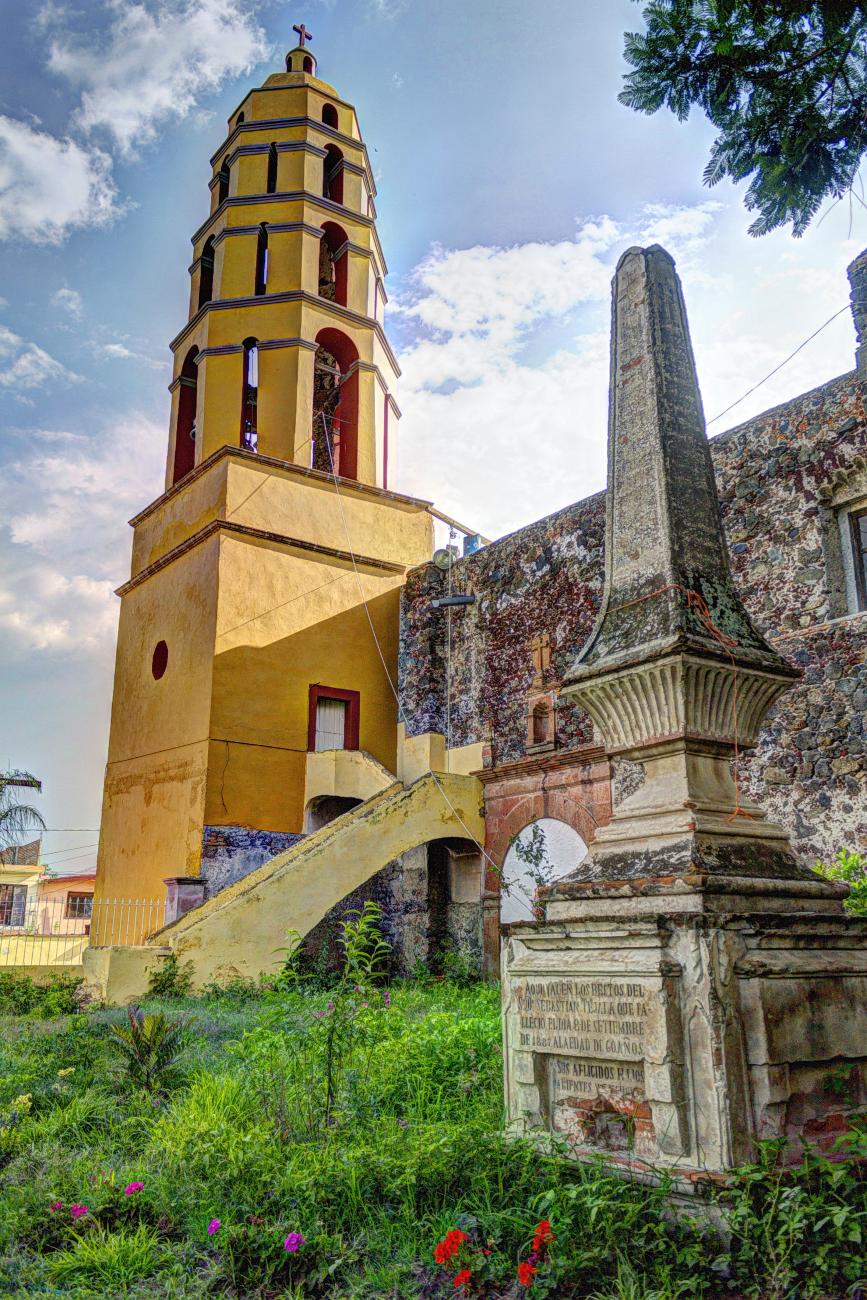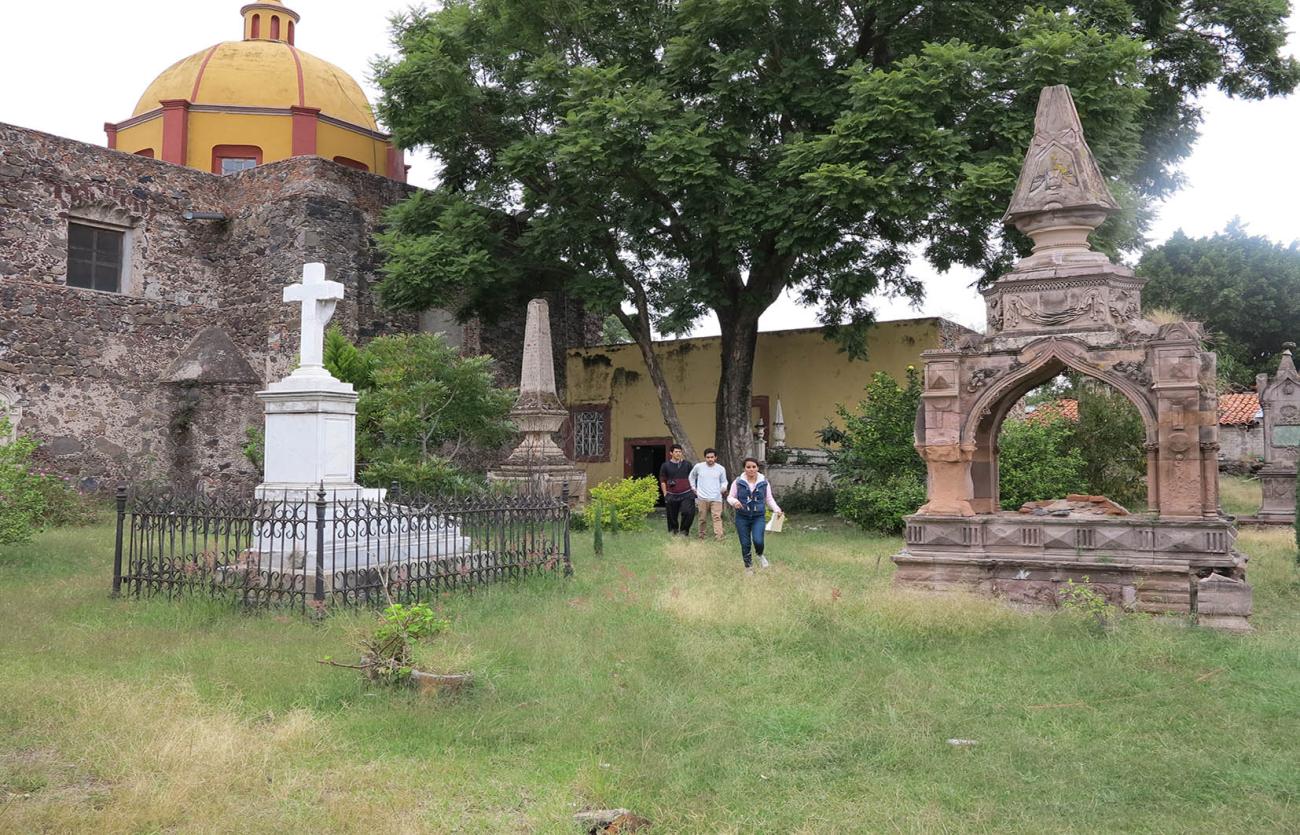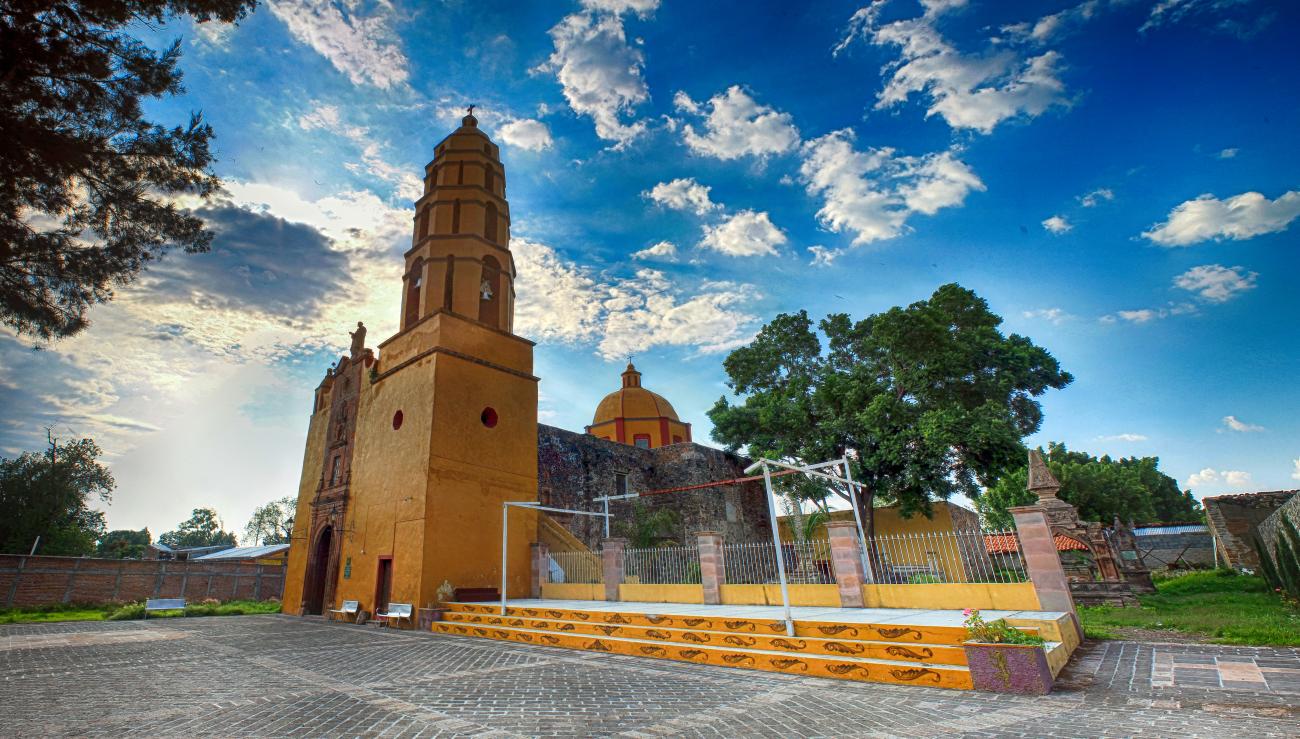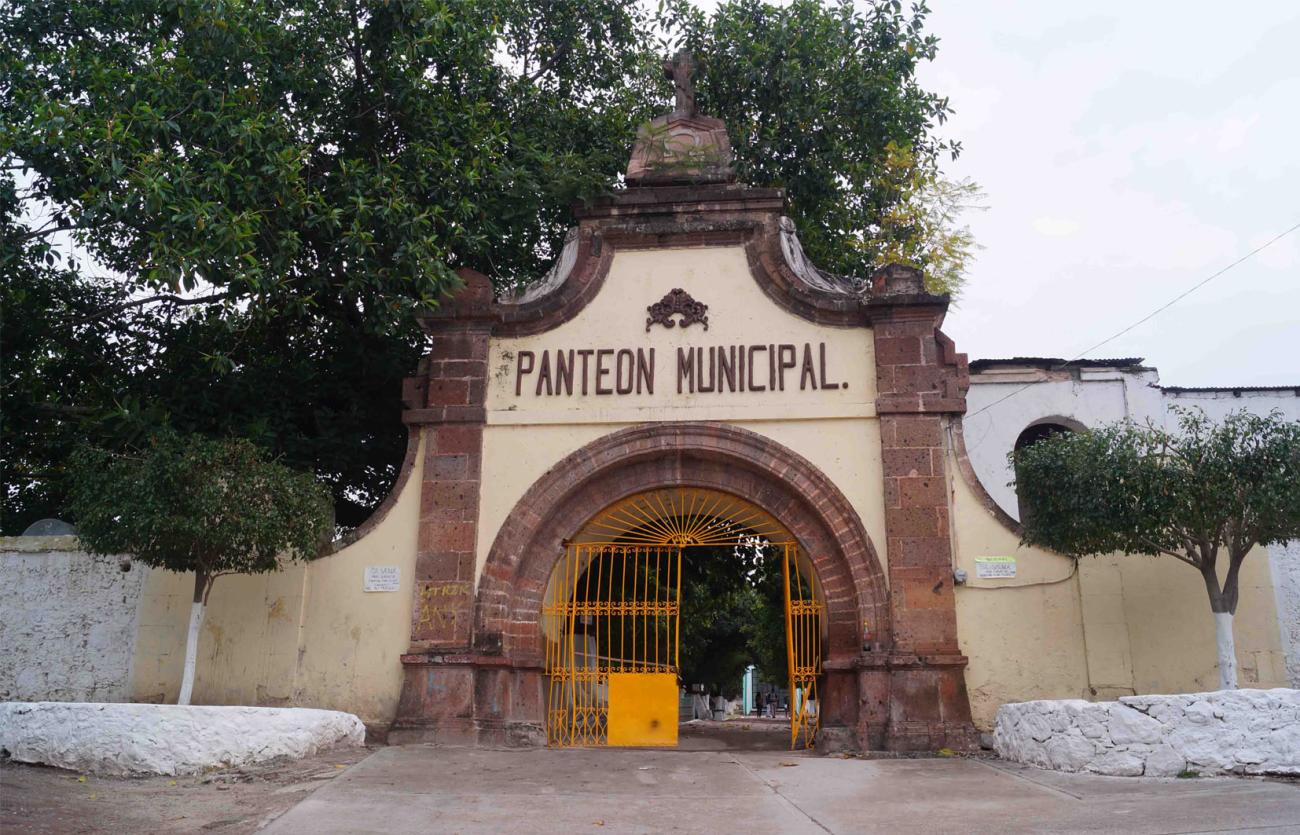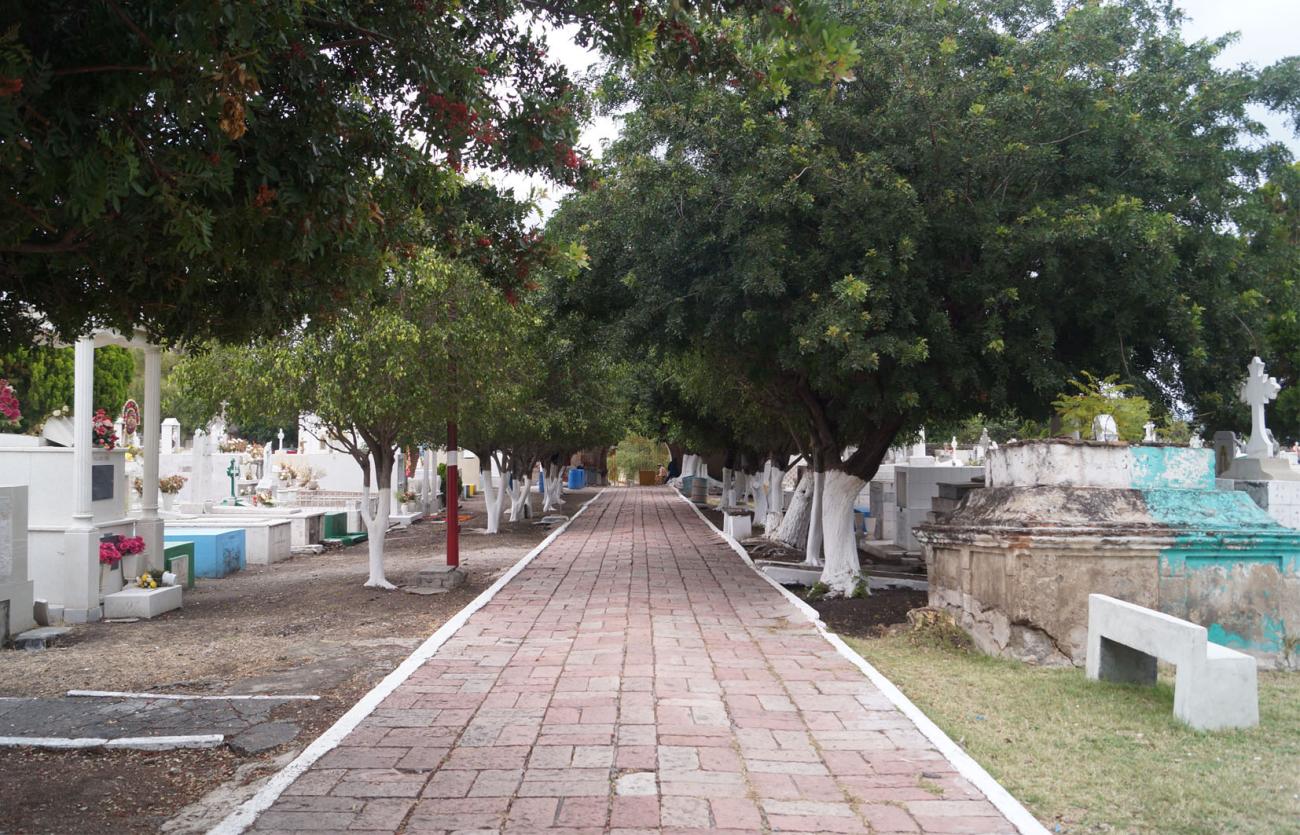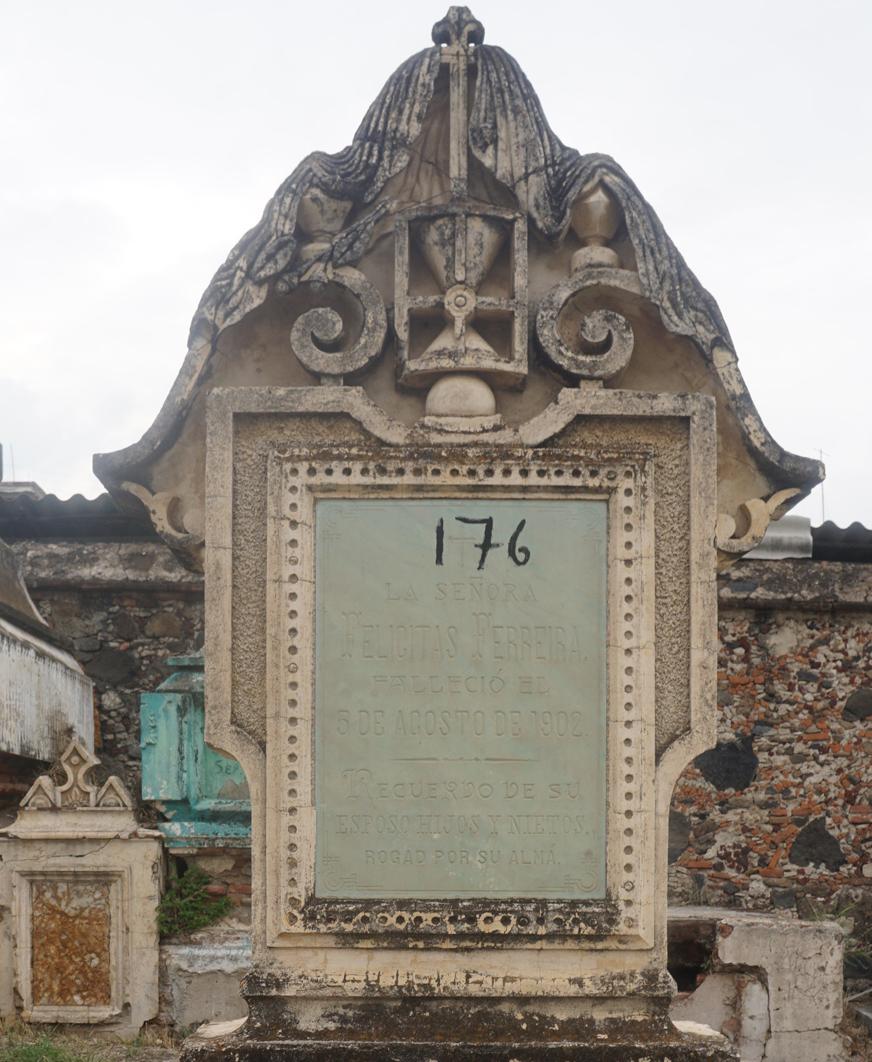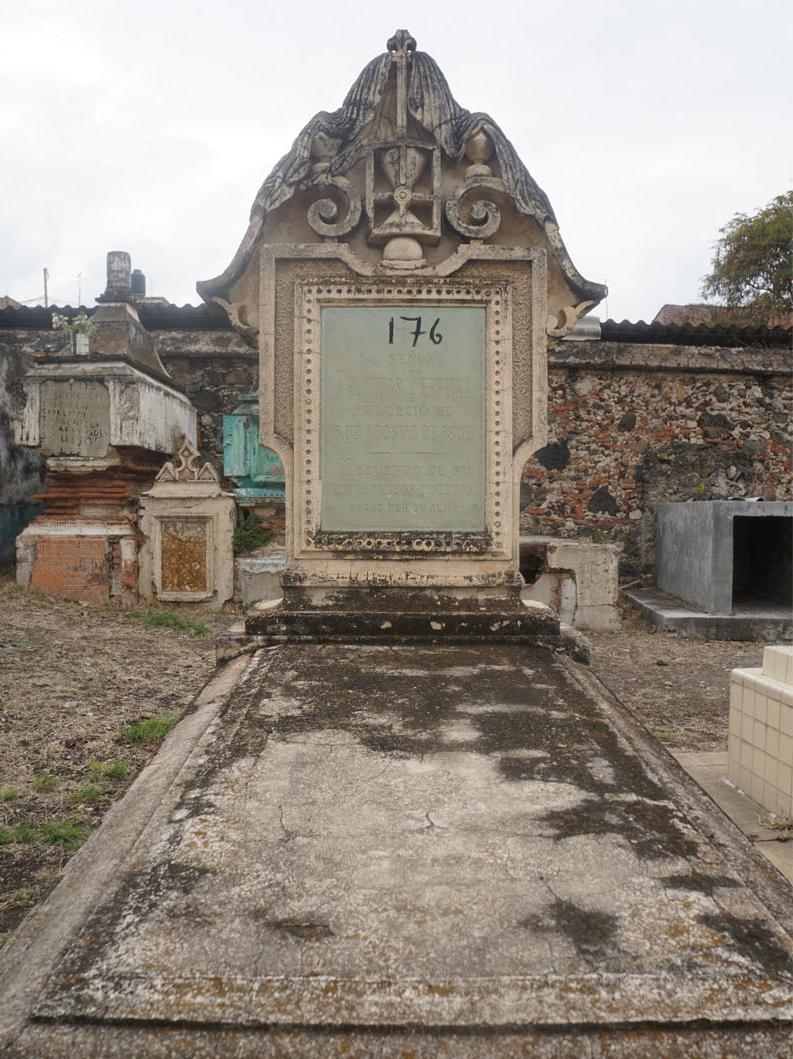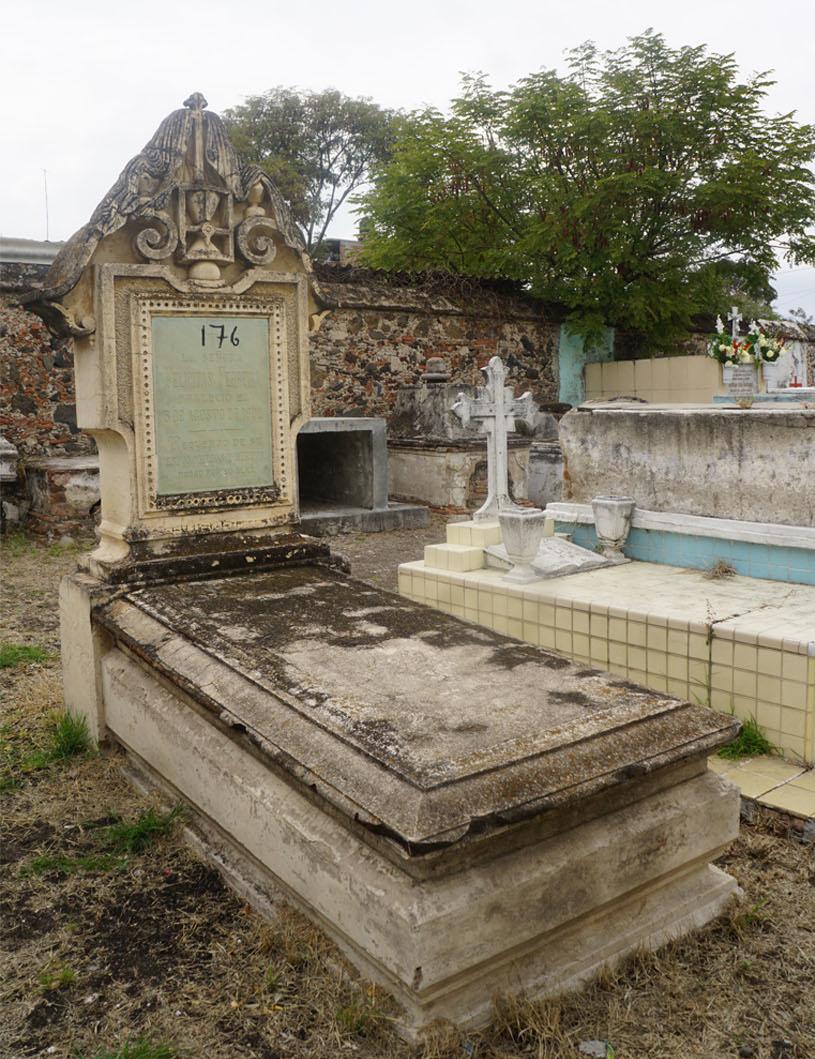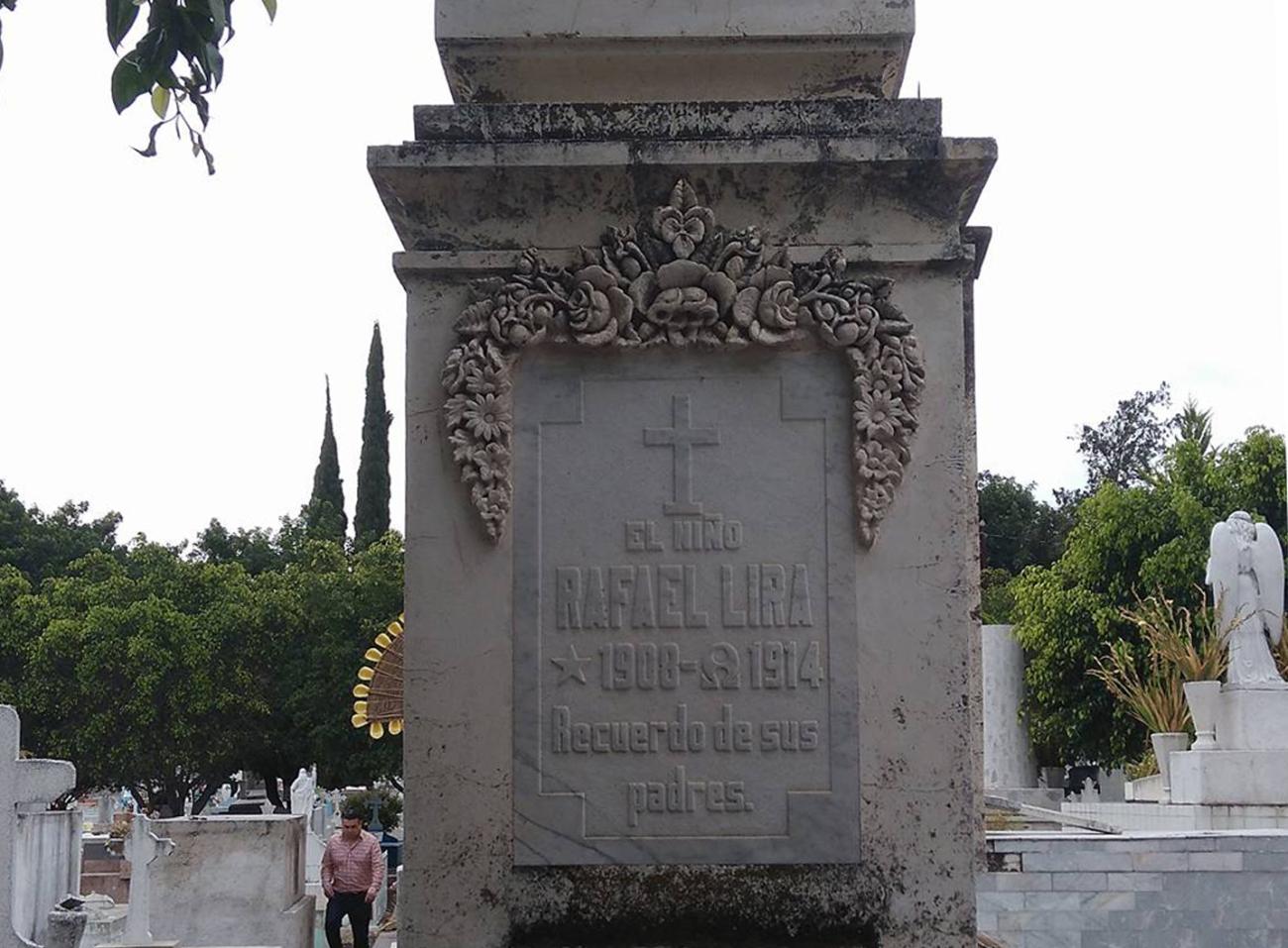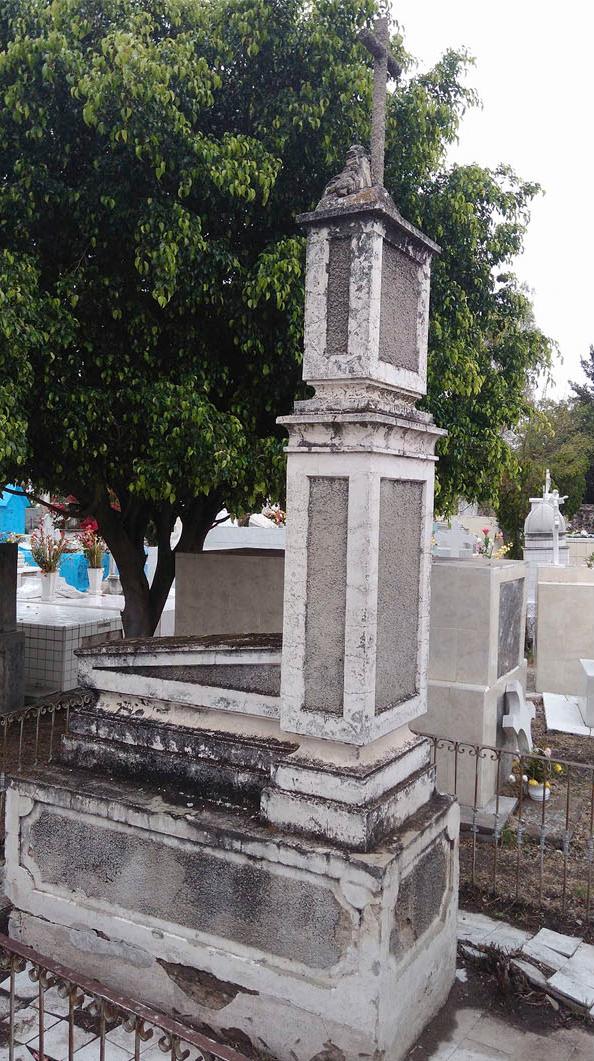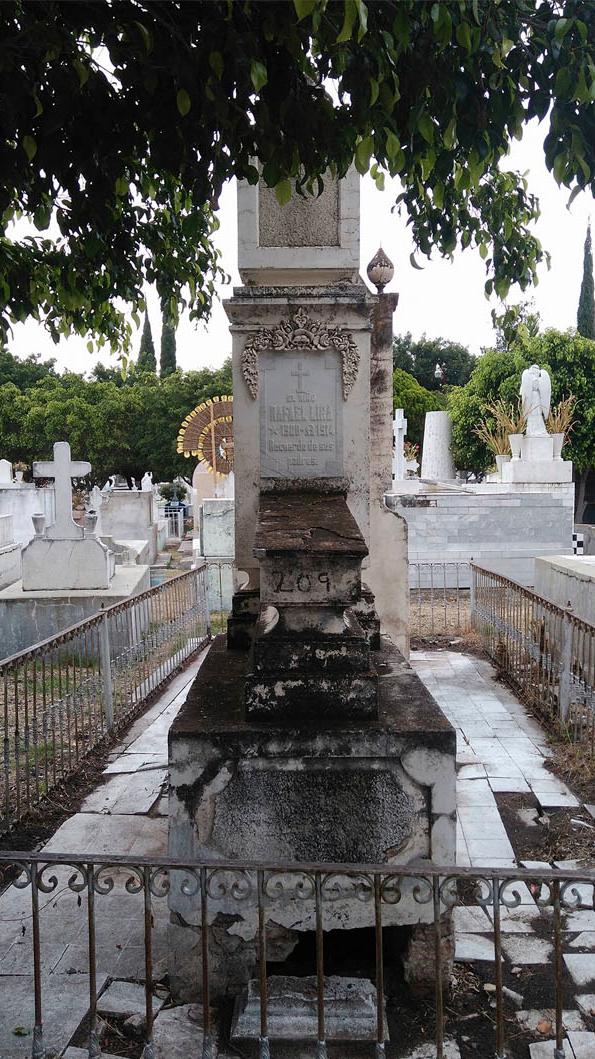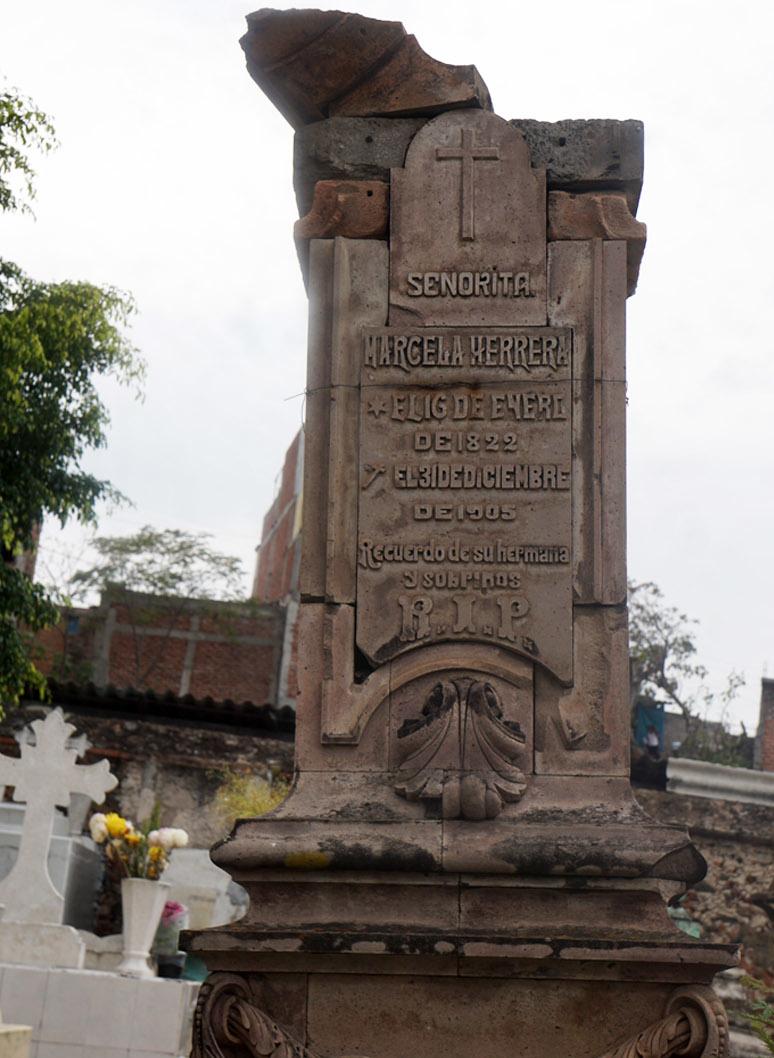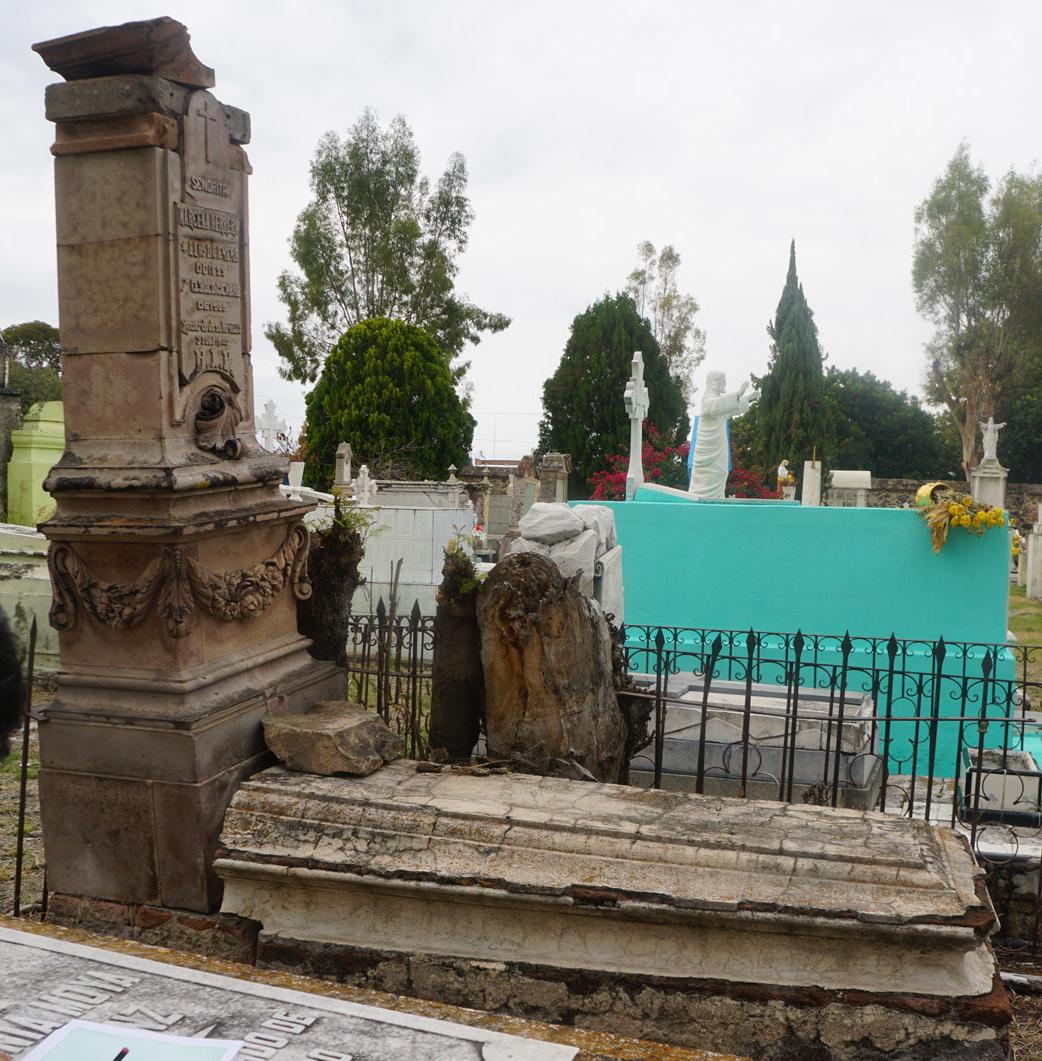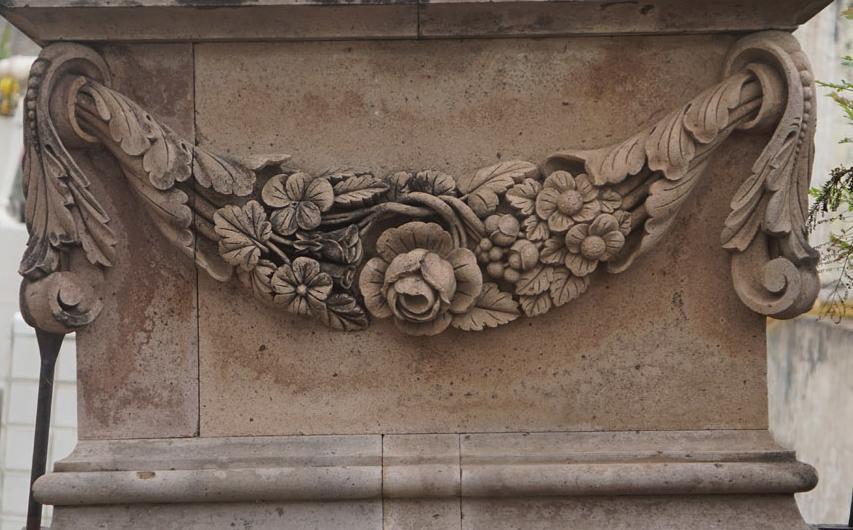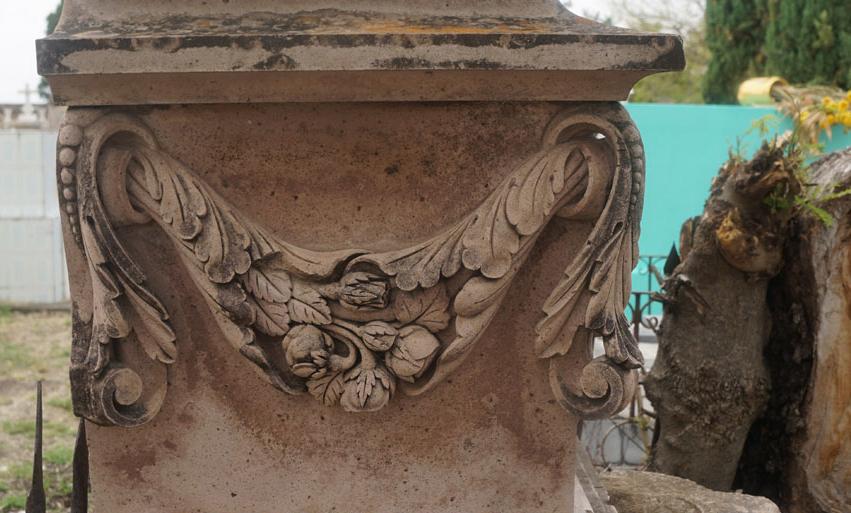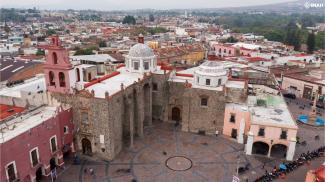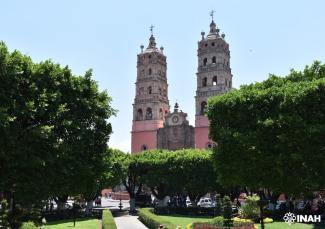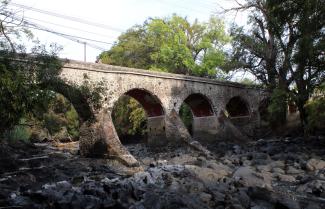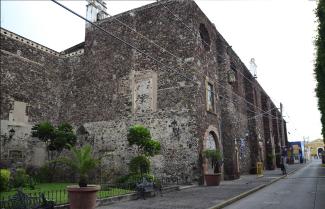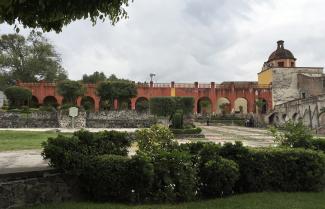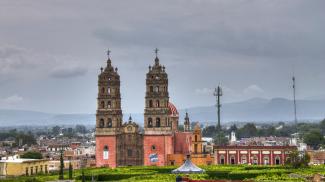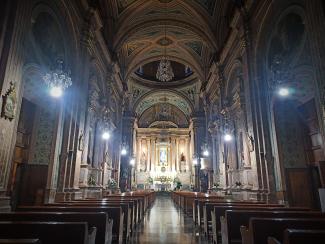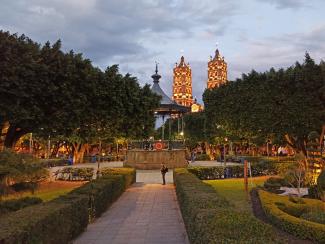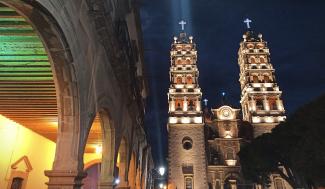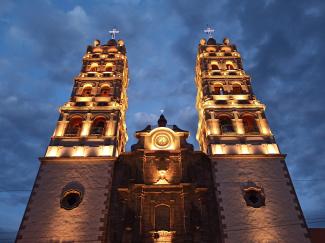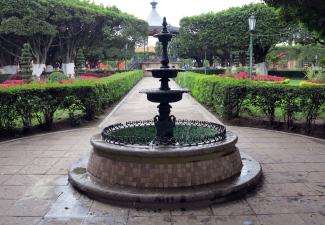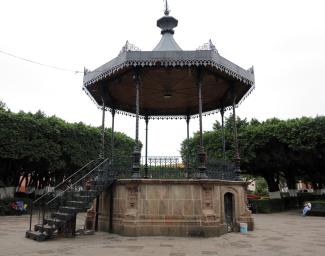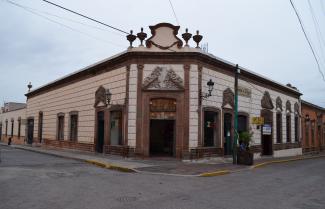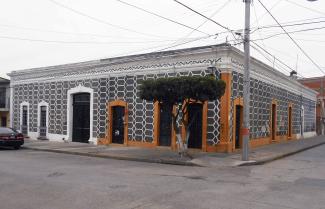Salvatierra
Historical Monuments Zone

Sanctuary of Guadalupe
This 19th-century building was dedicated on January 12, 1938, by parish priest José Espinosa. In 1954, chaplain Julián Cortés initiated its remodeling.
Sanctuary of Guadalupe
This 19th-century building was dedicated on January 12, 1938, by parish priest José Espinosa. In 1954, chaplain Julián Cortés initiated its remodeling.
Architects Horacio Larrea Tinoco and José Manuel Fernández Zavala have noted that the current structure was built over an older foundation, as traces of materials and construction techniques from previous centuries have been found.

René Descartes Institute
A 19th-century building.

Rebozo Factory
A 19th-century building.

Tenerías Mill
A 19th-century building. The hydraulic mill ceased operation in 1970.

“La Purísima” Pharmacy
A 19th-century building.
This one-level 19th-century building features a molded stone frame with a flattened arch closure. Some structures retain triangular pediments decorated with garlands and other organic motifs. The corner is treated in the style of a pancoupé—a chamfered or beveled corner often used in urban architecture to soften building edges.

Hidalgo Market
This 20th-century building began construction on March 8, 1909, on part of the land formerly occupied by the Carmelite convent. The project was initiated by political chief Enrique Montenegro and was completed in 1912. The market was designed by engineer Guillermo de Alva.
n>
Hidalgo Market
This 20th-century building began construction on March 8, 1909, on part of the land formerly occupied by the Carmelite convent. The project was initiated by political chief Enrique Montenegro and was completed in 1912. The market was designed by engineer Guillermo de Alva.
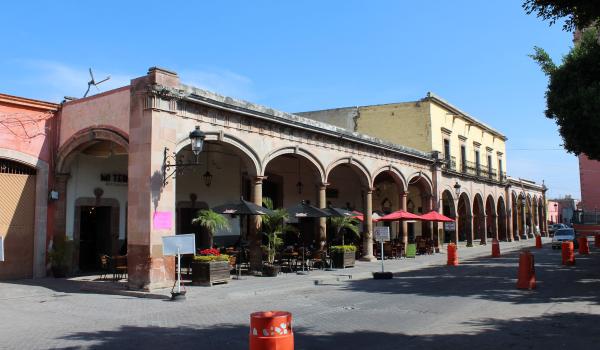
Portal of Light
This portico was built in the late 18th century.
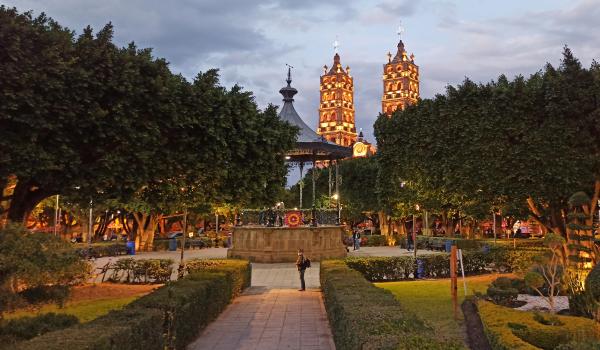
Plaza de la Constitución or Main Garden
The Main Garden was laid out at the time of the city’s founding.
Plaza de la Constitución or Main Garden
The Main Garden was laid out at the time of the city’s founding. During the colonial period, it was known as the Plaza Maior; in the era of independence, it became the Plaza de Armas; and since 1917, it has been called Plaza de la Constitución.
At the end of the 19th century, Ramón Dávalos built a central fountain, leveled and paved the ground, and created the garden beds in the layout still preserved today. In 1907, Benito Soriano Filiberto introduced electric lighting to the plaza.
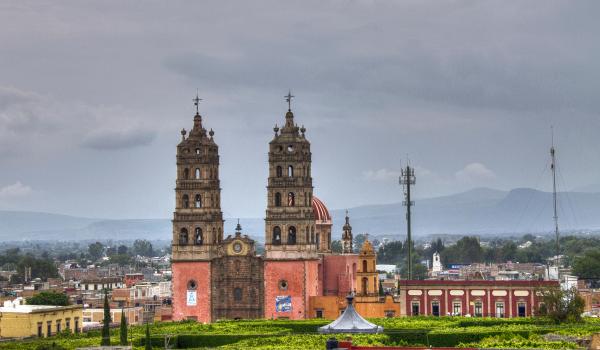
Diocesan Sanctuary of Our Lady of the Light
This 18th-century religious building was constructed to house the image of Our Lady of the Light. The cornerstone was laid on May 3, 1743, and on September 22, 1766, the Bishop of Michoacán, Pedro Anselmo Sánchez de Tagle, declared her Patroness and Protector of Salvatierra.
Diocesan Sanctuary of Our Lady of the Light
This 18th-century religious building was constructed to house the image of Our Lady of the Light. The cornerstone was laid on May 3, 1743, and on September 22, 1766, the Bishop of Michoacán, Pedro Anselmo Sánchez de Tagle, declared her Patroness and Protector of Salvatierra.
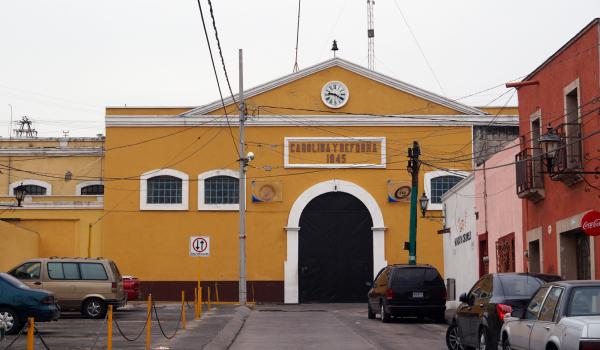
La Carolina and La Reforma Factory
This 19th-century building originally housed a textile factory founded by Patricio Valencia, a native of Salamanca and son of Spanish parents.
La Carolina and La Reforma Factory
This 19th-century building originally housed a textile factory founded by Patricio Valencia, a native of Salamanca and son of Spanish parents. He named the facility La Perla and used the site of the former Molino de la Esperanza, taking advantage of its ample land and the abundant water supply from river-fed canals, to produce cotton fabrics such as mantas, camballas, and cotones. When his son-in-law Eusebio González took over management, he renamed the factory La Reforma, in support of the national progress championed by President Benito Juárez.
On April 13, 1913, a fire caused by a short circuit destroyed the factory. A new company was formed on April 21, 1917, to restart operations. In 1929, the property was purchased from the Negociación Fabril de la Reforma, and by May 1932, the production systems were fully reinstalled. The factory officially resumed operations on December 15 of that same year.

Guerrero Portico
This 19th-century building is known as the Guerrero Portico.
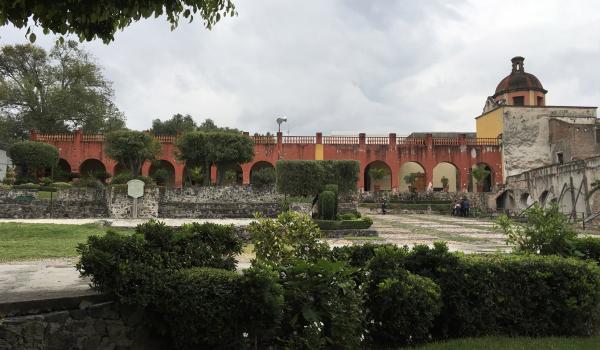
Former Marquisate of Salvatierra
On May 16, 1618, Diego Fernández de Córdoba, Marquis of Guadalcázar and Viceroy of New Spain, granted Gabriel López de Peralta a mill.
Former Marquisate of Salvatierra
On May 16, 1618, Diego Fernández de Córdoba, Marquis of Guadalcázar and Viceroy of New Spain, granted Gabriel López de Peralta a mill. In 1643, Gabriel offered lands for livestock and cavalry for the founding of the city, on the condition that he be recognized as the founder and granted a hereditary title. This title was eventually bestowed upon his great-granddaughter, Francisca Catalina Jerónima López de Peralta Sámano Turcios Luyando y Bermeo.
The marquises later chose to build the Marquisate on the lands of the former entailed estate, preserving only the original mill.
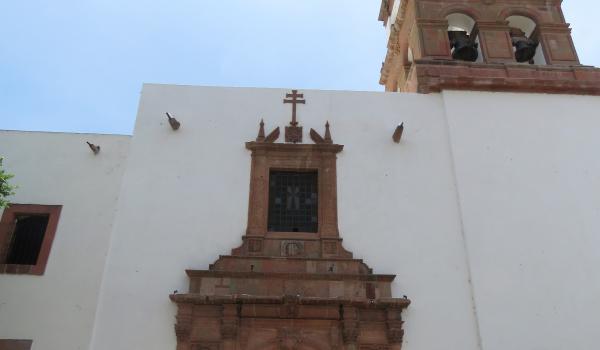
Religious Complex of San Francisco
On June 13, 1638, Juan Gómez Bermejo donated a hall measuring 28 varas (about 23 meters) in length, located in front of an old Franciscan chapel, and on December 28 of the same year, it was established as a parish.
Religious Complex of San Francisco
On June 13, 1638, Juan Gómez Bermejo donated a hall measuring 28 varas (about 23 meters) in length, located in front of an old Franciscan chapel, and on December 28 of the same year, it was established as a parish. The church was dedicated shortly before, on November 30, 1638.
Some years later, the Franciscans sold the site to the Brothers of the Third Order, who built the present-day Church of San Antonio. On February 2, 1643, the Bishop of Michoacán, Marcos Ramírez de Prado, formally established the parish.
The current church and convent of San Buenaventura were built on land donated by Juan Izquierdo, the alcalde mayor of Chochones.
During the Reform period, the convent was vacated and its roof dismantled; it remained abandoned for forty years. For a time, it was known as “The Ruins of San Francisco.” However, when the Franciscan friars returned, they undertook a gradual reconstruction of the complex, giving it the appearance it has today.

Parish of Our Lady of the Rosary and Convent of the Capuchin Nuns
This 18th-century building traces its origins to José Ignacio de Polanco, who arrived in Salvatierra with plans to purchase several haciendas and establish an entailed estate protected by a royal decree.
Parish of Our Lady of the Rosary and Convent of the Capuchin Nuns
This 18th-century building traces its origins to José Ignacio de Polanco, who arrived in Salvatierra with plans to purchase several haciendas and establish an entailed estate protected by a royal decree. After his death, his sole heir, Petra de Polanco, was unable to retain her considerable inheritance because she had taken vows of poverty under the name Sister María Inés at the Capuchin Poor Clares convent in Santiago de Querétaro. In honor of her father, she founded a convent of her order in Salvatierra.
King Carlos III granted permission for the foundation on October 11, 1767. The original design was created by Joaquín de Heredia but was later modified to reflect the regional Baroque style of Querétaro. On the morning of June 11, 1798, the first seven nuns left Querétaro to establish the new convent. The monastery was dedicated to the Immaculate Conception, and the church to the Seraphic Father Saint Francis. Construction was completed in the first half of the 19th century.
In 1862, the orchards of the former convent were ceded to the City Council, and in 1886, an agreement was made to convert the building into the Manuel González Civil Hospital. Later, the municipal slaughterhouse was installed in the old orchards.
After the hospital was vacated in 1946, a parish school for children was established there, later renamed José María Morelos. Between 1961 and 1963, the chaplain’s house was demolished to create the Hermandad Plaza.
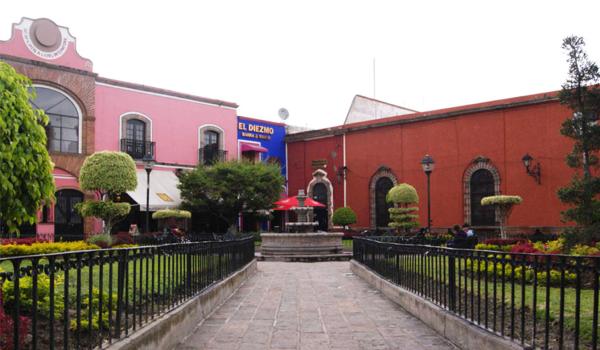
April 2nd Plaza
This 19th-century site is known as April 2nd Plaza.

Religious Complex of Santo Domingo
This 18th-century building began with the construction of a stone chapel in 1737, using stone quarried from the riverbed. This chapel now serves as the annex to the current church.
Religious Complex of Santo Domingo
This 18th-century building began with the construction of a stone chapel in 1737, using stone quarried from the riverbed. This chapel now serves as the annex to the current church. Between 1750 and 1753, the choir vault, main façade, and side portals were built, with the entire complex completed on August 3, 1793.
In 1767, Friar José Morales of the Order of Preachers (Dominicans) arrived to request the founding of a hospice. During its establishment, a building was constructed next to the Chapel of Christ, known as the Lord of Clemency.
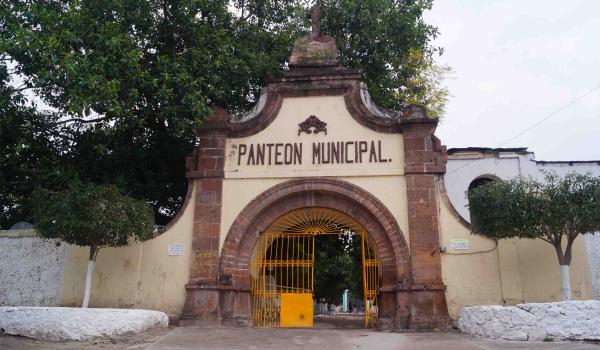
Municipal Cemetery of Salvatierra
This 19th-century site traces its origins back to November 7, 1653, when the city council requested land from the Carmelite religious order at the San Elías pasture, where the municipal cemetery was established. During the Porfiriato era, from 1879 to 1886, the San Elías cemetery was renovated.
Municipal Cemetery of Salvatierra
This 19th-century site traces its origins back to November 7, 1653, when the city council requested land from the Carmelite religious order at the San Elías pasture, where the municipal cemetery was established. During the Porfiriato era, from 1879 to 1886, the San Elías cemetery was renovated. In 1893, a typhus epidemic devastated the population, prompting health authorities to build a mortuary chapel within the cemetery so that the deceased would no longer be mourned at home. In 1966, thanks to the initiative of Luis Ferreira, a new chapel was constructed to replace the one built at the end of the 19th century.


